| Sr. No. | Products | Remark | |
|---|---|---|---|
| Cement | |||
| 1 |
 Ordinary Portland Cement
Ordinary Portland CementIS 269: 2015 |
All models and brands of Ordinary Portland Cement are classified under IS 269: 2015 and are required to get ISI Certification before its launch or import into the Indian market. ISI Certification will be provided to the product manufacturers (whether Indian or non-Indian) only and not provided to trader, dealer or distributor of the product. |
|
| 2 |
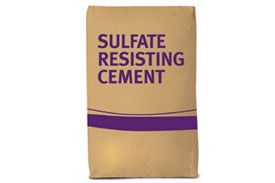 Sulphate Resisting Portland Cement
Sulphate Resisting Portland CementIS 12330: 1988 |
Portland cement, which includes sulphate-resistant cement, has a lower percentage of tricalcium aluminate, tetracalcium almuinoferrite, and a higher percentage of tricalcium silicate. This mixture gives sulphate-resistant cement a remarkable ability to withstand sulphate-related difficulties when used in concrete constructions. This composition also promotes the production of calcium light. |
|
| 3 |
 Low Heat Portland Cement
Low Heat Portland CementIS 12600: 1989 |
Compared to ordinary Portland cement, Low Heat Portland Cement (LHPC) is a specific variety of Portland cement that is intended to produce less heat during the hydration process. Clinker, the main raw material used in the creation of cement, is chemically altered in order to create this cement. |
|
| 4 |
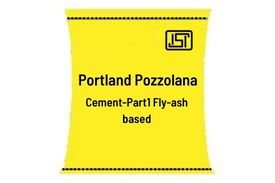 Portland Pozzolana Cement-Part1 Fly-ash based
Portland Pozzolana Cement-Part1 Fly-ash basedIS 1489 (Part-1):2015 |
All models and brands of Portland Pozzolana Cement-Part1 Fly-ash based are classified under IS 1489 (Part-1):2015 and are required to get ISI Certification before its launch or import into the Indian market. ISI Certification will be provided to the product manufacturers (whether Indian or non-Indian) only and not provided to trader, dealer or distributor of the product. |
|
| 5 |
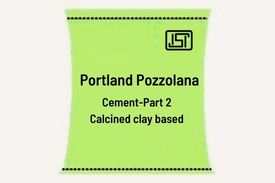 Portland Pozzolana Cement-Part 2 Calcined clay based
Portland Pozzolana Cement-Part 2 Calcined clay basedIS 1489 (Part-2): 2015 |
Portland Pozzolana Cement is a type of Blended Cement that is made by either grinding OPC clinker, gypsum, and pozzolanic materials separately and then thoroughly blending them in predetermined proportions, or by grinding OPC clinker, gypsum, and fly ash separately. |
|
| 6 |
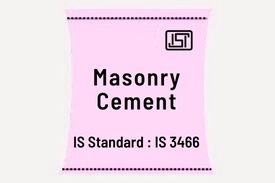 Masonry Cement
Masonry CementIS 3466: 1988 |
Masonry cement is a special kind of cement used in specific proportions with water and sand to create a strong mortar. It is made by mixing and grinding waste materials that are either non-pozzolanic (inert) or pozzolanic (cement clinker). It also includes air-entraining plasticizers and gypsum in the proper amounts. For masonry building to be both structurally sound and aesthetically pleasing, masonry cement is essential. |
|
| 7 |
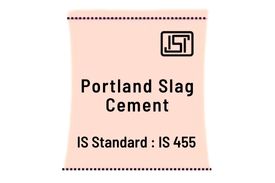 Portland Slag Cement
Portland Slag CementIS 455: 2015 |
Granulated blast furnace slag (GBFS) and Ordinary Portland Cement (OPC) clinker are combined to create Portland Slag Cement (PSC), a type of blended cement. PSC is made from finely powdered slag, a by-product of the iron and steel industries, combined with gypsum and OPC clinker. Portland slag cement should contain a minimum of 25% and a maximum of 65% slag. |
|
| 8 |
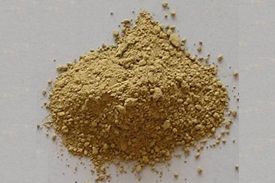 High Alumina Cement for Structural Use
High Alumina Cement for Structural UseIS 6452: 1989 |
Elevated Alumina Cement, sometimes referred to as calcium aluminate cement, is a kind of hydraulic cement that is mostly composed of limestone, bauxite, and other minerals that include alumina. It has an excellent alumina concentration, usually more than 35%, which gives it remarkable heat resistance. |
|
| 9 |
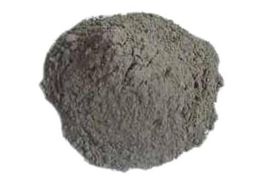 Super Sulphated Cement
Super Sulphated CementIS 6909: 1990 |
Compared to regular Portland cement, Super Sulphated Cement (SSC) has a larger amount of calcium sulphate, which is typically gypsum. Specialized construction applications can benefit from its remarkable resistance to chemical assaults and harsh environments. |
|
| 10 |
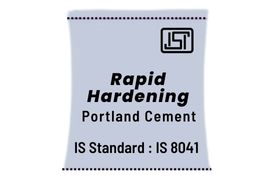 Rapid Hardening Portland Cement
Rapid Hardening Portland CementIS 8041: 1990 |
In comparison to regular Portland cement, Rapid Hardening Portland Cement (RHPC), commonly referred to as quick-setting cement, produces higher early strength and sets more quickly. It is especially made for uses like cold weather concreting, precast concrete manufacturing, and road repairs where quick strength growth is essential. |
|
| 11 |
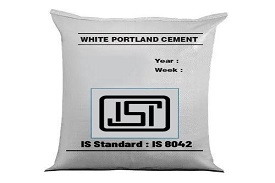 White Portland Cement
White Portland CementIS 8042: 2015 |
White Portland Cement is a unique kind of Portland cement that is made mostly from limestone and kaolin clay, two basic materials low in iron concentration. It differs from conventional gray Portland cement in that it is white or off-white in color due to the lack of iron oxide in its composition. |
|
| 12 |
 Hydrophobic Portland Cement
Hydrophobic Portland CementIS 8043: 1991 |
hydrophobic Portland cement is a unique variety of cement that is made to either repel water or have a high absorption resistance. It is produced by adding water-repellent substances, like oleic or stearic acid, to regular Portland cement clinker. These substances envelop the cement particles in a layer that repels water, rendering the material hydrophobic. |
|
| 13 |
 Oil Well Cement
Oil Well CementIS 8229: 1986 |
A specific kind of cement called oil well cement is mostly employed in the oil and gas sector for well building and completion. Because of its special qualities, it can withstand the harsh circumstances found in oil and gas wells, especially in reservoirs that are deep and hot. |
|
| 14 |
 Composite Cement-Specification
Composite Cement-SpecificationIS 16415: 2015 |
A combination of various cementitious ingredients and additives is called composite cement. Because of its increased performance, sustainability, affordability, and adaptability, this cement is a great choice for contemporary building projects. |
|
| 15 |
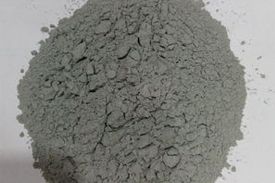 Microfine Ordinary Portland Cement-Specification
Microfine Ordinary Portland Cement-SpecificationIS 16993: 2018 |
Microfine Ordinary Portland Cement, or Microfine OPC, is a particular kind of Portland cement distinguished by its distinctive qualities and fine particle size. It is frequently utilized in a wide range of construction projects, such as those involving precast pieces, architectural concrete, high-rise buildings, bridges, and marine structures. |
|
| 16 |
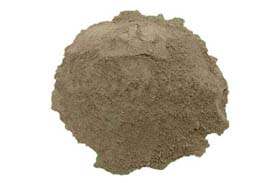 High Alumina Refractory Cement
High Alumina Refractory CementIS 15895: 2018 |
A specific kind of cement with a high alumina content typically greater than 50% is called high alumina refractory cement. It is intended for use in high-temperature situations where ordinary cement would melt under the intense heat. Refractory materials are bonded and sealed in furnaces, kilns, and other industrial equipment that is exposed to extremely high temperatures using high alumina refractory cement. |
|
| Household Electrical Goods | |||
| 17 |
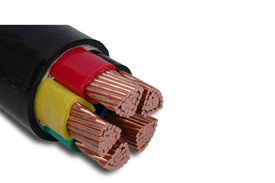 PVC insulated cables for working voltages upto and including 1100 V
PVC insulated cables for working voltages upto and including 1100 VIS 694:2010 |
Electrical cables with PVC (polyvinyl chloride) insulation are commonly used in a variety of applications for the distribution and transmission of electrical power. These cables are renowned for being adaptable, affordable, and simple to install. |
|
| 18 |
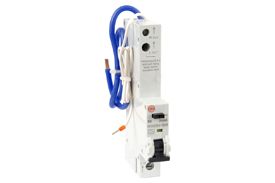 Residual current operated circuit breakers for household and similar uses-Part 1 Circuit breakers without integral overcurrent protection (RCCBs)
Residual current operated circuit breakers for household and similar uses-Part 1 Circuit breakers without integral overcurrent protection (RCCBs)IS 12640 (Part-1): 2016 |
The essential electrical safety tools known as residual current operated circuit breakers, or RCCBs, shield people and property from electrical risks, especially electric shocks and fires. They are a fundamental part of contemporary electrical distribution networks. The way RCCBs function is by keeping an eye on the current imbalance between an electrical circuit's live (phase) and neutral conductors and taking appropriate action. |
|
| 19 |
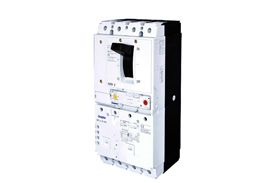 Residual current operated circuit breakers for household and similar uses-Part 2 Circuit breakers with integral overcurrent protection(RCVOs)
Residual current operated circuit breakers for household and similar uses-Part 2 Circuit breakers with integral overcurrent protection(RCVOs)IS 12640 (Part-2): 2016 |
Advanced electrical safety devices known as Residual Current Operated Circuit Breakers with Integral Overcurrent Protection (RCVOs) offer complete protection against overcurrents and ground faults in electrical circuits. These gadgets integrate, into a single unit, the functions of overcurrent protection devices (OCPDs) and residual current operated circuit breakers (RCCBs). |
|
| 20 |
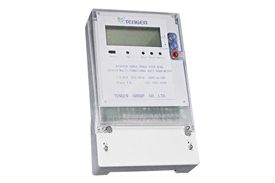 AC watt-hour meters, class 0.5, 1 and 2
AC watt-hour meters, class 0.5, 1 and 2IS 13010: 2002 |
Electrical meters known as AC watt-hour meters are used to calculate and document a home or commercial user's electrical energy consumption in kilowatt-hours (kWh). |
|
| 21 |
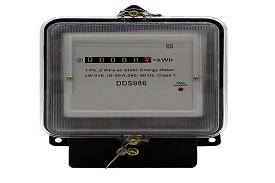 AC static watt-hour meters, class 1 and 2
AC static watt-hour meters, class 1 and 2IS 13779:2020 |
Alternating current (AC) static watt-hour meters, or Class 1 and Class 2, are precise electrical measurement tools that precisely measure and document electrical energy consumption in AC circuits. |
|
| 22 |
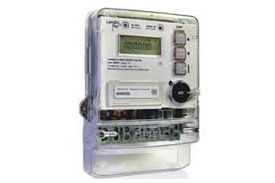 AC Static Transformer operated Watt-hour and VAR-hour meters, class 0.2S and 0.5S
AC Static Transformer operated Watt-hour and VAR-hour meters, class 0.2S and 0.5SIS 14697:2021 |
Operated AC Static Transformer Advanced electrical meters, such as watt-hour and VAR-hour meters, are used in a variety of applications to accurately measure reactive power (VAR-hours) and energy usage. Static transformer technology, which these meters employ, has a number of benefits over conventional electromechanical meters. |
|
| 23 |
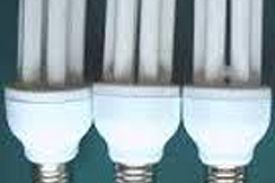 Self Ballasted Lamps for General Lighting Services Part 1-Safety Requirements and Part 2-Performance Requirements
Self Ballasted Lamps for General Lighting Services Part 1-Safety Requirements and Part 2-Performance RequirementsIS 15111 (Part-1 & 2): 2002 |
Lamps that are self-ballasted are intended for general lighting purposes. These lamps are special because they are tiny units that contain the required ballast (electronics) and the light source (LED or fluorescent). Because of this integration, separate ballasts are no longer necessary, which increases convenience and simplifies installation for these lamps. |
|
| 24 |
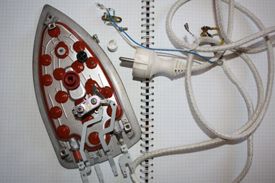 Safety of household and similar electrical appliances-Electric iron
Safety of household and similar electrical appliances-Electric ironIS 302 (Part-2/Sec-3): 2007 |
A household tool called an electric iron is used to press and iron clothing to smooth out creases and make them wrinkle-free. There are many different types and designs of electric irons on the market, including as travel-sized, cordless, and traditional steam variants. They are necessary home appliances to keep fabrics and apparel properly ironed. |
|
| 25 |
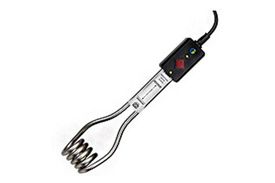 Electric immersion water heaters-Safety of household and similar electrical appliances
Electric immersion water heaters-Safety of household and similar electrical appliancesIS 302 (Part-2/Sec-201): 2008 |
Households frequently utilize electric immersion water heaters to heat water for a variety of uses, including cleaning, cooking, and bathing. The safety of these equipment is of utmost importance because they have direct contact with both water and electricity. |
|
| 26 |
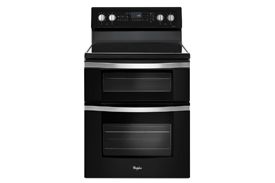 Electric stoves-Safety of household and similar electrical appliances
Electric stoves-Safety of household and similar electrical appliancesIS 302 (Part-2/Sec-202): 1992 |
Electric stoves are cooking gadgets that use solid ceramic or glass surfaces or electric resistance coils to generate heat for food preparation. Because of their ease, safety, and adaptability, they have grown to be a standard and essential component of both residential and commercial kitchens. They provide uniform heating, accurate temperature control, and a number of features that make cooking easier. |
|
| 27 |
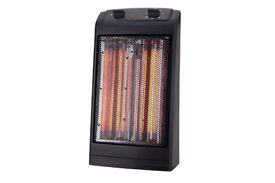 Room Heaters-Safety of household and similar electrical appliances
Room Heaters-Safety of household and similar electrical appliancesIS 302 (Part-2/Sec-30): 2007 |
Room heaters are a need for any home, particularly in areas with harsh winters. During the winter months, they provide off concentrated heat, improving comfort in spaces. Usually, a thermodynamic fluid like oil is used in room heaters to convert electrical energy into thermal energy. |
|
| 28 |
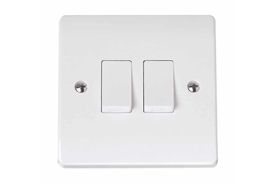 Switches for domestic and similar purposes
Switches for domestic and similar purposesIS 3854: 1997 |
Electrical switches are used to either stop or regulate the flow of current in a circuit. Depending on their position or mode of operation, they are made to either permit or prohibit the flow of electricity. Switches are essential components of electrical systems because they allow you to turn on and off lights, appliances, and other equipment. |
|
| 29 |
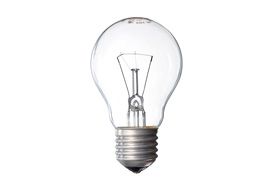 Tungsten filament general service electric lamps (upto 100 W)
Tungsten filament general service electric lamps (upto 100 W)IS 418: 2004 |
The incandescence of a tungsten filament is what produces visible light in tungsten filament lamps, commonly referred to as incandescent bulbs. |
|
| 30 |
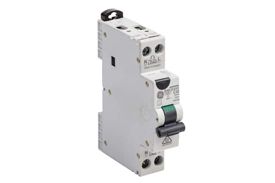 Electrical Accessories-Circuit breakers for overcurrent protection for household and similar installations
Electrical Accessories-Circuit breakers for overcurrent protection for household and similar installationsIS/IEC 60898-1: 2015 |
The term "electrical accessories" covers a broad spectrum of tools, parts, and apparatus used in electrical installations and systems. These add-ons have a variety of uses, ranging from protecting electrical systems and offering connections to improving their performance and security. |
|
| 31 |
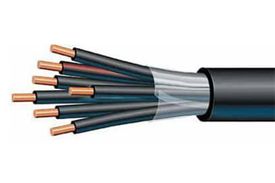 Elastomer Insulated Cables (Part-1) for working voltages up to and including 1100 V
Elastomer Insulated Cables (Part-1) for working voltages up to and including 1100 VIS 9968 (Part-1): 1988 |
Electrical cables with elastomer insulation are distinguished by a special kind of insulation composed of elastomeric compounds. Rubber-like materials called elastomers provide flexibility, toughness, and resistance to a range of environmental conditions. |
|
| Batteries | |||
| 32 |
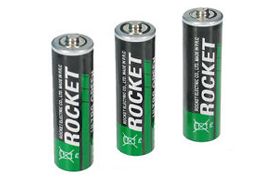 Multi-purpose Dry Batteries ( Classification-R03, R6, R14 and R20 )
Multi-purpose Dry Batteries ( Classification-R03, R6, R14 and R20 )IS 8144: 2018 |
A type of electrochemical cells known as multi-purpose dry batteries is made to supply dependable, portable electricity for a variety of gadgets and uses. Common uses for these batteries include emergency equipment, industrial machinery, and household gadgets. |
|
| Food & Related Products | |||
| 33 |
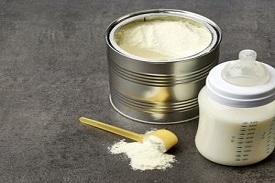 Follow-up Formula Complementary Foods
Follow-up Formula Complementary FoodsIS 15757: 2022 |
Follow-up formula complementary foods are carefully crafted, nutritionally sound meals that support a baby's diet during the shift from formula or exclusive breastfeeding to solid food consumption. As advised by medical experts and groups like the American Academy of Pediatrics and the World Health Organization (WHO), these supplemental foods are usually provided to infants at the age of six months. |
|
| 34 |
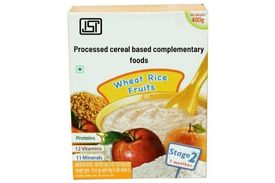 Processed cereal based complementary foods
Processed cereal based complementary foodsIS 11536: 2022 |
Supplementary foods made from processed cereal, sometimes known as baby cereals or infant cereals, are specially designed food items for babies and young children who are switching from a diet high in milk (breast milk or infant formula) to one high in solid foods. |
|
| 35 |
 Milk Powder
Milk PowderIS 1165: 2022 |
Powdered milk, sometimes referred to as dry milk or powdered milk powder, is a dairy product that evaporates or spray-driess conventional liquid milk to eliminate moisture. This produces liquid milk in the form of a fine powder that is easily reconstituted with water. |
|
| 36 |
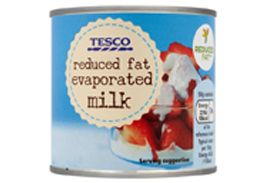 Condensed milk, partly skimmed and skimmed condensed milk
Condensed milk, partly skimmed and skimmed condensed milkIS 1166: 2022 |
Dairy products like condensed milk have had their moisture content lowered by heating and evaporation. Usually, sugar is used to sweeten it, giving it a pleasant taste and serving as a preservative. Different types of condensed milk are available, such as partially and fully skimmed versions. Every variety of condensed milk has specific uses in baking and cookery. |
|
| 37 |
 Skimmed milk-powder, standard grade
Skimmed milk-powder, standard gradeIS 13334 (Part-1): 2014 |
A dairy product called skimmed milk powder is created by eliminating fat from milk. It is made by drying the liquid that remains after the majority of the water in the skim milk evaporates, turning it into a fine powder. A practical and long-lasting source of milk solids for a variety of culinary and beverage applications is skimmed milk powder. |
|
| 38 |
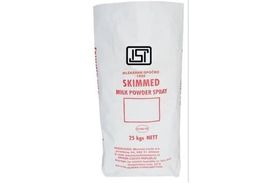 Skimmed milk-powder, extra grade
Skimmed milk-powder, extra gradeIS 13334 (Part-2): 2014 |
Fresh milk is used to make skimmed milk powder, sometimes known by its acronym SMP. It is made by evaporating and spray-drying milk to remove the water content, leaving behind a fine powder. |
|
| 39 |
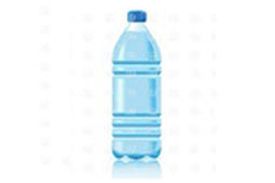 Packaged Natural Mineral Water
Packaged Natural Mineral WaterIS 13428: 2005 |
Packaged natural mineral water is made from natural springs or subterranean aquifers and is bottled, processed, and cleansed before being sold commercially in a variety of container options. Usually, this water is sold as a high-end, pure, and clean drinking water option. Natural mineral water in a package is an essential supply of secure hydration. |
|
| 40 |
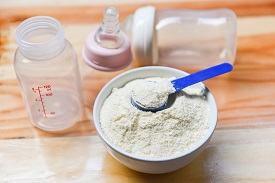 Infant milk substitutes
Infant milk substitutesIS 14433: 2022 |
Often referred to as infant formula, infant milk substitutes are carefully prepared goods meant to nourish babies who are not breastfed or who receive insufficient breast milk. The goal of these alternatives is to closely mimic the nutritional makeup of breast milk in order to promote babies' healthy growth and development. |
|
| 41 |
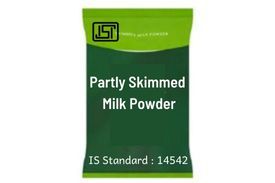 Partly skimmed milk powder
Partly skimmed milk powderIS 14542: 1998 |
One kind of dehydrated milk powder is called partially skimmed milk powder, which is made by skimming half of the cream from whole milk and discarding the water. This entails using ultrafiltration to concentrate milk protein in order to produce a product that can replace conventional whole milk. It is notable for having a longer shelf life than liquid milk. |
|
| 42 |
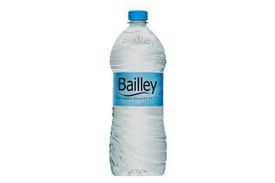 Packaged Drinking Water (Other than Packaged Natural Mineral Water)
Packaged Drinking Water (Other than Packaged Natural Mineral Water)IS 14543: 2016 |
Water that has been cleaned, processed, and packaged for retail sale in bottles, cans, or other packaging is referred to as packaged drinking water. It is an essential supply of pure, safe drinking water for consumers, promoting convenience, public health, hydration, and emergency readiness. |
|
| 43 |
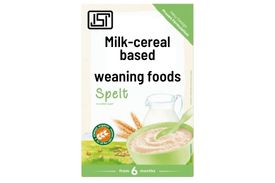 Milk-cereal based weaning foods
Milk-cereal based weaning foodsIS 1656: 2022 |
Weaning meals made with milk or cereal are a type of complementary foods created especially for babies to eat during the weaning stage, which usually begins around six months of age. In order to provide solid foods to developing infants in addition to breast milk or formula, these foods act as a transitional diet. During this crucial stage, proper nutrition sets the stage for lifelong healthy eating practices. |
|
| 44 |
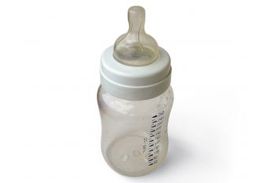 Plastic Feeding Bottles
Plastic Feeding BottlesIS 14625: 2015 |
Infants and young children can be fed and stored safely in plastic feeding bottles. These bottles come in a variety of sizes and forms and are usually composed of food-grade plastic. |
|
| 45 |
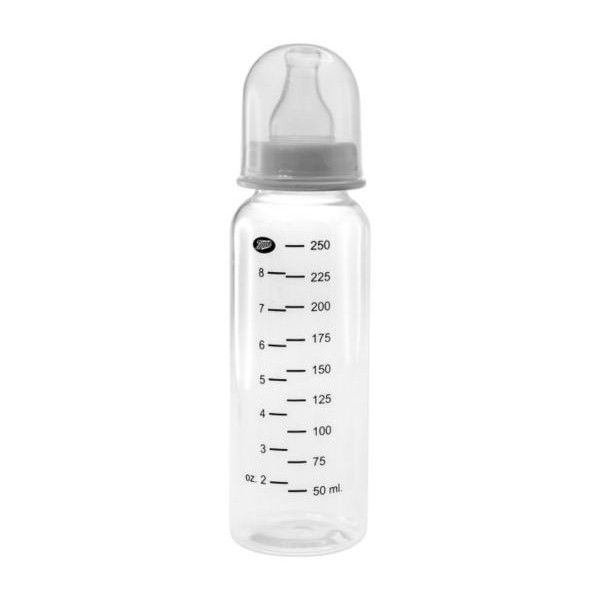 Glass Feeding Bottles
Glass Feeding BottlesIS 5168: 2018 |
Glass feeding bottles are made specifically for supplying food to babies and young children. Glass feeding bottles are mostly constructed of glass, as opposed to plastic bottles, which are built of different polymers. |
|
| 46 |
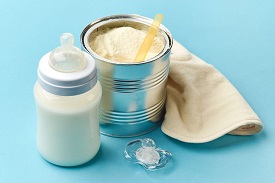 Food for Special Medical Purpose intended for Infants - Specification
Food for Special Medical Purpose intended for Infants - SpecificationIS 17945: 2022 |
Food for Special Medical Purposes (FSMP) intended for infants is a specialized category of food products designed to meet the unique nutritional needs of infants with specific medical conditions or dietary requirements. These products are formulated under strict guidelines to provide essential nutrients in appropriate quantities and proportions, tailored to support the growth, development and health of infants with medical conditions such as allergies, metabolic disorders, gastrointestinal disorders or other health issues. |
|
| Oil Pressure Stoves | |||
| 47 |
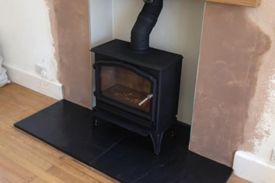 Oil pressure stove, offset burner type
Oil pressure stove, offset burner typeIS 10109: 2018 |
An oil pressure stove is a type of portable cooking stove that produces heat for cooking or heating by using pressured liquid fuel, usually kerosene, diesel, or gasoline. |
|
| 48 |
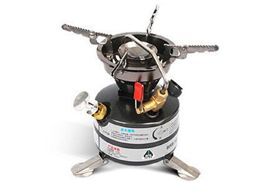 Multi-burner oil pressure stoves
Multi-burner oil pressure stovesIS 2787: 2006 |
Oil pressure stoves with multiple burners that are portable are known as multi-burner stoves. These stoves are an excellent option for outdoor cooking and when preparing several dishes at once because they give consumers more cooking flexibility and efficiency. |
|
| 49 |
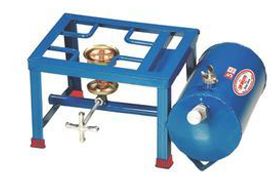 Oil pressure stoves
Oil pressure stovesIS 1342: 2019 |
All models and brands of Oil pressure stoves are classified under IS 1342 and are required to get ISI Certification before its launch or import into the Indian market. ISI Certification will be provided to the product manufacturers (whether Indian or non-Indian) only and not provided to trader, dealer or distributor of the product. |
|
| Automobile Accessories | |||
| 50 |
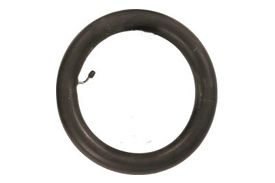 Automotive Vehicles Tubes for pneumatic tyres
Automotive Vehicles Tubes for pneumatic tyresIS 13098: 2012 |
All models and brands of Automotive Vehicles Tubes for pneumatic tyres are classified under IS 13098 and are required to get ISI Certification before its launch or import into the Indian market. ISI Certification will be provided to the product manufacturers (whether Indian or non-Indian) only and not provided to trader, dealer or distributor of the product. |
|
| 51 |
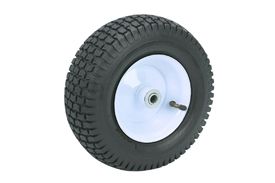 Automotive vehicles-Pneumatic tyres for two and three-wheeled motor vehicles
Automotive vehicles-Pneumatic tyres for two and three-wheeled motor vehiclesIS 15627: 2022 |
All models and brands of Automotive vehicles-Pneumatic tyres for two and three-wheeled motor vehicles are classified under IS 15627 and are required to get ISI Certification before its launch or import into the Indian market. ISI Certification will be provided to the product manufacturers (whether Indian or non-Indian) only and not provided to trader, dealer or distributor of the product. |
|
| 52 |
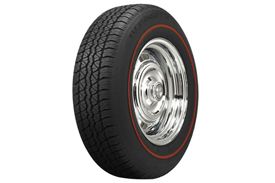 Automotive vehicles-Pneumatic tyres for passenger car vehicles-Diagonal and radial ply
Automotive vehicles-Pneumatic tyres for passenger car vehicles-Diagonal and radial plyIS 15633: 2022 |
All models and brands of Automotive vehicles-Pneumatic tyres for passenger car vehicles-Diagonal and radial ply are classified under IS 15633 and are required to get ISI Certification before its launch or import into the Indian market. ISI Certification will be provided to the product manufacturers (whether Indian or non-Indian) only and not provided to trader, dealer or distributor of the product. |
|
| 53 |
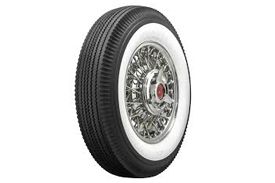 Automotive vehicles-Pneumatic tyres for commercial vehicles-Diagonal and radial ply
Automotive vehicles-Pneumatic tyres for commercial vehicles-Diagonal and radial plyIS 15636: 2022 |
There are two main types of pneumatic tires for commercial vehicles, such as trucks, buses, and other heavy-duty applications: radial ply and diagonal ply, often known as bias ply. Each variety has unique qualities and benefits for usage with commercial vehicles. |
|
| Cylinder, Valves and Regulator | |||
| 54 |
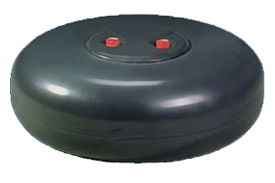 Liquefied petroleum gas containers for automotive usec
Liquefied petroleum gas containers for automotive usecIS 14899: 2014 |
All models and brands of Liquefied petroleum gas containers for automotive use are classified under IS 14899 and are required to get ISI Certification before its launch or import into the Indian market. ISI Certification will be provided to the product manufacturers (whether Indian or non-Indian) only and not provided to trader, dealer or distributor of the product. |
|
| 55 |
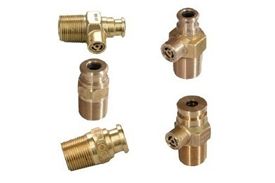 Multifunction valve assembly for permanently fixed liquefied petroleum gas (LPG) containers for automotive use
Multifunction valve assembly for permanently fixed liquefied petroleum gas (LPG) containers for automotive useIS 15100: 2018 |
A multifunction valve assembly is a specialty part made to carry out multiple tasks in a particular application or system. They are made to carry out various functions in fluid and gas management systems with accuracy, efficiency, and safety in mind. |
|
| 56 |
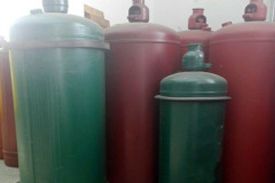 Welded low carbon steel cylinders exceeding 5 litre Water capacity for low pressure liquefiable gases Part 4 Cylinders for toxic and corrosive gases
Welded low carbon steel cylinders exceeding 5 litre Water capacity for low pressure liquefiable gases Part 4 Cylinders for toxic and corrosive gasesIS 3196 (Part-4): 2001 |
For low-pressure liquefiable gases, welded low carbon steel cylinders with a water capacity of more than five liters are specialized containers meant to store and move liquefied gases at relatively low pressures. Because of these cylinders' strength, dependability, and safety characteristics, they are frequently utilized in a variety of sectors and applications. |
|
| 57 |
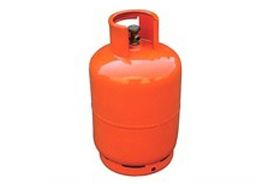 Welded low carbon steel gas cylinder exceeding 5 litre water capacity for low pressure liquefiable gases Part 1 Cylinders for LPG
Welded low carbon steel gas cylinder exceeding 5 litre water capacity for low pressure liquefiable gases Part 1 Cylinders for LPGIS 3196 (Part-1): 2013 |
All models and brands of Welded low carbon steel gas cylinder exceeding 5 litre water capacity for low pressure liquefiable gases Part 1 Cylinders for LPG are classified under IS 3196 (Part-1) and are required to get ISI Certification before its launch or import into the Indian market. ISI Certification will be provided to the product manufacturers (whether Indian or non-Indian) only and not provided to trader, dealer or distributor of the product. |
|
| 58 |
 Welded low carbon steel gas cylinder exceeding 5-litre water capacity for low pressure liquefiable gases Part 2 Cylinders for liquefiable gases other than LPG
Welded low carbon steel gas cylinder exceeding 5-litre water capacity for low pressure liquefiable gases Part 2 Cylinders for liquefiable gases other than LPGIS 3196 (Part2): 2006 |
For low pressure liquefiable gases other than LPG, welded low carbon steel gas cylinders are vital for guaranteeing the availability, security, and regulated use of gases required in a variety of industries and applications. Their contribution to the general industrial and societal well-being include industrial operations, healthcare, research, safety precautions, and environmental monitoring. |
|
| 59 |
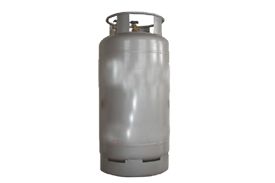 Valve fittings for compressed gas cylinder excluding liquefied petroleum gas cylinders
Valve fittings for compressed gas cylinder excluding liquefied petroleum gas cylindersIS 3224: 2021 |
Compressed gas cylinder valve fittings are crucial parts that are necessary for the safe and controlled handling of compressed gases. In a variety of industrial, medical, and laboratory applications, these fittings are made to precisely regulate the release and flow of gases from cylinders, guaranteeing accuracy, efficiency, and safety. Their significance arises from their capacity to control procedures and enhance system efficiency in a variety of industries. |
|
| 60 |
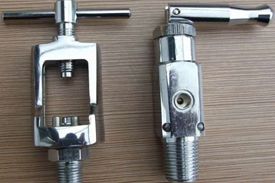 Yoke Type Valve Connection for Small Medical Gas Cylinders
Yoke Type Valve Connection for Small Medical Gas CylindersIS 3745: 2006 |
A Yoke type valve connection is a particular kind of valve connection mechanism used in industrial, gas-related, medical, and scuba diving equipment, among other applications. They are crucial for securely and effectively managing and regulating the flow of gases because of their construction, safety features, and usability. |
|
| 61 |
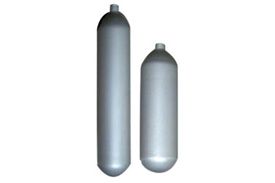 Welded low carbon steel cylinders for low pressure liquefiable gases not exceeding 5 litre water capacity
Welded low carbon steel cylinders for low pressure liquefiable gases not exceeding 5 litre water capacityIS 7142: 1995 |
Specialized containers for the safe storage and transportation of gases that can be liquefied under low pressure conditions are welded low carbon steel cylinders for low pressure liquefiable gases with a water capacity not to exceed 5 liters. Because of their unique qualities and capacities, these cylinders are essential in a wide range of industries and applications. |
|
| 62 |
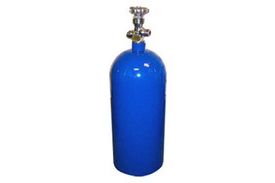 Refillable Seamless steel gas cylinders Part 1 Normalized steel cylinders
Refillable Seamless steel gas cylinders Part 1 Normalized steel cylindersIS 7285 (Part-1): 2018 |
A particular kind of steel gas cylinder known as "normalized steel cylinders" has gone through a normalizing procedure during the production process. In the context of steel cylinders, "normalized" refers to a heat treatment procedure that strengthens the steel's mechanical characteristics and structural integrity, qualifying it for use in high-pressure applications. These cylinders are essential in many industrial, medicinal, and commercial applications because of their special qualities and capacities. |
|
| 63 |
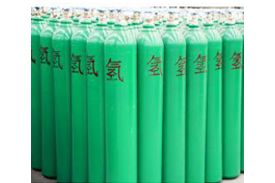 Refillable Seamless steel gas cylinders Part 2 Quenched and tempered steel cylinders with tensile strength less than 1100 MPa
Refillable Seamless steel gas cylinders Part 2 Quenched and tempered steel cylinders with tensile strength less than 1100 MPaIS 7285 (Part-2): 2017 |
Quenched and tempered steel cylinders are a particular kind of cylindrical vessel or container composed of steel that has gone through the quenching and tempering heat treatment processes. They are sturdy and adaptable containers with a variety of industrial uses. |
|
| 64 |
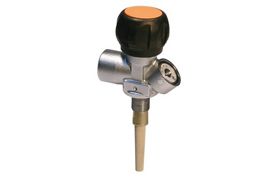 Valve fittings for gas cylinder valves for use with breathing apparatus
Valve fittings for gas cylinder valves for use with breathing apparatusIS 7302: 2018 |
Mechanical parts called valve fittings are used in systems to direct, regulate, or control the flow of gases or liquids. These fittings are crucial in many different fields and applications where accurate fluid or gas flow management and control are needed. |
|
| 65 |
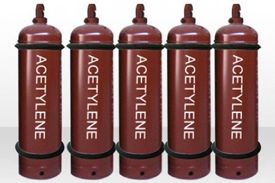 Welded and seamless steel dissolved acetylene gas cylinders
Welded and seamless steel dissolved acetylene gas cylindersIS 7312: 2018 |
Acetylene gas is stored and transported at high pressure in welded and seamless steel dissolved gas cylinders. These cylinders are essential to many industrial processes, especially those involving cutting, welding, and metal manufacturing, where acetylene is utilized as a fuel gas. Their controlled release of acetylene gas and safe storage help to promote industrial efficiency, economic growth, and worker safety. |
|
| 66 |
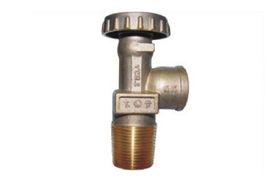 Valve fittings for use with liquefied petroleum gas cylinders of more than 5 litre water capacity Part 2 Valve fittings for newly manufactured LPG cylinders
Valve fittings for use with liquefied petroleum gas cylinders of more than 5 litre water capacity Part 2 Valve fittings for newly manufactured LPG cylindersIS 8737: 2017 |
A vital part of the safe handling and distribution of liquefied petroleum gas (LPG) is valve fittings designed for use with cylinders holding up to five liters of water. Their role is to protect people, things, and the environment while allowing LPG to be widely used as a flexible and sustainable energy source. |
|
| 67 |
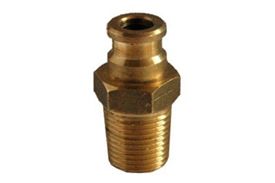 Valve Fittings for Use with Liquefied Petroleum Gas (LPG) Cylinders upto and Including 5-Litre Water Capacity
Valve Fittings for Use with Liquefied Petroleum Gas (LPG) Cylinders upto and Including 5-Litre Water CapacityIS 8776: 1988 |
All models and brands of Valve Fittings for Use with Liquefied Petroleum Gas (LPG) Cylinders upto and Including 5-Litre Water Capacity are classified under IS 8776 and are required to get ISI Certification before its launch or import into the Indian market. ISI Certification will be provided to the product manufacturers (whether Indian or non-Indian) only and not provided to trader, dealer or distributor of the product. |
|
| 68 |
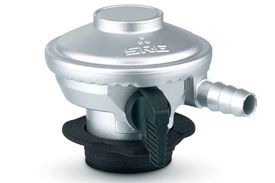 Low pressure regulators for use with liquefied petroleum gas (LPG) mixtures
Low pressure regulators for use with liquefied petroleum gas (LPG) mixturesIS 9798: 2013 |
All models and brands of Low pressure regulators for use with liquefied petroleum gas (LPG) mixtures are classified under IS 9798 and are required to get ISI Certification before its launch or import into the Indian market. ISI Certification will be provided to the product manufacturers (whether Indian or non-Indian) only and not provided to trader, dealer or distributor of the product. |
|
| Medical Equipment | |||
| 69 |
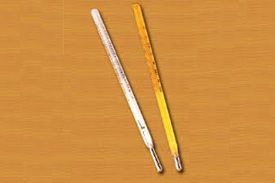 Clinical thermometers Part 1-Solid stem type
Clinical thermometers Part 1-Solid stem typeIS 3055 (Part-1): 1994 |
One tool for measuring temperature is a thermometer. It is an essential instrument in many domains, such as industry, science, medicine, meteorology, and daily living. |
|
| 70 |
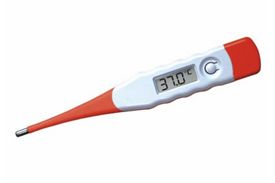 Clinical thermometers Part 2-Enclosed scale type
Clinical thermometers Part 2-Enclosed scale typeIS 3055 (Part-2): 2004 |
All models and brands of Clinical thermometers Part 2-Enclosed scale type are classified under IS 3055 (Part-2) and are required to get ISI Certification before its launch or import into the Indian market. ISI Certification will be provided to the product manufacturers (whether Indian or non-Indian) only and not provided to trader, dealer or distributor of the product. |
|
| 71 |
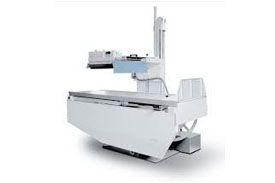 Diagnostic Medical X Ray Equipment
Diagnostic Medical X Ray EquipmentIS 7620 (Part-1): 1986 |
Medical Diagnostics A class of medical instruments known as "X-ray equipment" is utilized to create and record images of the interior of the body for diagnostic reasons. These devices provide finely detailed images of bones, tissues, and organs using X-rays, a type of electromagnetic energy. |
|
| Steel and Iron Products | |||
| 72 |
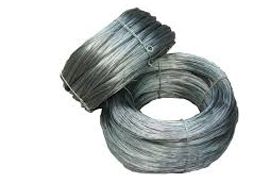 Mild Steel and Medium Tensile Steel Bars and Hard-Drawn Steel Wire for Concrete Reinforcement (Part 1) Mild steel and medium tensile steel bars
Mild Steel and Medium Tensile Steel Bars and Hard-Drawn Steel Wire for Concrete Reinforcement (Part 1) Mild steel and medium tensile steel barsIS 432 (Part 1):1982 |
Two popular varieties of steel bars utilized in several industrial and construction applications are mild steel and medium tensile steel bars. Whereas medium tensile steel bars offer greater strength and are appropriate for applications needing a larger load-bearing capacity, low tensile steel bars are distinguished by their low tensile strength, excellent ductility, and ease of manufacture. |
|
| 73 |
 Mild steel and Medium Tensile steel bars and Hard-Drawn Steel Wire for Concrete Reinforcement (Part 2) Hard-Drawn Steel Wire
Mild steel and Medium Tensile steel bars and Hard-Drawn Steel Wire for Concrete Reinforcement (Part 2) Hard-Drawn Steel WireIS 432 (Part 2): 1982 |
One kind of high-strength steel wire that is cold-drawn to improve its tensile strength is called hard-drawn steel wire. It is extensively utilized in manufacturing, building, and other sectors of the economy where strong, dependable materials are crucial. |
|
| 74 |
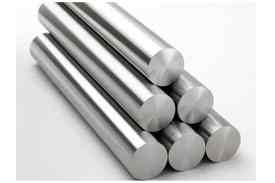 Stainless Steel Bars and Flats
Stainless Steel Bars and FlatsIS 6603: 2001 |
Iron, chromium, nickel, and other components make up the corrosion-resistant alloy stainless steel, which is used to make metal rods and profiles known as stainless steel bars. |
|
| 75 |
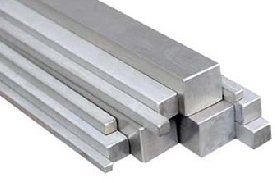 Bright steel bars-Specification
Bright steel bars-SpecificationIS 9550:2001 |
A particular variety of steel bars with a smooth, polished surface are called bright steel bars. Usually, several grades of alloy and carbon steel are used to make these bars. The shining and glossy look of the steel surface is referred to as "bright" and is attained by extra processing stages in addition to standard steel bar manufacture. |
|
| 76 |
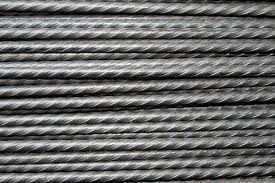 Specification for High Tensile Steel Bars used in Pre-stressed Concrete
Specification for High Tensile Steel Bars used in Pre-stressed ConcreteIS 2090:1983 |
Strong and long-lasting construction materials are high tensile steel bars, sometimes referred to as high-strength steel bars or HTS bars. In a variety of applications, they enhance the longevity, safety, and effectiveness of structures. When building bridges, buildings, and parking garages structures where concrete's strength and endurance are crucial high tensile steel bars are frequently utilized. |
|
| 77 |
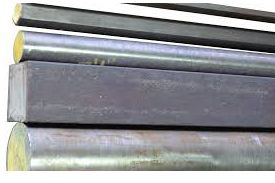 Chrome molybdenum steel bars and rods for aircraft purposes
Chrome molybdenum steel bars and rods for aircraft purposesIS 963: 1958 |
Chromium (Cr) and molybdenum (Mo) are the two main alloying elements found in chrome molybdenum steel, also referred to as chromoly steel. Solid cylindrical or rectangular portions of chrome molybdenum steel alloy are known as chrome molybdenum steel bars and rods. These materials' strength, durability, and heat resistance make them essential for use in airplane construction. |
|
| 78 |
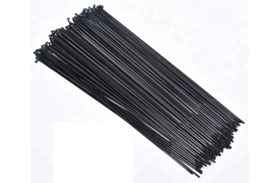 Steel Wire for Nipples for Spokes
Steel Wire for Nipples for SpokesIS 8564: 1977 |
All brands of Steel Wire for Nipples for Spokes are classified under IS 8564 and are required to get ISI Certification before its launch or import into the Indian market. ISI Certification will be provided to the product manufacturers (whether Indian or non-Indian) only and not provided to trader, dealer or distributor of the product. |
|
| 79 |
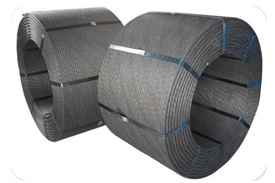 Stress-Relieved, Low Relaxation Steel Wire for Pre-stressed Concrete
Stress-Relieved, Low Relaxation Steel Wire for Pre-stressed ConcreteIS 16644: 2018 |
freed of tension, low relaxation Specialized steel wire known as steel wire is essential to the building sector. It is essential for producing high-performance pre-stressed concrete structures that provide flexibility in design, safety, affordability, and longevity. Its significance in the construction sector cannot be emphasized, especially for projects where durability and structural integrity are critical. |
|
| 80 |
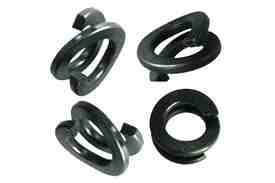 Trapezoidal Steel Wire for Springs Washers
Trapezoidal Steel Wire for Springs WashersIS 12262:1988 |
One kind of steel wire that has a trapezoidal cross-section is called trapezoidal steel wire. There are two parallel sides and two non-parallel sides to this shape. The non-parallel sides are usually slanted, while the parallel sides are usually horizontal. |
|
| 81 |
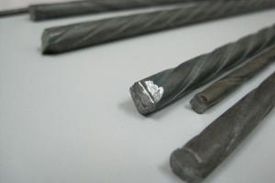 Plain Hard-drawn Steel Wire For Pre-stressed Concrete Part 1 Cold Drawn Stress-relieved Wire
Plain Hard-drawn Steel Wire For Pre-stressed Concrete Part 1 Cold Drawn Stress-relieved WireIS 1785 (Part 1) : 1983 |
Cold drawn stress-relieved wire, also called "stress-relieved wire" or "cold-drawn wire," is a particular kind of wire that goes through a certain manufacturing process in order to have the mechanical qualities that are needed. This procedure entails cold drawing, then heat treatment for stress alleviation. |
|
| 82 |
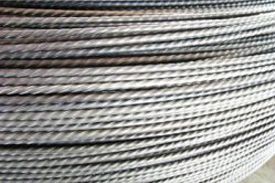 Plain hard-drawn steel wire for pre-stressed concrete Part 2 as drawn wire
Plain hard-drawn steel wire for pre-stressed concrete Part 2 as drawn wireIS 1785 (Part 2) : 1983 |
The term "drawn wire" describes a particular kind of wire that has gone through the wire drawing manufacturing process. A metalworking technique called wire drawing is used to lengthen a metal wire while decreasing its diameter. The resulting wire is used in many different industries where surface quality, strength, and precise dimensions are essential. |
|
| 83 |
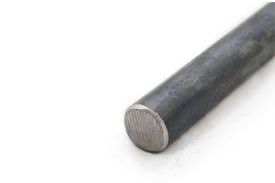 Mild steel wire rods for general engineering purposes
Mild steel wire rods for general engineering purposesIS 7887:1992 |
Mild steel is a low-carbon steel with a relatively low amount of carbon content (typically less than 0.3%). Mild steel wire rods are one form of steel product created from mild steel. In many technical and manufacturing applications, where a blend of strength, ductility, and ease of manufacture is needed, they are indispensable. The industries that need dependable and affordable materials for their projects and products utilize mild steel wire rods extensively. |
|
| 84 |
 Mild steel wire for cotter pins
Mild steel wire for cotter pinsIS 10794:1984 |
Mild steel wire is a kind of steel wire that usually has a carbon content of less than 0.3% and is formed from low-carbon steel. It is renowned for being ductile and malleable, which makes it appropriate for a variety of uses. |
|
| 85 |
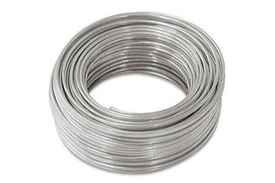 Steel Wire for Reeds
Steel Wire for ReedsIS 8566: 1977 |
Steel wire is a multipurpose and extensively utilized substance that is derived from steel, which is mostly comprised of iron and carbon, with additional elements added for particular purposes. It is produced using a number of techniques, such as extrusion, rolling, and drawing, to provide wire with a range of diameters and characteristics. |
|
| 86 |
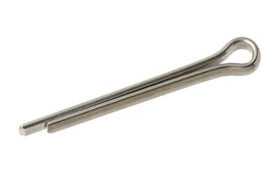 Half Round Mild Steel Wire for The Manufacture of Split Pins
Half Round Mild Steel Wire for The Manufacture of Split PinsIS 8563: 1977 |
All brands of Half Round Mild Steel Wire for The Manufacture of Split Pins are classified under IS 8563 and are required to get ISI Certification before its launch or import into the Indian market. ISI Certification will be provided to the product manufacturers (whether Indian or non-Indian) only and not provided to trader, dealer or distributor of the product.
|
|
| 87 |
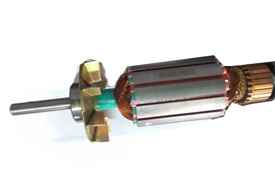 Tinned Steel Wire for Banding of Armatures And Rotors Part-3 Specific Requirements for non-magnetic banding wires
Tinned Steel Wire for Banding of Armatures And Rotors Part-3 Specific Requirements for non-magnetic banding wiresIS 8510 (PartIII): 1977 |
One kind of steel wire that has had a layer of tin applied to it is called tinned steel wire. The wire is appropriate for a range of applications, such as electronics, electrical connections, naval equipment, and different industrial purposes where corrosion prevention is crucial, thanks to the numerous advantageous qualities of the tin coating. |
|
| 88 |
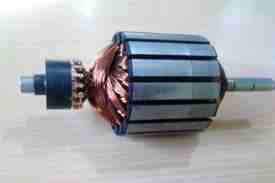 Steel Wire for Banding Of Armatures And Rotors Part-2 Specific Requirements for magnetic banding wires
Steel Wire for Banding Of Armatures And Rotors Part-2 Specific Requirements for magnetic banding wiresIS 8510 (Part II): 1977 |
formed from steel, a sort of alloy predominantly formed of iron and carbon, steel wire is a commonly used and adaptable material. Because of its strength, resilience, and flexibility, steel wire is well-suited for a wide range of industrial applications. To suit different applications, steel wire is available in a variety of diameters, compositions, and coatings. Its qualities can be improved by alloying it with other metals, coating it for insulation, or galvanizing it to resist corrosion. |
|
| 89 |
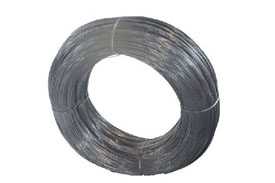 Hard Drawn Steel Wire for Upholstery Springs
Hard Drawn Steel Wire for Upholstery SpringsIS 2589: 1975 |
Steel wire that has been cold-drawn to minimize its ductility and improve strength is known as hard drawn steel wire. To decrease the diameter of the steel wire without sacrificing its toughness, this procedure entails pushing it through a succession of dies. It is prized for its capacity to deliver strong and dependable performance in a variety of construction and industrial applications. |
|
| 90 |
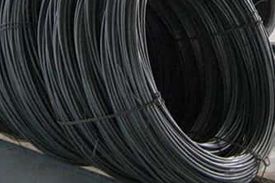 High Carbon Steel Wire Rods
High Carbon Steel Wire RodsIS 7904:2017 |
All models and brands of High Carbon Steel Wire Rods are classified under IS 7904 and are required to get ISI Certification before its launch or import into the Indian market. ISI Certification will be provided to the product manufacturers (whether Indian or non-Indian) only and not provided to trader, dealer or distributor of the product. |
|
| 91 |
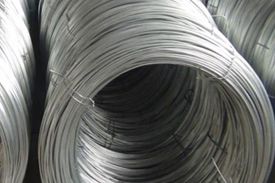 Mild steel wire for General Engineering purposes
Mild steel wire for General Engineering purposesIS 280: 2006 |
All models and brands of Mild steel wire for General Engineering purposes are classified under IS 280 and are required to get ISI Certification before its launch or import into the Indian market. ISI Certification will be provided to the product manufacturers (whether Indian or non-Indian) only and not provided to trader, dealer or distributor of the product. |
|
| 92 |
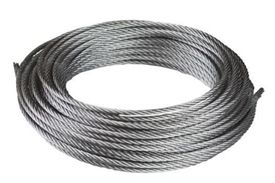 Round Steel wire for ropes
Round Steel wire for ropesIS 1835:1976 |
All models and brands of Round Steel wire for ropes are classified under IS 1835 and are required to get ISI Certification before its launch or import into the Indian market. ISI Certification will be provided to the product manufacturers (whether Indian or non-Indian) only and not provided to trader, dealer or distributor of the product. |
|
| 93 |
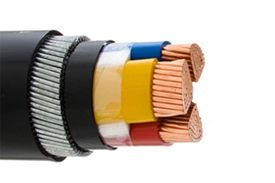 Low Carbon Galvanized steel wires formed wires and Tapes for armouring of Cables
Low Carbon Galvanized steel wires formed wires and Tapes for armouring of CablesIS 3975:1999 |
Because of their specific qualities and protective coatings, low carbon galvanized steel wires and tapes are utilized in a wide range of sectors and applications. These are adaptable materials that may be used for fence, cable armoring, building, and other purposes. Their superior corrosion resistance due to their galvanized coats makes them useful in harsh and outdoor conditions. |
|
| 94 |
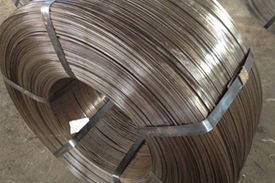 Steel wire for mechanical springs Part-1 cold drawn unalloyed steel wire
Steel wire for mechanical springs Part-1 cold drawn unalloyed steel wireIS 4454 (Part 1) : 2001 |
Unalloyed steel is used to make cold drawn unalloyed steel wire, a particular kind of steel wire that has gone through the cold drawing process. It is a crucial component of many industrial processes and applications where great tensile strength, durability, and accuracy are necessary. |
|
| 95 |
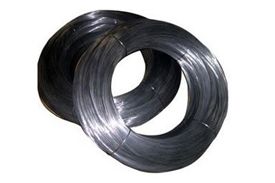 Steel wire for mechanical springs Part-2 oil hardened and tempered steel wire
Steel wire for mechanical springs Part-2 oil hardened and tempered steel wireIS 4454 (Part 2): 2001 |
Specialized steel wires that have undergone a particular heat treatment procedure to provide improved mechanical qualities and performance attributes are known as oil hardened and tempered steel wires. This kind of steel wire is frequently utilized in many different industrial settings, especially in the production of wire forms and mechanical springs. Its outstanding mechanical qualities, robustness, and dependability make it the perfect option for springs that must function reliably and consistently in harsh conditions. |
|
| 96 |
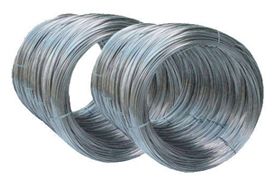 Stainless Steel wire Rod
Stainless Steel wire RodIS 6527:1995 |
One semi-finished product produced of stainless steel is stainless steel wire rod. With a minimum of 10.5% chromium content, stainless steel is an alloy that offers exceptional resistance to corrosion, rendering it appropriate for a wide range of uses. Hot rolling is the method used to create stainless steel wire rod, which comes in a range of grades and dimensions. |
|
| 97 |
 Stainless Steel Wires
Stainless Steel WiresIS 6528:1995 |
Stainless steel is an alloy largely formed of iron, chromium, nickel, and other elements. Stainless steel wires are thin, elongated, and flexible metal strands manufactured from stainless steel. Because of their remarkable qualities, which include strength, durability, corrosion resistance, and adaptability, they are employed in a variety of industries. |
|
| 98 |
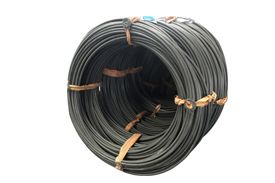 Specification for Mild Steel Wire, Cold Heading Quality
Specification for Mild Steel Wire, Cold Heading QualityIS 1673: 1984 |
Quality of cold heading (CHQ) A particular grade of mild steel wire is produced and treated in a way that satisfies the exacting specifications of cold heading procedures. In the cold heading process, wire or rod stock is shaped into a variety of components and forms at room temperature. |
|
| 99 |
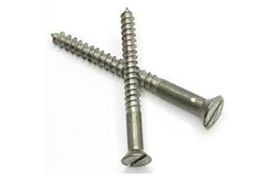 Specification for Carbon Steel Wire for the Manufacture of Wood Screws
Specification for Carbon Steel Wire for the Manufacture of Wood ScrewsIS 1812: 1982 |
One kind of steel wire that is mostly made of carbon and iron is called carbon steel wire. Because of its strength, durability, and affordability, it is a material that may be used in a wide range of sectors. To obtain the required wire diameter and qualities, carbon steel wire is made by drawing, stretching, or rolling steel rods or billets. |
|
| 100 |
 Specification for Mild Steel Wire Rod for the Manufacture of Machine Screws
Specification for Mild Steel Wire Rod for the Manufacture of Machine ScrewsIS 2255: 1977 |
Iron and carbon make up the majority of mild steel wire rod, with trace quantities of other elements including manganese, sulfur, and phosphorus. In order to shrink its diameter and form it into a long, continuous rod, a heated steel billet is usually sent through a succession of rollers in a process known as hot rolling. |
|
| 101 |
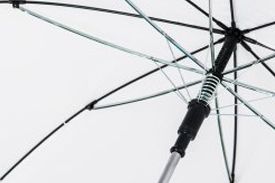 Specification for Steel Wire for Umbrella Ribs
Specification for Steel Wire for Umbrella RibsIS 4223: 1975 |
Steel is mostly constituted of iron and carbon, with trace quantities of other elements, making it a versatile and frequently used material. Usually, thin, long wires are created by drawing and shaping steel billets or rods through a process. Steel wire is an essential material for a variety of industries and applications due to its strength and adaptability. |
|
| 102 |
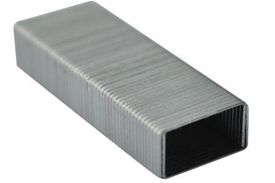 Specification for Steel Wire for Staples, Pins and Clips
Specification for Steel Wire for Staples, Pins and ClipsIS 4224: 1972 |
All models and brands of Steel Wire for Staples, Pins and Clips - Specification are classified under IS 4224 and are required to get ISI Certification before its launch or import into the Indian market. ISI Certification will be provided to the product manufacturers (whether Indian or non-Indian) only and not provided to trader, dealer or distributor of the product.
|
|
| 103 |
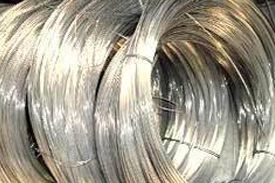 Specification for Steel Wire for spokes
Specification for Steel Wire for spokesIS 6902: 1973 |
Made largely of iron and carbon with trace quantities of other elements, steel is a versatile and commonly used material. It is renowned for its robustness, adaptability, and plenty of uses in a variety of sectors. Usually, steel wire is made by drawing and forming billets or steel rods into long, thin wires. |
|
| 104 |
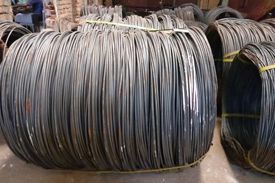 Specification for Steel Wire ( up to 20 mm ) for the manufacture of cold-forged rivets
Specification for Steel Wire ( up to 20 mm ) for the manufacture of cold-forged rivetsIS 7557: 1982 |
Made mostly of iron and carbon, steel is a versatile and commonly used material. Steel wire is one example of this. Its great tensile strength, resilience, and adaptability to a range of uses define it. Depending on its intended purpose, steel wire can have different diameters, compositions, and characteristics. |
|
| 105 |
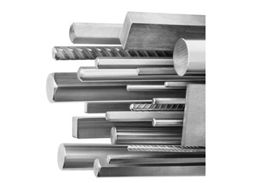 Steel Cast Billet Ingots, Billets and Blooms for production of High Carbon Steel Wire Rods-Specification
Steel Cast Billet Ingots, Billets and Blooms for production of High Carbon Steel Wire Rods-SpecificationIS 8951: 2001 |
Semi-finished steel products such as steel cast billet ingots, billets, and blooms are essential to the steel production process. They function as the feedstock or raw materials for additional shape, processing, and production of a broad range of steel products utilized in several sectors. |
|
| 106 |
 Steel ingots, blooms and billets for production of mild steel wire rods for general engineering purposes-Specification
Steel ingots, blooms and billets for production of mild steel wire rods for general engineering purposes-SpecificationIS 8952: 1995 |
Semi-finished steel products like steel ingots, blooms, and billets are essential to the production of a large range of completed steel goods, such as industrial equipment, mechanical parts, building materials, and automobile components. Their size, content, and quality are important aspects that affect how well the finished steel items work and behave. |
|
| 107 |
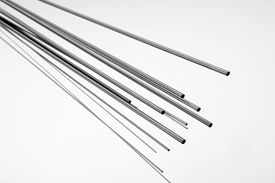 Specification for Steel Wire for Needles
Specification for Steel Wire for NeedlesIS 9962: 1981 |
Steel wire is a multipurpose and extensively utilized substance derived from steel, often consisting of iron, different proportions of carbon, and other alloying components. Its strength, durability, and flexibility make it a material that may be used in a wide range of sectors. To suit individual purposes, steel wire is available in a variety of sorts and grades. Because of its versatility, it is an essential part of contemporary building and industry. |
|
| 108 |
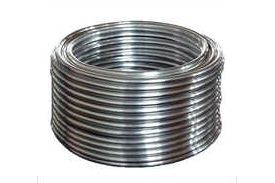 Specification for Low Carbon Steel Wire for Rivets for use in Bearing Industry
Specification for Low Carbon Steel Wire for Rivets for use in Bearing IndustryIS 4882: 1979 |
One kind of steel wire with a comparatively low carbon content is called low carbon steel wire. Because of its flexibility and simplicity of processing, it is one of the most widely used kinds of steel, with an average carbon content of less than 0.30% by weight. Because of its qualities, it may be used for a wide range of tasks, from straightforward wire goods to intricate machined components. Its appeal is further increased by the fact that producers can easily source and process it. |
|
| 109 |
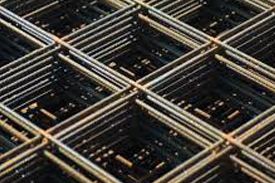 Specification for Hard-drawn Steel Wire Fabric for Concrete Reinforcement
Specification for Hard-drawn Steel Wire Fabric for Concrete ReinforcementIS 1566:1982 |
Concrete constructions are strengthened by the application of hard-drawn steel wire fabric. It is composed of a regular pattern of hard-drawn steel wires arranged to form a grid or mesh. In order to improve the concrete's tensile strength, durability, and fracture resistance, this fabric is implanted in it. When used in buildings, bridges, highways, and other infrastructure projects, it enhances the functionality and safety of concrete parts. |
|
| 110 |
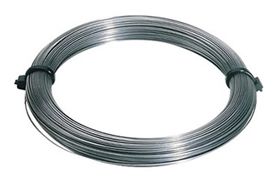 Steel Wires for Mechanical Springs Part-4 Stainless Steel Wire
Steel Wires for Mechanical Springs Part-4 Stainless Steel WireIS 4454 (Part 4): 2001 |
Stainless steel wire is a versatile and widely used material known for its unique properties and applications across various industries. It offers a combination of corrosion resistance, strength, durability and versatility crucial for many industrial and engineering applications. Their importance lies in their ability to enhance the performance, reliability and safety of products and systems. |
|
| 111 |
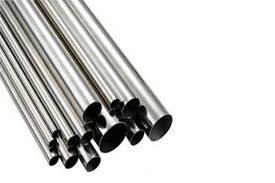 Steel tubes for structural purposes
Steel tubes for structural purposesIS 1161:2014 |
Steel tubes are cylindrical, hollow constructions composed of steel. To meet a broad range of industrial, commercial, and residential needs, including those related to building, manufacturing, energy, transportation, and more, they are available in a variety of sizes, forms, and requirements. These tubes are made from steel sheets or strips that are molded into the required shape using a variety of techniques, such as seamless fabrication, welding, and extrusion. |
|
| 112 |
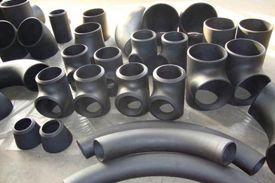 Steel Tubes, Tubulars and Other Wrought Steel Fittings Part 1-Steel Tubes
Steel Tubes, Tubulars and Other Wrought Steel Fittings Part 1-Steel TubesIS 1239 (Part 1): 2014 |
Steel tubes are hollow, cylindrical constructions that are mostly formed of steel, an iron and carbon-based metal alloy that is robust and long-lasting. These tubes are available in a variety of diameters, shapes, and grades to meet the needs of a broad range of commercial, industrial, and residential uses. |
|
| 113 |
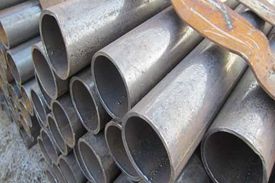 Steel tubes used for water-wells (upto 200 mm dia)
Steel tubes used for water-wells (upto 200 mm dia)IS 4270:2001 |
Steel, a strong, adaptable substance mostly consisting of iron and carbon, is the primary material used to create hollow, cylindrical steel tubes. Because of their strength, adaptability, and capacity to tolerate a broad range of environmental conditions, these tubes are extensively utilized in a variety of industries and applications.
|
|
| 114 |
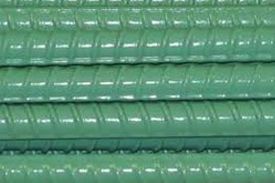 Fusion bonded epoxy coated reinforcing bars
Fusion bonded epoxy coated reinforcing barsIS 13620:1993 |
Fusion bonded epoxy (FBE) coated reinforcing bars, also known as epoxy-coated rebar, are coated steel reinforcement bars coated with an epoxy coating for protection. The fusion bonding procedure is used to apply this coating, which entails melting epoxy powder and applying it to the rebar's surface. |
|
| 115 |
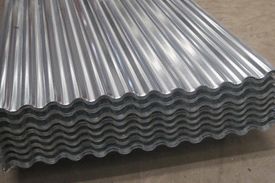 Galvanized steel sheets (plain and corrugated)
Galvanized steel sheets (plain and corrugated)IS 277:2003 |
Steel sheets that have undergone the galvanization process a coating of zinc are referred to as galvanized steel sheets. The steel sheets have various important qualities and advantages from this zinc coating, which makes them appropriate for a variety of uses. |
|
| 116 |
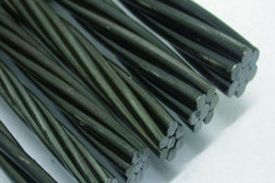 Uncoated Stress Relieved Low Relaxation Seven-ply Strand For Pre-stressed Concrete
Uncoated Stress Relieved Low Relaxation Seven-ply Strand For Pre-stressed ConcreteIS 14268:1995 |
Uncoated low relaxation that relieves tension A unique kind of steel reinforcement utilized in the building sector is seven-ply strand. These fibers are essential to the production of pre-stressed concrete. |
|
| 117 |
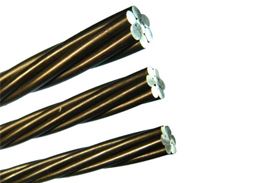 Indented wire for Pre-stressed concrete
Indented wire for Pre-stressed concreteIS 6003:2010 |
Steel wire that has been indented is used for a variety of purposes, mostly in the industrial and construction sectors. Its surface, which has several indentations or deformations throughout its length, is what makes it unique. When the wire is inserted into concrete or other materials, these indents offer mechanical interlocking, improving the wire's grip and bond. |
|
| 118 |
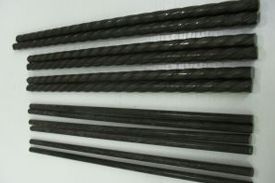 Uncoated stress relieved strand for Pre-stressed concrete
Uncoated stress relieved strand for Pre-stressed concreteIS 6006:2014 |
All models and brands of Uncoated stress relieved strand for Pre-stressed concrete are classified under IS 6006 and are required to get ISI Certification before its launch or import into the Indian market. ISI Certification will be provided to the product manufacturers (whether Indian or non-Indian) only and not provided to trader, dealer or distributor of the product. |
|
| 119 |
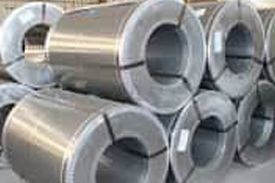 Oriented Electrical Steel Sheet and Strip Semi-Processed Type
Oriented Electrical Steel Sheet and Strip Semi-Processed TypeIS 15391:2003 |
In the electrical and electronics industries, oriented electrical steel sheets and strips particularly the semi-processed variety are essential components. Their capacity to boost energy economy, minimize losses, and facilitate multiple uses makes them indispensable elements in the creation of contemporary electrical systems, eco-friendly energy options, and effective infrastructure. |
|
| 120 |
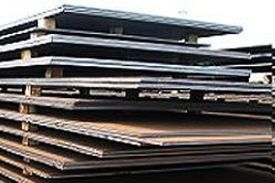 Steel plates for pressure vessels for intermediate and high temperature service including boilers
Steel plates for pressure vessels for intermediate and high temperature service including boilersIS 2002:2009 |
Steel is a common and adaptable building material, and steel plates are flat, sheet-like metal components composed of steel. Because of their strength, endurance, and adaptability, these plates are employed in a wide range of industries and applications. |
|
| 121 |
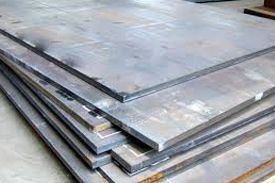 Steel plates for pressure vessels used at moderate and low temperature
Steel plates for pressure vessels used at moderate and low temperatureIS 2041:2009 |
Steel is a common and adaptable building material that is valued for its strength and durability. Steel plates are flat, rectangular metal sheets composed of steel. Because these plates can sustain large loads, offer structural support, and endure deformation, they are used in a variety of industries and applications. |
|
| 122 |
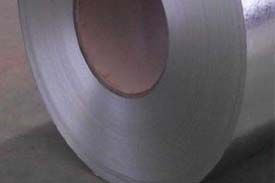 Hot rolled medium and high tensile structural steel
Hot rolled medium and high tensile structural steelIS 2062:2011 |
One kind of structural steel that is created by the hot rolling technique and has a high tensile strength is called hot rolled medium and high tensile structure steel. Because of its great tensile strength, which enables it to endure harsh environments and support huge weights, it is a vital material for a variety of applications, including manufacturing, transportation, and construction. |
|
| 123 |
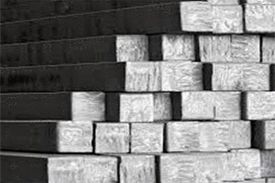 Carbon steel cast billet ingots, billets, blooms and slabs for rerolling into steel for general structural purpose
Carbon steel cast billet ingots, billets, blooms and slabs for rerolling into steel for general structural purposeIS 2830:2012 |
Cast carbon steel Through the casting process, intermediate forms of steel are created, including billet ingots, billets, blooms, and slabs. They are changed by a number of production techniques, including as forging, hot rolling, and cold rolling. |
|
| 124 |
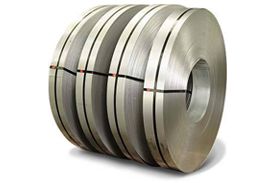 Cold rolled non-oriented electrical steel sheets and strip-fully processed type (CRNO)
Cold rolled non-oriented electrical steel sheets and strip-fully processed type (CRNO)IS 648:2006 |
Often referred to as CRNO (Cold Rolled Non-Oriented) steel, cold rolled non-oriented electrical steel sheets and strips are specialty materials used for electrical and electronic applications. These steel products are essential to the manufacturing of electrical components and equipment, especially those that need to have minimal iron loss and high magnetic efficiency. |
|
| 125 |
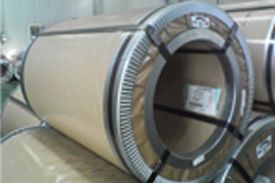 Grain oriented electrical steel sheet and strip (CRGO)
Grain oriented electrical steel sheet and strip (CRGO)IS 3024:2015 |
High magnetic permeability and little core loss are two of the exceptional magnetic qualities of grain-oriented electrical steel (GOES), also frequently referred to as cold-rolled grain-oriented steel, or CRGO. Because of these qualities, it is perfect for use in power transformer cores, especially those with high efficiency and low energy losses. |
|
| 126 |
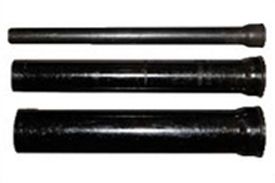 Centrifugally cast (spun) ductile iron pressure pipes for water, gas and sewage
Centrifugally cast (spun) ductile iron pressure pipes for water, gas and sewageIS 8329 : 2000 |
Spun ductile iron pipes, also known as centrifugally cast ductile iron pressure pipes, are a kind of pipe used in a variety of municipal and industrial applications for the transportation of water, gas, and sewage. These pipes are made by a sophisticated casting technique that gives them unique properties that enable the transportation of fluids under pressure. |
|
| 127 |
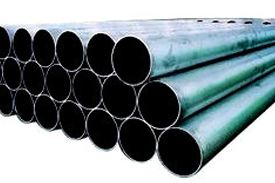 Ductile iron fittings for pressure pipes for water, gas and sewage
Ductile iron fittings for pressure pipes for water, gas and sewageIS 9523:2000 |
Specialized parts called ductile iron fittings are utilized in plumbing systems to make connecting, rerouting, and controlling fluids easier. These fittings are renowned for their strength, resilience to corrosion, and longevity since they are composed of ductile iron. |
|
| 128 |
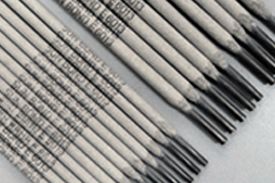 Mild steel for metal arc welding electrodes
Mild steel for metal arc welding electrodesIS 2879:1998 |
One kind of carbon steel with a low carbon content is mild steel, often referred to as low carbon or simple carbon steel. Because of its affordability, simplicity of production, and adaptability, it is one of the materials used in engineering and construction the most frequently. |
|
| 129 |
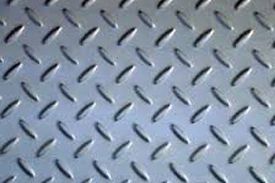 Steel Chequered Plates
Steel Chequered PlatesIS 3502:2009 |
Steel sheets or plates having a raised pattern of uniformly spaced projections or lines on their surface are called steel chequered plates, often referred to as checker or tread plates. Usually, these elevated patterns take the shape of squares, diamonds, or other geometric designs. Steel chequered plates are primarily used to increase traction and lower the chance of slippage. |
|
| 130 |
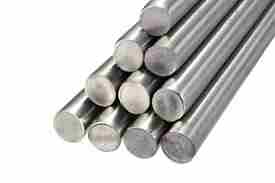 Hot Rolled Steel Plate (upto 6 mm) Sheet and Strip for the Manufacture of Low Pressure Liquefiable Gas Cylinders
Hot Rolled Steel Plate (upto 6 mm) Sheet and Strip for the Manufacture of Low Pressure Liquefiable Gas CylindersIS 6240: 2008 |
A slab or ingot of steel that has been heated above its recrystallization temperature and then rolled to the required thickness is referred to as hot rolled steel plate (up to 6 mm) sheet and strip. The product of this procedure, known as hot rolling, is flat steel sheets or strips with variable widths. When strength and economy are more important than precise dimensional tolerances and a beautiful surface finish, hot rolled steel is the better choice. |
|
| 131 |
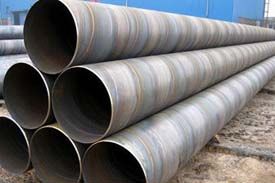 Hot rolled steel narrow width strip for welded tubes and pipes
Hot rolled steel narrow width strip for welded tubes and pipesIS 15647:2006 |
A type of steel product known as hot rolled steel narrow width strip is made by heating a steel billet or slab and then running it through a number of rollers to give it the required thickness and form. |
|
| 132 |
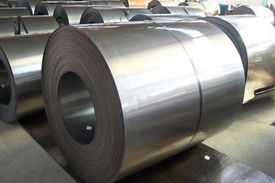 Cold reduced carbon steel sheets and strips Part 1 Cold Forming and Drawing Purpose
Cold reduced carbon steel sheets and strips Part 1 Cold Forming and Drawing PurposeIS 513 (Part-1): 2016 |
Steel products that have undergone a cold reduction process to obtain particular dimensions, thicknesses, and characteristics are referred to as cold reduced low carbon steel sheets and strips. Because of these materials' advantageous qualities, they are often employed in a variety of sectors and applications. |
|
| 133 |
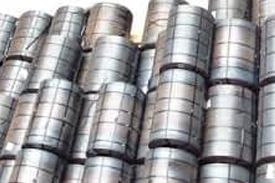 Hot Rolled Carbon Steel Sheet and Strip
Hot Rolled Carbon Steel Sheet and StripIS 1079: 2017 |
A steel billet or slab is heated to high temperatures and then passed through a series of rollers to reduce thickness and shape the material into sheets or strips. This process creates hot rolled carbon steel sheet and strip. One of the main techniques for forming and shaping steel products is the process known as hot rolling. |
|
| 134 |
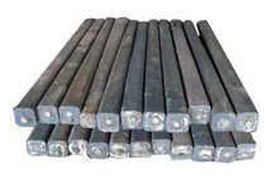 Carbon steel billets, blooms, slabs and bars for forgings
Carbon steel billets, blooms, slabs and bars for forgingsIS 1875:1992 |
Fundamental components of the steel industry and manufacturing industries are carbon steel billets, blooms, slabs, and bars. Their adaptability, durability, and capacity for customisation make them essential for manufacturing a broad selection of goods and parts utilized in numerous sectors. |
|
| 135 |
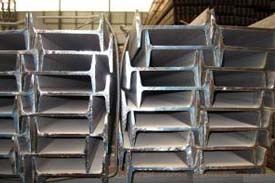 Hot Rolled Steel Flat Products for Structural Forming and Flanging Purposes
Hot Rolled Steel Flat Products for Structural Forming and Flanging PurposesIS 5986: 2017 |
A class of steel goods known as "hot rolled steel flat products" are made by the hot rolling process, which yields flat sheets or plates with certain measurements, thicknesses, and surface treatments. These are specialty steel items made for uses requiring formability, structural stability, and the capacity to be flanged, or bent or folded. |
|
| 136 |
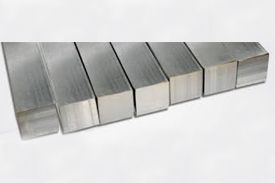 Hot Rolled bars for production of bright bars and machined parts for engineering applications
Hot Rolled bars for production of bright bars and machined parts for engineering applicationsIS 7283:1992 |
Steel items made by the hot rolling technique are known as hot rolled bars. This method involves heating a steel billet or ingot to a high temperature and then passing it through a number of rolling mills to thin it down and form it into different sizes and shapes of bars. High pressure and temperatures are characteristics of hot rolling, which makes it ideal for creating bars with superior mechanical qualities. |
|
| 137 |
 Hot Rolled Steel Strip for Welded Tubes and Pipes
Hot Rolled Steel Strip for Welded Tubes and PipesIS 10748:2004 |
One kind of steel product that is produced using the hot rolling method is hot rolled steel strip. In order to decrease thickness and shape the steel billet or slab into a strip with precise dimensions, it is heated to high temperatures and then passed through a succession of rolling mills. |
|
| 138 |
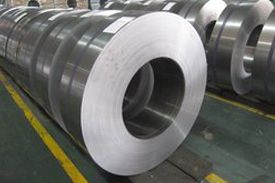 Hot Rolled Carbon Steel Strip For Cold Rolling Purposes
Hot Rolled Carbon Steel Strip For Cold Rolling PurposesIS 11513:2017 |
One kind of steel product produced by the hot rolling process is hot rolled carbon steel strip. In order to decrease thickness and shape the steel billet or slab into a strip with precise dimensions, it is heated to high temperatures and then passed through a succession of rolling mills. |
|
| 139 |
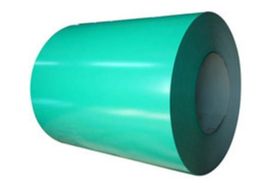 Continuously Pre-Painted Galvanized Steel Sheet and Coils
Continuously Pre-Painted Galvanized Steel Sheet and CoilsIS 14246:2013 |
Before being shipped to clients, steel goods that have undergone pre-treatment and coating are known as continuously pre-painted galvanized steel sheets and coils. The galvanized steel substrate is coated or painted with a protective layer during this procedure. Pre-painted galvanized steel sheets and coils are very important because of their special qualities and adaptability. |
|
| 140 |
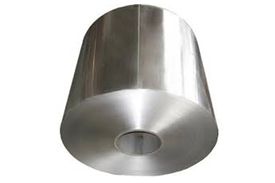 Pre-Painted Aluminium Zinc Alloy Metallic Coated Steel Strip and Sheet (Plain)
Pre-Painted Aluminium Zinc Alloy Metallic Coated Steel Strip and Sheet (Plain)IS 15965:2012 |
All models and brands of Pre-Painted Aluminium Zinc Alloy Metallic Coated Steel Strip and Sheet (Plain) are classified under IS 15965 and are required to get ISI Certification before its launch or import into the Indian market. ISI Certification will be provided to the product manufacturers (whether Indian or non-Indian) only and not provided to trader, dealer or distributor of the product. |
|
| 141 |
 Stainless Steel Sheets and Strips for Utensils
Stainless Steel Sheets and Strips for UtensilsIS 5522:2014 |
Because of its resistance to corrosion, strength, and aesthetic appeal, stainless steel sheets and strips are a commonly used and adaptable material. Stainless steel, an alloy including iron, chromium, nickel, and other components, is used to make them. Because of their special qualities and adaptability, stainless steel sheets and strips are used in a variety of goods and sectors. |
|
| 142 |
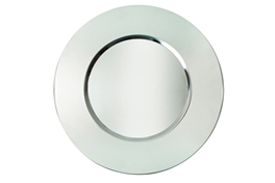 Stainless Steel Plate, Sheet and Strip-Specification
Stainless Steel Plate, Sheet and Strip-SpecificationIS 6911:2017 |
Because of its corrosion resistance, durability, and aesthetic appeal, stainless steel is a material of choice for many different industries. It is extensively utilized in industries including manufacturing, transportation, food processing, building, and healthcare. |
|
| 143 |
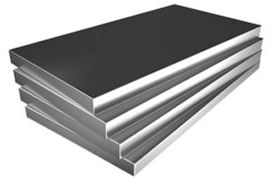 Low Nickel Austenitic Stainless Steel Sheet and Strip for Utensils and Kitchen Appliances-Specification
Low Nickel Austenitic Stainless Steel Sheet and Strip for Utensils and Kitchen Appliances-SpecificationIS 15997:2012 |
Low nickel austenitic stainless steel sheet and strip is a particular kind of stainless steel material that has an austenitic crystalline structure and a low nickel content. Because of its special qualities, this kind of stainless steel is frequently utilized to make a variety of kitchen equipment and utensils. These appliances are made of low nickel austenitic stainless steel, which makes them sanitary, long-lasting, and resilient to the challenging circumstances found in the kitchen. |
|
| 144 |
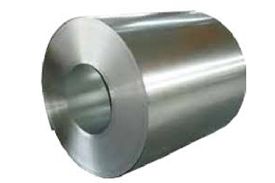 Cold reduced carbon steel sheets and strips Part 2 High Tensile and Multi-phase Steel
Cold reduced carbon steel sheets and strips Part 2 High Tensile and Multi-phase SteelIS 513(Part-2):2016 |
One kind of steel product that has undergone cold reduction to obtain particular dimensions and qualities is cold reduced carbon steel sheets and strips. They are a basic material in numerous sectors due to their versatility in uses. |
|
| 145 |
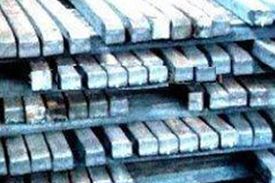 Alloy Steel billets, blooms and slabs for forging for general engineering purposes
Alloy Steel billets, blooms and slabs for forging for general engineering purposesIS 4368:1967 |
Semi-finished steel products such as alloy steel billets, blooms, and slabs are used as raw materials in a variety of engineering and industrial processes. The alloyed composition of these alloy steel types, which contains certain elements added to impart desirable attributes like improved strength, corrosion resistance, heat resistance, and wear resistance, is what distinguishes them. |
|
| 146 |
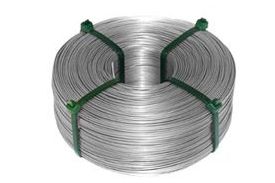 Steels for Cold Heading or Cold extrusion application Part-1 Wrought carbon and low alloy steels
Steels for Cold Heading or Cold extrusion application Part-1 Wrought carbon and low alloy steelsIS 11169 (Part 1): 1984 |
Steels that have undergone mechanical processing to reach their final forms include low alloy and wrought carbon steels. Iron and carbon make up the majority of carbon steel, which is highly durable and reasonably priced. Conversely, low alloy steel is made with trace quantities of extra alloying elements to give it certain characteristics. |
|
| 147 |
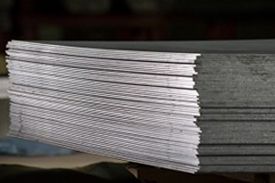 Structural Weather Resistant Steel
Structural Weather Resistant SteelIS 11587:1986 |
Often called "weathering steel," structural weather-resistant steel is a kind of steel made to withstand atmospheric corrosion and corrosion in outdoor settings. This particular steel is well-known for its special qualities, which enable it to develop a coating of protective rust when exposed to the weather. |
|
| 148 |
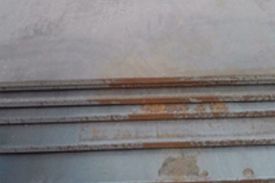 Fire resistant Steel-Specification
Fire resistant Steel-SpecificationIS 15103: 2002 |
Steel that is fire resistant, sometimes referred to as fireproof or fire resistant steel, is made to withstand high temperatures and keep its structural integrity in the event of a fire. These materials are utilized in applications including building construction, industrial facilities, and transportation infrastructure where fire safety is essential. |
|
| 149 |
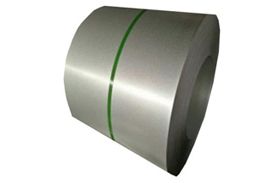 Hot Dip aluminum-Zinc alloy metallic coated steel strip and sheet (Plain)
Hot Dip aluminum-Zinc alloy metallic coated steel strip and sheet (Plain)IS 15961:2012 |
Often known as Aluzinc steel, hot dip aluminum-zinc alloy metallic coated steel strip and sheet is a kind of coated steel product that provides an ideal blend of corrosion resistance and visual attractiveness for use in a variety of applications and industries. It is essential to guaranteeing the resilience, sustainability, and safety of components and structures in industrial, infrastructure, and building projects. |
|
| 150 |
 Structural Steel for Building for Structures with improved seismic Resistance
Structural Steel for Building for Structures with improved seismic ResistanceIS 15962:2012 |
Structural steel is a fundamental material in modern construction due to its strength, durability and adaptability. It is crucial in various sectors, including commercial and residential buildings, bridges, industrial facilities and infrastructure projects. Structural steel provides architects and engineers with the flexibility to design innovative and resilient buildings that meet the needs of modern construction projects. |
|
| 151 |
IS 1110 : 2023 |
All models and brands of Ferrosilicon – Specification are classified under IS 1110 and are required to get ISI Certification before its launch or import into the Indian market. ISI Certification will be provided to the product manufacturers (whether Indian or non-Indian) only and not provided to trader, dealer or distributor of the product. |
|
| 152 |
 Specification for Ferronickel
Specification for FerronickelIS 4409 : 2023 |
The main constituents of ferronickel are iron (Fe) and nickel (Ni). It is a bright metallic solid that is produced when serpentine minerals such as limonite, garnierite, or serpentine undergo carbothermic reduction. Ferronickel makes it easier to produce products with distinctive catalytic, magnetic, and electrical properties. |
|
| 153 |
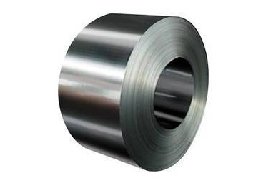 Specification for Hot rolled steel strip (bailing)
Specification for Hot rolled steel strip (bailing)IS 1029 : 1970 |
One kind of steel product that is produced using the hot rolling method is hot rolled steel strip. Steel slabs or billets are heated to a high temperature and then run through a number of rolling mills to create it. The steel becomes thinner as a result of this procedure. It lengthens it, producing a long, flat strip of steel with certain measurements and characteristics. |
|
| 154 |
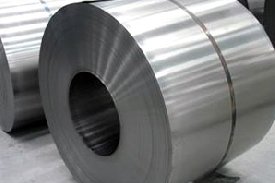 Specification for Hot-rolled mild steel sheet and strip in coil form for cold-reduced tinplate and cold-reduced black plate
Specification for Hot-rolled mild steel sheet and strip in coil form for cold-reduced tinplate and cold-reduced black plateIS 2385 : 1977 |
Hot rolling produces flat steel sheets or strips with precise dimensions and characteristics, which are known as hot-rolled mild steel sheets and strips. To make storage and shipping easier, these materials are coiled. |
|
| 155 |
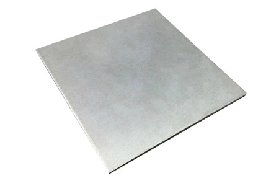 Specification for Structural steel for construction of hulls of ships
Specification for Structural steel for construction of hulls of shipsIS 3039 : 1988 |
Because of its exceptional strength, endurance, and load-bearing capabilities, structural steel is a kind of steel utilized in engineering and construction. Buildings, bridges, factories, skyscrapers, and other infrastructure projects all make extensive use of it. |
|
| 156 |
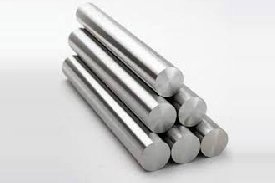 Tool steels-Specification
Tool steels-SpecificationIS 3748 : 2022 |
Specialized materials called tool steels are used to make tools, dies, and molds for a variety of industrial operations, such as die-casting, plastic injection molding, and metalworking. These steels were picked because of their remarkable qualities, which include high toughness, wear resistance, hardness, and thermal stability. |
|
| 157 |
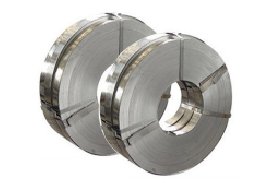 Steel for hardening and tempering-Specification
Steel for hardening and tempering-SpecificationIS 5517 : 1993 |
Iron with various proportions of carbon make up the majority of steel, an alloy that is extensively used and adaptable. Other elements and alloys are added to steel to give it certain qualities. Its strength, resilience, and flexibility make it one of the most important materials in engineering and construction. |
|
| 158 |
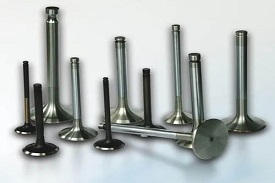 Alloys for Internal Combustion Engine Valve Applications - Specification
Alloys for Internal Combustion Engine Valve Applications - SpecificationIS 7494 : 2023 |
Alloys for internal combustion engine valve applications are meticulously engineered materials designed to withstand the demanding conditions within the engine environment. These alloys generally comprise high-temperature resistant metals such as stainless steel, cobalt-based superalloys, or nickel-based alloys, which offer excellent heat resistance, corrosion resistance, and mechanical properties under extreme temperatures and pressures. |
|
| 159 |
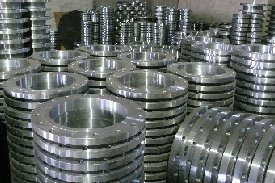 Specification for Carbon manganese steel forgings for pressure vessels
Specification for Carbon manganese steel forgings for pressure vesselsIS 12146 : 1987 |
The main constituents of carbon manganese steel, an alloy steel type, are manganese (Mn), carbon (C), and iron (Fe). This steel alloy is employed in many different industrial applications and is renowned for its strength, resilience, and adaptability. |
|
| 160 |
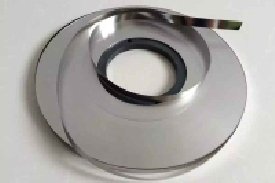 Magnetic materials-specification for individual material-Fe based amorphous strip delivered in the semi-processed state
Magnetic materials-specification for individual material-Fe based amorphous strip delivered in the semi-processed stateIS 16585 : 2023 |
Substances that interact with magnetic fields are known as magnetic materials because they possess magnetic characteristics. Based on their magnetic characteristics and behavior, these materials may be divided into several groups. |
|
| 161 |
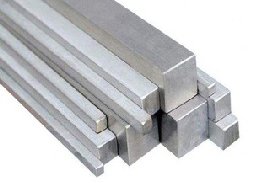 Carbon steel cast billet ingots, billets, blooms and slabs for re-rolling into structural steel (ordinary quality)-Specification
Carbon steel cast billet ingots, billets, blooms and slabs for re-rolling into structural steel (ordinary quality)-SpecificationIS 2831 : 2012 |
Semi-finished steel products such as carbon steel cast billet ingots, billets, blooms, and slabs are utilized as raw materials in a variety of sectors, especially in the production of structural steel, building materials, and other industrial uses. |
|
| 162 |
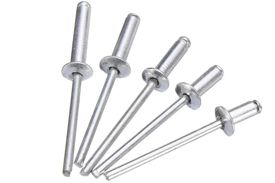 Steel Rivet Bars (Medium and High Tensile) for Structural Purposes
Steel Rivet Bars (Medium and High Tensile) for Structural PurposesIS 1148: 2009 |
In structural engineering and construction, steel rivet bars—whether they are medium- or high-tensile—are essential elements. Their significance stems from their capacity to give a variety of structures—from famous bridges and industrial facilities to residential buildings—strength, stability, and safety. |
|
| 163 |
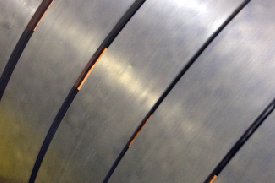 Stampings / laminations / cores of transformers (with or without winding) made from-Grain Oriented Electrical Steel Sheet and Strip or Cold Rolled Non-oriented Electrical Steel Sheet and Strip ( Scheme-IV )
Stampings / laminations / cores of transformers (with or without winding) made from-Grain Oriented Electrical Steel Sheet and Strip or Cold Rolled Non-oriented Electrical Steel Sheet and Strip ( Scheme-IV )IS 3024/IS 648 |
All models and brands of Stampings / laminations / cores of transformers (with or without winding) made from - Grain Oriented Electrical Steel Sheet and Strip or Cold Rolled Non-oriented Electrical Steel Sheet and Strip are classified under IS 3024/IS 648 and are required to get ISI Certification before its launch or import into the Indian market. ISI Certification will be provided to the product manufacturers (whether Indian or non-Indian) only and not provided to trader, dealer or distributor of the product. |
|
| 164 |
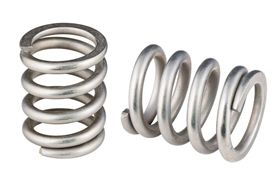 Steel For the Manufacture of Volute And Helical Springs ( for Railway Rolling Stock )-Specification
Steel For the Manufacture of Volute And Helical Springs ( for Railway Rolling Stock )-SpecificationIS 3195: 1992 |
Steel is a commonly utilized, adaptable material with a wide range of uses in many sectors. It's an alloy mostly made of carbon and iron. Nonetheless, other elements like phosphorus, silicon, sulfur, and manganese are frequently added to get certain qualities. Because of its flexibility, resilience, and durability, it is a necessary material in contemporary civilization, helping to build transportation, manufacturing, infrastructure, and a host of other businesses. |
|
| 165 |
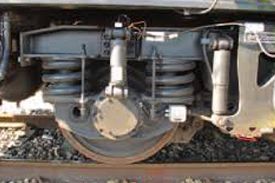 Steel for the manufacture of Laminated Springs ( Railway Rolling Stock ) Part-1 Flat Sections-Specification
Steel for the manufacture of Laminated Springs ( Railway Rolling Stock ) Part-1 Flat Sections-SpecificationIS 3885-Part-1: 1992 |
Iron and carbon make up the majority of this versatile and extensively used alloy, with trace quantities of manganese, silicon, sulfur, and phosphorus. It is a vital material in many different sectors and applications because of its outstanding strength, resilience, and versatility. |
|
| 166 |
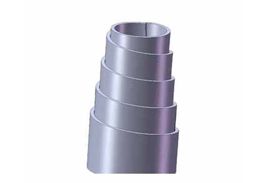 Specification for Steel for the manufacture of volute, helical and laminated springs for automotive suspension
Specification for Steel for the manufacture of volute, helical and laminated springs for automotive suspensionIS 3431: 1982 |
Iron, carbon, and minor quantities of additional elements typically manganese, silicon, sulfur, and phosphorus make up the versatile and commonly used alloy steel. Because of its strength, resilience, and flexibility, it is an essential material for many contemporary industrial and construction applications, advancing several fields and raising living standards. |
|
| 167 |
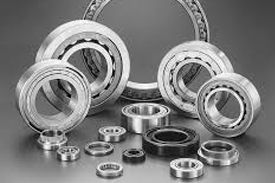 Steel for the manufacture of Laminated Springs ( Railway Rolling Stock ) Part-2 Rib and Groove Sections-Specification
Steel for the manufacture of Laminated Springs ( Railway Rolling Stock ) Part-2 Rib and Groove Sections-SpecificationIS 3885-Part- 2: 1992 |
Iron, carbon, and minor quantities of additional elements typically manganese, silicon, sulfur, and phosphorus make up the versatile and commonly used alloy steel. Because of its extraordinary qualities, it is one of the most significant materials in a variety of sectors and applications. |
|
| 168 |
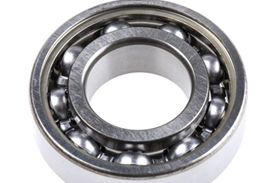 Cold-rolled Carbon Steel Strips for Ball and Roller Bearing Cages or Retainers-Specification
Cold-rolled Carbon Steel Strips for Ball and Roller Bearing Cages or Retainers-SpecificationIS 4397: 1999 |
Steel that has been cold-rolled into thin, flat sheets or strips is known as cold-rolled carbon steel strips. In this manufacturing process, hot-rolled steel is reduced in thickness and has its surface polish improved by being run through a series of rollers at room temperature. The steel strips receive additional mechanical and dimensional qualities via cold rolling. |
|
| 169 |
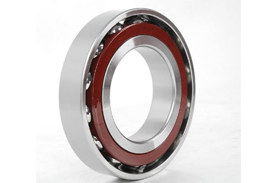 Carbon-chromium Steel for the Manufacture of Balls, Rollers and Bearing Races-Specification
Carbon-chromium Steel for the Manufacture of Balls, Rollers and Bearing Races-SpecificationIS 4398: 1994 |
One kind of alloy steel that has carbon and chromium as its main alloying constituents is called carbon-chromium steel. This steel alloy is renowned for having remarkable strength, hardness, and corrosion and wear resistance. |
|
| 170 |
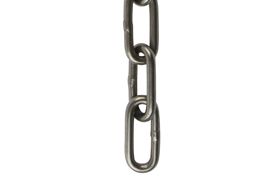 Specification for Steel For Electrically Welded Round Link Chains
Specification for Steel For Electrically Welded Round Link ChainsIS 6967: 1973 |
Steel is a strong, long-lasting, and often used material that is valued for all of these qualities. It is essential to many global businesses and applications. |
|
| 171 |
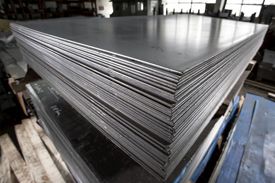 Specification for Cold rolled medium, high carbon and low alloy steel strip for general engineering purposes
Specification for Cold rolled medium, high carbon and low alloy steel strip for general engineering purposesIS 7226: 1974 |
Medium, high carbon, and low alloy cold-rolled steel strips are specialty steel products that go through a cold-rolling process to get certain dimensions and qualities. They are useful in sectors where surface smoothness, strength, and precision are important factors because of their customized qualities and controllable thickness. |
|
| 172 |
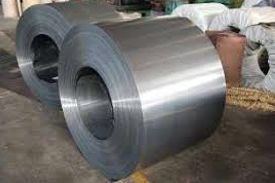 Steel ingots, billets and blooms for the production of springs, rivets and screws for general engineering applications-Specification
Steel ingots, billets and blooms for the production of springs, rivets and screws for general engineering applications-SpecificationIS 8052: 2006 |
Semi-finished steel products such as steel ingots, billets, and blooms are used as raw materials in a variety of downstream production processes. They form the basis for an extensive array of steel products that are employed in several industries, including manufacturing, transportation, and construction. |
|
| 173 |
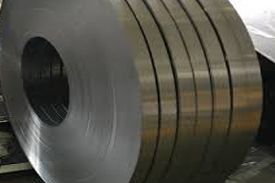 Specification for Cold rolled steel strips for carbon steel razor blades
Specification for Cold rolled steel strips for carbon steel razor bladesIS 9476: 1980 |
Cold reduction is the process of running steel through a series of rollers at room temperature or slightly below it. The result is flat-rolled steel products known as cold-rolled steel strips. These materials, distinguished for their quality, accuracy, and adaptability to a range of consumer and industrial uses, are known for their strips. |
|
| 174 |
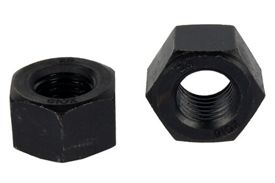 Steels for High Temperature Bolting Applications-Specification
Steels for High Temperature Bolting Applications-SpecificationIS 14331:1995 |
Because of its remarkable characteristics, steel is a material that can be employed in a broad range of industries and applications. Iron and carbon make up the majority of the alloy, with trace quantities of manganese, silicon, and occasionally alloying metals like chromium, nickel, and molybdenum. Its exceptional blend of strength, adaptability, durability, and affordability accounts for its significance. |
|
| 175 |
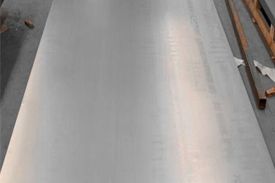 Low carbon high strength cold rolled steel sheets and coils for cold forming-Specification
Low carbon high strength cold rolled steel sheets and coils for cold forming-SpecificationIS 14491:1997 |
Steel goods with a distinct set of qualities are cold rolled sheets and coils of low carbon, high strength steel. These steel items are made for uses where it's necessary to be able to bend, form, or be heated to room temperature. |
|
| 176 |
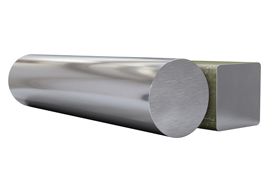 Stainless Steel Blooms Billets and Slabs for Forging
Stainless Steel Blooms Billets and Slabs for ForgingIS 6529:1996 |
Stainless steel is used to make semi-finished steel products such as billets, slabs, and blooms. Every one of these goods is used as an input in a number of production procedures, such as extrusion, rolling, and forging. They are vital parts of the oil and gas, aerospace, automotive, construction, and industrial industries, as well as the stainless steel industry. |
|
| 177 |
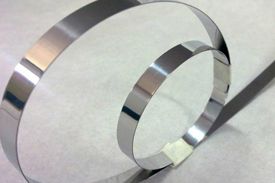 Cold-Rolled Stainless Steel Strips for Razor Blades
Cold-Rolled Stainless Steel Strips for Razor BladesIS 9294:2023 |
Precision-engineered materials, cold-rolled stainless steel strips are essential to many sectors, including manufacturing, automotive, aerospace, construction, and electronics. Cold rolling is the method used to create these strips, in which the thickness of stainless steel coils is decreased to get desired shapes and characteristics. |
|
| 178 |
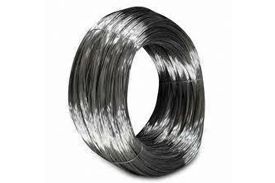 Stainless Steel for Welding Electrode Core Wire
Stainless Steel for Welding Electrode Core WireIS 10631:1983 |
Stainless steel's resistance to corrosion, durability, adaptability, and aesthetic appeal make it a useful material with a wide range of uses. It is a favored option in sectors where component lifespan and integrity are essential. |
|
| 179 |
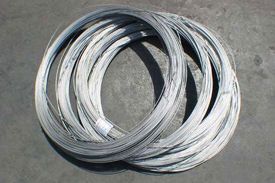 Non-Magnetic stainless steel for electrical applications Part-2 Specific requirements for binding wire
Non-Magnetic stainless steel for electrical applications Part-2 Specific requirements for binding wireIS 10632 (Part 2): 1983 |
Stainless steel that has little to no magnetic characteristics is known as non-magnetic stainless steel. Non-magnetic stainless steel is made expressly to have a low magnetic susceptibility, in contrast to other varieties of stainless steel that, depending on their composition, may be magnetic. |
|
| 180 |
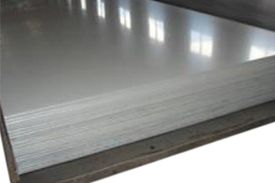 Non-Magnetic stainless steel for electrical applications Part-3 Specific requirements for sheets, strips and plates
Non-Magnetic stainless steel for electrical applications Part-3 Specific requirements for sheets, strips and platesIS 10632 (Part 3):1983 |
A specific variety of stainless steel called non-magnetic stainless steel is distinguished by its absence of magnetic characteristics. It is a significant substance that is essential to the functionality, security, and efficacy of many delicate and high-tech applications, as well as those where longevity and cleanliness are crucial. Because of its special qualities, it is an ideal option for certain sectors and settings. |
|
| 181 |
 Steels for cold heading or cold extrusion applications-Specification Part-2 Stainless steel
Steels for cold heading or cold extrusion applications-Specification Part-2 Stainless steelIS 11169 (Part 2): 1989 |
Steel is an essential component of contemporary civilization and is used extensively in industry, transportation, infrastructure, and many other fields. Its significance stems from its capacity to provide robustness, longevity, and adaptability in a variety of settings. |
|
| 182 |
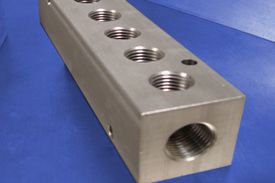 Steels for Pneumatic Tools
Steels for Pneumatic ToolsIS 5651:1987 |
Steel is an alloy with a high iron content and a low carbon content that is used extensively and is very versatile. Due to its strength, resilience, and adaptability, it is a vital component of many different sectors and uses, ranging from large-scale infrastructure projects to everyday consumer goods. |
|
| 183 |
 Heat Resisting Steels
Heat Resisting SteelsIS 9516:1980 |
A class of alloys known as heat-resistant or high-temperature steels are heat-resisting steels because they are made especially to endure high temperatures. They are crucial in a variety of applications, from metallurgy and petrochemical processing to power generation and aircraft, because of their capacity to retain mechanical characteristics and fend against oxidation, creep, and corrosion. More performance and safety in high-temperature settings are made possible by the development of sophisticated heat-resisting alloys. |
|
| 184 |
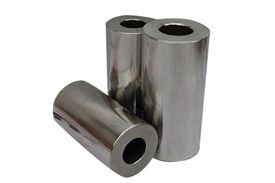 Steels For Piston Pins ( Gudgeon Pins )
Steels For Piston Pins ( Gudgeon Pins )IS 11952:1986 |
Steel is a material that is widely utilized and adaptable, and it is essential to many different industries and uses. It is an alloy with qualities mostly derived from iron, to which minor quantities of carbon and other elements are added. Because of its strength, durability, and resistance to corrosion, steel is a preferred material for a variety of applications. |
|
| 185 |
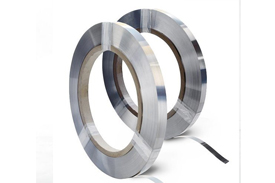 Alloys used in Electrical Resistance Metallic Heating Elements
Alloys used in Electrical Resistance Metallic Heating ElementsIS 12045:1987 |
Alloys are substances made up of two or more elements, usually metals, mixed together to provide the combined material desired qualities not present in the separate components. For certain uses, they are designed to enhance properties like strength, hardness, resistance to corrosion, or electrical conductivity. |
|
| 186 |
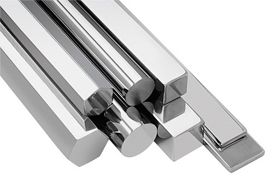 18 Percent Nickel Maraging Steel Bars and Rods
18 Percent Nickel Maraging Steel Bars and RodsIS 14652: 1999 |
Bars and rods made of 18% nickel maraging steel are unusual materials with outstanding strength and durability. They belong to the family of steel known as maraging steel, which gets its name from the terms "aging" and "martensitic" because of the heat treatment technique that improves its characteristics. These materials are beneficial in a variety of high-performance and crucial applications because of their outstanding strength and toughness. |
|
| 187 |
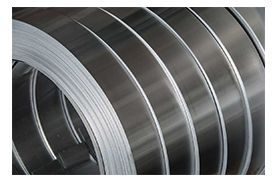 Soft Magnetic Iron Strips
Soft Magnetic Iron StripsIS 11946:1987 |
Soft magnetic iron strips are essential parts used in the manufacturing of power conversion apparatus and electromagnetic devices. They are crucial to many sectors, including electronics, power distribution, and telecommunications, because of their special magnetic characteristics, which allow for the effective control and transformation of electrical energy. |
|
| 188 |
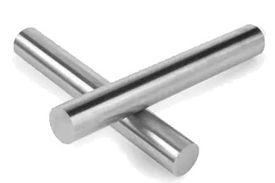 Soft Magnetic Iron Rods, Bars Flats and Sections
Soft Magnetic Iron Rods, Bars Flats and SectionsIS 11947: 1987 |
Because of its unusual magnetic qualities, soft magnetic iron rods, bars, flats, and sections are ideal for a wide range of electrical and electromagnetic applications. These materials are vital for many sectors that depend on decreased energy losses, effective energy conversion, and precise control of magnetic fields. Their ability to distribute and use energy in a sustainable and dependable manner is made possible by their magnetic characteristics, which are essential for a variety of electrical and electronic applications. |
|
| 189 |
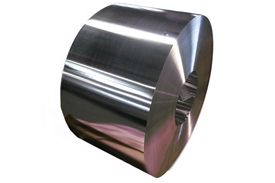 Cold-reduced Electrolytic Tin Plate
Cold-reduced Electrolytic Tin PlateIS 1993 : 2018 |
A flexible material that is well-known for its capacity to maintain and safeguard packing contents, cold-reduced electrolytic tin plate is appropriate for a variety of uses where corrosion resistance and visual attractiveness are crucial. It is an essential material for the packaging sector and many other applications where product safety and customer confidence are critical due to its food safety qualities and recyclability. |
|
| 190 |
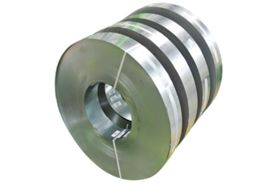 Cold-reduced Electrolytic Chromium or Chromium oxide-coated steel
Cold-reduced Electrolytic Chromium or Chromium oxide-coated steelIS 12591: 2018 |
Steel that has undergone a coating procedure is known as chromium oxide-coated steel or cold-reduced electrolytic chromium steel. It is essential to many industries because it provides a unique blend of qualities including durability, safety, beauty, and resistance to corrosion. Because of its special qualities, products last longer, are more affordable, and can endure adverse environments, which guarantees the dependability and quality of a wide range of applications. |
|
| 191 |
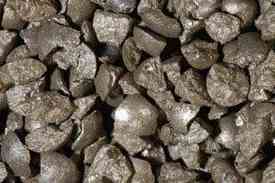 Malleable iron shots and grits for use in foundries-Specification
Malleable iron shots and grits for use in foundries-SpecificationIS 9139: 2023 |
Abrasive materials derived from malleable iron include shots and grits. They are employed in many different cleaning and surface preparation tasks. These angular, tiny particles are well-known for being long-lasting and efficient at eliminating coatings, rust, dirt, and scale from a variety of surfaces. |
|
| 192 |
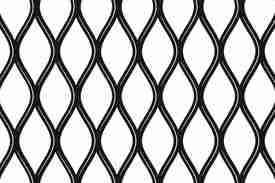 Expanded Metal Steel Sheets For General Purposes
Expanded Metal Steel Sheets For General PurposesIS 412: 1975 |
Because of its special qualities and design, expanded metal steel sheets are a flexible material with many uses. These sheets are made by stretching and cutting a solid metal sheet, which leaves a pattern of gaps or spaces with geometric patterns, such as diamond shapes. |
|
| 193 |
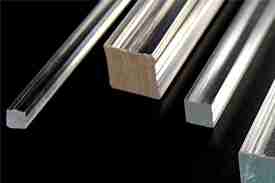 Steel Billets, Bars and Sections For Boilers
Steel Billets, Bars and Sections For BoilersIS 2100: 1970 |
Because of their flexibility, strength, and versatility, steel billets, bars, and sections are vital items in a variety of industries and applications. They are used in the making of equipment, automobiles, and a variety of consumer and industrial goods, as well as in the construction of buildings, bridges, and infrastructure. |
|
| 194 |
 Mild Steel Rivet Bars for Ship Building
Mild Steel Rivet Bars for Ship BuildingIS 3298: 1981 |
Round or cylindrical steel bars, usually composed of low-carbon steel, are known as mild steel rivet bars. They are employed in the production of rivets, which are cylindrical, short metal pins used in the riveting process to connect or fix metal components. |
|
| 195 |
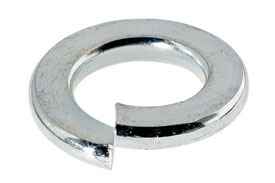 Steel for Spring Washers
Steel for Spring WashersIS 4072: 1975 |
Steel is a widely utilized and adaptable material in many different sectors, including building and engineering. It is an alloy mostly made of iron, carbon, and trace quantities of other elements that may have an impact on its characteristics. |
|
| 196 |
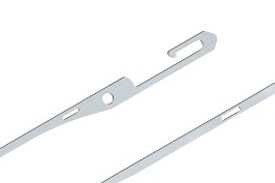 Heald Wire
Heald WireIS 8565: 1977 |
In order to generate the shed through which the weft thread is carried to make a woven fabric, heald wires are an essential component of the weaving process. Depending on the sort of weaving machine being used, they can operate manually or automatically and come in a variety of designs and materials. |
|
| 197 |
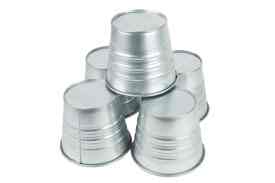 Plates for Galvanizing Pots
Plates for Galvanizing PotsIS 8917: 1978 |
Steel is a strong, widely-used metal that is recognized for its durability and strength. Steel plates are thin, flat sheets or plates composed of steel. Their remarkable mechanical and structural qualities find them use in a wide range of industries. |
|
| 198 |
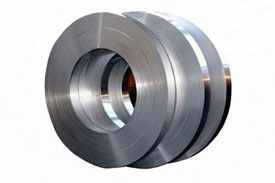 Hot Rolled Steel Plates Sheets and Strips for Manufacture of Agricultural Discs
Hot Rolled Steel Plates Sheets and Strips for Manufacture of Agricultural DiscsIS 9442: 1980 |
All brands of Hot Rolled Steel Plates Sheets and Strips for Manufacture of Agricultural Discs are classified under IS 9442 and are required to get ISI Certification before its launch or import into the Indian market. ISI Certification will be provided to the product manufacturers (whether Indian or non-Indian) only and not provided to trader, dealer or distributor of the product.
|
|
| 199 |
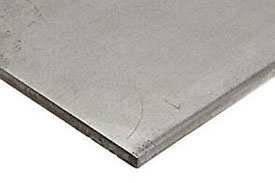 Cold-Reduced And Hot-Rolled Carbon Steel Sheet for Porcelain Enamelling
Cold-Reduced And Hot-Rolled Carbon Steel Sheet for Porcelain EnamellingIS 9485: 1980 |
One kind of steel product that is produced by cold rolling is called cold-reduced carbon steel sheet. In this process, hot-rolled steel that was first produced at high temperatures is passed through a succession of rollers at room temperature to reduce thickness and improve surface smoothness. Steel that has undergone cold reduction has improved surface quality and dimensional precision, making it more useful in a variety of settings. |
|
| 200 |
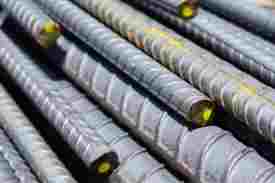 Structural Steel (Ordinary Quality)
Structural Steel (Ordinary Quality)IS 15911:2010 |
Because of its adaptability, strength, efficiency, sustainability, and capacity to build sturdy, secure buildings, structural steel of standard grade is frequently utilized in the building and infrastructure development industries. For structural engineers and builders, it offers a dependable and affordable option. This grade of steel's ease of workability and weldability contribute to its importance in the construction sector. |
|
| 201 |
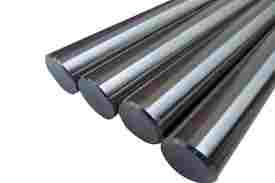 Carbon and Carbon-Manganese Free-Cutting Steels
Carbon and Carbon-Manganese Free-Cutting SteelsIS 4431: 1978 |
A particular class of steel alloys known as "carbon and carbon-manganese free-cutting steels" is made to provide better chip formation and machinability. These steels are perfect for high-speed machining and the production of intricately shaped components because of their ease of cutting, drilling, and turning. |
|
| 202 |
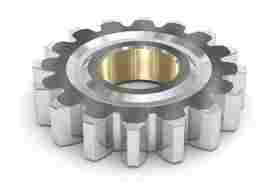 Case Hardening Steels
Case Hardening SteelsIS 4432: 1988 |
A particular family of steel alloys known as case hardening steels are made for a surface-hardening procedure known as case hardening. It usually includes between 0.10 to 0.30% of carbon, which is a pretty minor quantity. |
|
| 203 |
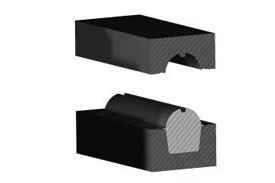 Steels for Die Blocks for Drop Forging
Steels for Die Blocks for Drop ForgingIS 5518: 1996 |
Steel is a common and adaptable material in building and manufacturing. It is an iron and carbon alloy with trace quantities of other elements added to improve its characteristics. Steel is one of the most important materials in contemporary society because of its reputation for strength, durability, and adaptability. |
|
| 204 |
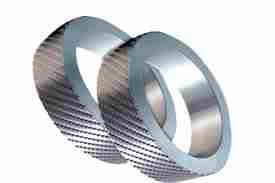 Forged or Rolled CTC Segments
Forged or Rolled CTC SegmentsIS 8748: 1978 |
CTC (Crush, Tear, Curl) segments, which are forged and rolled, are crucial parts of tea processing equipment, especially for making black tea. In the course of processing tea, these sections compress, shred, and curl the tea leaves. Forged segments may be tailored to fulfill individual needs and are renowned for their remarkable strength and durability. Rolled segments provide uniformity and standards while being economical and effective. |
|
| 205 |
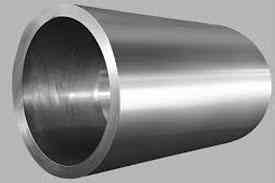 Quenched and Tempered Alloy Steel Forgings for Pressure Vessels
Quenched and Tempered Alloy Steel Forgings for Pressure VesselsIS 12145: 1987 |
Forgings composed of alloy steel that have undergone a particular heat treatment procedure known as quenching are specialist metal components known as quenched alloy steel forgings. These forgings are excellent choices for a variety of applications since the alloy steel gains improved mechanical and performance qualities from this heat treatment. |
|
| 206 |
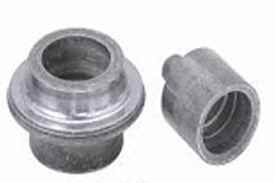 Tool Steel Forgings for Metal Forming
Tool Steel Forgings for Metal FormingIS 13387: 1992 |
Tool steel forgings are specialist metal parts composed of tool steel, a high-carbon and high-alloy steel variety that is particularly tough, resilient to wear, and long-lasting. They are ideal for uses where accuracy, dependability, and performance are essential because to their exceptional hardness, strength, and resistance to wear. |
|
| 207 |
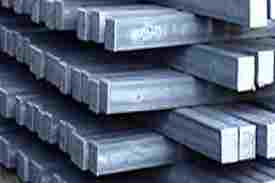 Carbon and Low Alloy Billets, Blooms, Slabs and Bars for Manufacture of Shell Bodies and Proof Shots Used In Defence Servicess
Carbon and Low Alloy Billets, Blooms, Slabs and Bars for Manufacture of Shell Bodies and Proof Shots Used In Defence ServicessIS 14698:1999 |
Semi-finished forms of steel, such as carbon and low alloy billets, blooms, slabs, and bars, are essential raw materials used in a variety of sectors, such as building, manufacturing, and energy. Carbon steel or low alloy steel are commonly used to make these items. They are created using procedures including rolling, forging, and casting. |
|
| 208 |
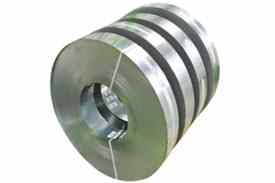 Cold-Reduced tinmill products-Blackplate
Cold-Reduced tinmill products-BlackplateIS/ISO 11951 : 2016 |
A steel sheet or coil known as "black plate" is usually composed of low carbon steel. It is a cold-rolled steel product that is simple, uncoated, and has a matte black surface. The primary use of black plate in the steel industry is in the manufacturing of metal containers, which is a substantial business. |
|
| 209 |
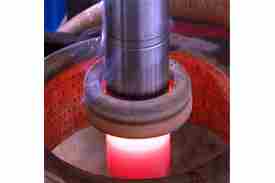 Flame and Induction Hardening Steels
Flame and Induction Hardening SteelsIS 3930: 1994 |
Steel components may be made harder by the practical procedures of induction and flame hardening, which is especially helpful in situations when the parts are subjected to wear and abrasion. Gears, shafts, and other components are frequently produced using these technologies in the automotive, aerospace, and industrial sectors. |
|
| 210 |
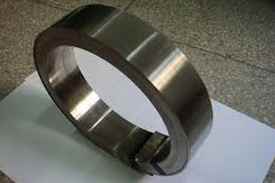 Thermostat Metal Sheet and Strip
Thermostat Metal Sheet and StripIS 5478: 1969 |
Thermostat metal is a composite material made of many metallic layers with varying expansion coefficients that is frequently shaped like sheets and strips. The result has major dimensional variations when these layers are firmly bonded together and exposed to temperature fluctuations. Reflexivity, the term for this shape or flexure change brought on by temperature variations, is a feature that every thermostat metal possesses by nature. |
|
| 211 |
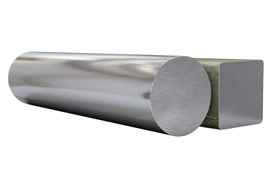 Stock for Forgings produced from Continuously Cast Blooms, Billets and Slabs
Stock for Forgings produced from Continuously Cast Blooms, Billets and SlabsIS 13352: 1992 |
Blossoms, billets, and slabs produced by continuous casting are examples of semi-finished goods. In order to produce a solid, consistent form, molten metal is continuously poured into a mold during this manufacturing process. These forms are utilized as raw materials in many different sectors and applications, especially in manufacturing and metalworking operations. |
|
| 212 |
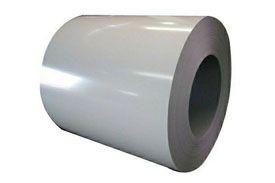 Electrogalvanized Hot Rolled and Cold Reduced Carbon Steel Sheets and Strips
Electrogalvanized Hot Rolled and Cold Reduced Carbon Steel Sheets and StripsIS 17404 : 2020 |
Hot rolled and cold reduced carbon steel sheets and strips that have been electrogalvanized are adaptable materials that are utilized in a variety of sectors, such as building, automobile manufacture, appliance manufacturing, etc. While the steel's mechanical qualities and surface smoothness are improved during the hot rolling and cold reduction processes, the electrogalvanized coating protects against corrosion and makes the steel useful for a variety of applications. |
|
| 213 |
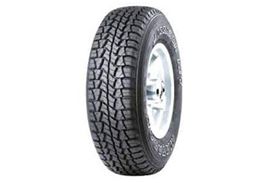 Bead Wires for Tyres
Bead Wires for TyresIS 4824:2006 |
High-carbon steel with a red copper or bronze surface coating is what makes up bead wire. These wires are usually supplied in coils and are trimmed to length before being formed into loops and firmly secured to the tire bead by welding or other methods. To make the last bead, the wire is then covered with a rubber compound and vulcanized. |
|
| 214 |
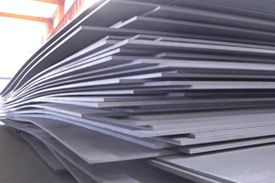 High Tensile Strength Flat Rolled Steel Plate (Up to 6 mm), Sheet and Strip for the Manufacture of Welded Gas Cylinder
High Tensile Strength Flat Rolled Steel Plate (Up to 6 mm), Sheet and Strip for the Manufacture of Welded Gas CylinderIS 15914:2011 |
All models and brands of High Tensile Strength Flat Rolled Steel Plate (Up to 6 mm), Sheet and Strip for the Manufacture of Welded Gas Cylinder are classified under IS 15914 and are required to get ISI Certification before its launch or import into the Indian market. ISI Certification will be provided to the product manufacturers (whether Indian or non-Indian) only and not provided to trader, dealer or distributor of the product. |
|
| 215 |
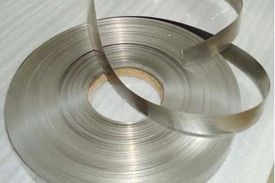 Specification for Cold-rolled Steel Strips For Springs
Specification for Cold-rolled Steel Strips For SpringsIS 2507: 1975 |
Cold-rolling is a process that includes running steel through a series of rollers at room temperature or slightly below. The result is a form of steel product known as cold-rolled steel strips. The steel strips may acquire a number of important properties and advantages from this procedure. |
|
| 216 |
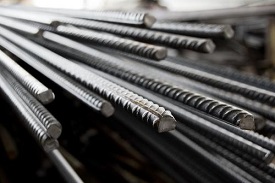 High strength deformed steel bars and wires for concrete reinforcement - Specification
High strength deformed steel bars and wires for concrete reinforcement - SpecificationIS 1786:2008 |
High strength deformed steel bars and wires are commonly used for concrete reinforcement in construction projects where enhanced structural strength and durability are required. These specialized steel products are engineered to withstand higher loads and stresses, making them ideal for reinforcing concrete elements subjected to heavy loads or harsh environmental conditions. |
|
| 217 |
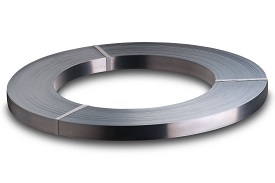 Cold Rolled Steel Strips (Box Strappings)
Cold Rolled Steel Strips (Box Strappings)IS 5872:1990 |
Cold rolled steel strips are narrow, elongated pieces of steel that have undergone the cold rolling process. This manufacturing method involves passing steel stock through pairs of rolls at room temperature or slightly below to reduce thickness and improve surface finish. These strips exhibit precise dimensions, smooth surfaces and enhanced mechanical properties compared to hot-rolled steel strips. |
|
| 218 |
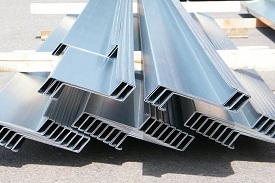 Galvanized Structural Steel
Galvanized Structural SteelIS 16732:2019 |
Galvanized structural steel is a type of steel that has been coated with a layer of zinc through a process called galvanization. This coating provides excellent corrosion resistance, making galvanized structural steel highly durable and suitable for outdoor applications exposed to harsh environmental conditions. The galvanization process involves immersing the steel in a bath of molten zinc, allowing the zinc to bond to the surface of the steel, creating a tightly bonded zinc-iron alloy layer.
|
|
| 219 |
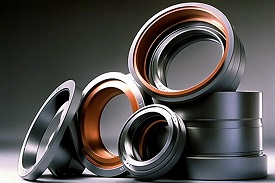 Heat-Treated Steels Alloy and Free-Cutting Steels-Ball and Roller Bearing Steels
Heat-Treated Steels Alloy and Free-Cutting Steels-Ball and Roller Bearing SteelsIS 17111:2019 (ISO 683-17:2014) |
Heat-treated steels, including alloy and free-cutting steels, are essential materials used in the manufacturing of ball and roller-bearing steels due to their superior mechanical properties. These steels undergo specialized heat treatment processes to enhance their strength, hardness, and wear resistance, making them ideal for bearing applications where reliability and durability are paramount. |
|
| 220 |
IS 12594: 1988 |
Hot-dip zinc coating on structural steel bars for concrete reinforcement is a process that provides corrosion protection to steel reinforcement used in concrete structures. This coating involves immersing the steel bars in a bath of molten zinc, allowing the zinc to bond to the surface of the steel and form a protective layer. The hot-dip process ensures uniform coverage and adherence of the zinc coating, which acts as a barrier against corrosion by preventing moisture, oxygen, and other corrosive elements from reaching the steel substrate. |
|
| 221 |
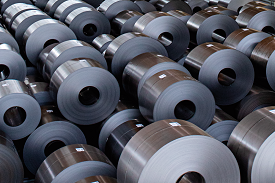 Unalloyed And Alloyed Steel Ingot And Semi-Finished Products For Re-Rolling Purposes
Unalloyed And Alloyed Steel Ingot And Semi-Finished Products For Re-Rolling PurposesIS 14650:2023 |
Unalloyed and alloyed steel ingots and semi-finished products are crucial raw materials utilized in the re-rolling industry for the production of various finished steel products. Unalloyed steel ingots typically consist of carbon steel with minimal alloying elements, offering high strength, durability, and machinability. On the other hand, alloyed steel ingots incorporate additional alloying elements such as chromium, nickel, manganese, or molybdenum to enhance specific properties such as corrosion resistance, hardness, or heat resistance. |
|
| 222 |
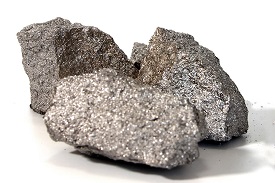 Ferrochromium
FerrochromiumIS 1170:1992 |
||
| 223 |
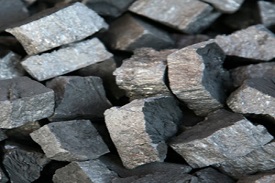 Silicomanganese
SilicomanganeseIS 1470: 2013 |
Silicomanganese (SiMn) is an alloy composed primarily of manganese, silicon, and iron, with smaller amounts of carbon and other elements. It is widely used as a deoxidizer and alloying agent in the production of steel to enhance its strength, hardness, and resistance to corrosion. Silicomanganese is typically produced by smelting a mixture of manganese ore, quartz, and iron ore in electric arc furnaces or submerged arc furnaces. |
|
| 224 |
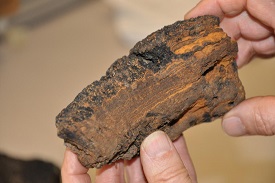 Ferromanganese
FerromanganeseIS 1171:2011 |
Ferromanganese (ferromanganese alloy or FeMn) is an essential alloy composed primarily of manganese and iron, with smaller amounts of carbon and other elements. It is a crucial additive in the production of steel, imparting desirable properties such as increased hardness, tensile strength, and resistance to abrasion and corrosion. |
|
| Electrical Transformers | |||
| 225 |
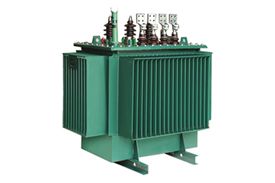 Outdoor Type Door Oil Immersed Distribution Transformers upto and including 2500 kVA, 33 kV-Specification Part 1 Mineral Oil Immersed
Outdoor Type Door Oil Immersed Distribution Transformers upto and including 2500 kVA, 33 kV-Specification Part 1 Mineral Oil ImmersedIS 1180 (Part 1): 2014 |
External door type A particular class of electrical transformer intended for outdoor installation in electrical distribution networks is known as mineral oil immersed distribution transformers. These transformers are essential components of electrical distribution networks because they reduce the high voltage energy produced at power plants to levels that are appropriate for residential, commercial, and industrial use. |
|
| Electrical Motors | |||
| 226 |
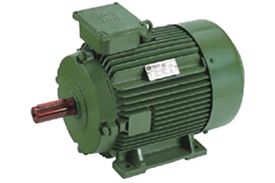 Energy Efficient Induction Motors-Three Phase Squirrel Cage
Energy Efficient Induction Motors-Three Phase Squirrel CageIS 12615 : 2018 |
Three-phase squirrel cage induction motors are an energy-efficient electric motor type that finds widespread application in several industries such as manufacturing, HVAC systems, pumps, fans, and more. They are essential to an organization's ability to comply with regulations, lessen their carbon impact, and make responsible use of energy resources. |
|
| Capacitors | |||
| 227 |
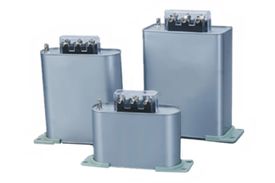 Power Capacitors of Self-Healing Type for AC Power Systems having Rated Voltage upto 1000V
Power Capacitors of Self-Healing Type for AC Power Systems having Rated Voltage upto 1000VIS 13340 (Part 1) : 2012 |
Electrical components called power capacitors are employed in many different ways in electrical circuits. The electric field that these parts produce is a result of their ability to store and discharge electrical energy. Power capacitors are used in many different types of electrical systems, ranging from vast industrial power distribution networks to tiny electronic gadgets. |
|
| 228 |
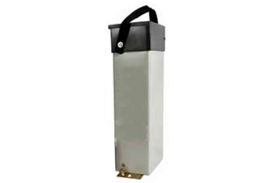 Shunt Power Capacitors of the Non-Self Healing Type for AC System having A Rated Voltage upto and including 1000 V Part 1 General Performance Testing and Rating
Shunt Power Capacitors of the Non-Self Healing Type for AC System having A Rated Voltage upto and including 1000 V Part 1 General Performance Testing and RatingIS 13585 (Part-1): 2012 |
Electrical components known as shunt power capacitors are made to increase the energy efficiency and power factor of AC (alternating current) electrical systems. The load and these capacitors are linked in parallel. They are an essential component of contemporary power distribution networks because of their potential to improve energy efficiency, grid stability, and the longevity of electrical equipment. |
|
| 229 |
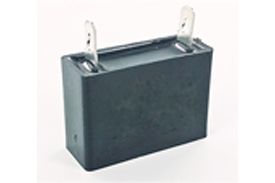 AC Motor Capacitors
AC Motor CapacitorsIS 2993: 1998 |
Electrical parts called AC motor capacitors are utilized in alternating current (AC) electric motors. They are essential for the upkeep, operation, and acceleration of single- and three-phase AC motors. These capacitors are necessary to keep a variety of motor-driven devices, such as industrial machinery, HVAC systems, appliances, and more, reliable and efficient. |
|
| Chemicals, Fertilizers, Polymers & Textiles | |||
| 230 |
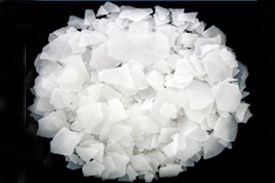 Caustic Soda-Specification
Caustic Soda-SpecificationIS 252:2013 |
Sodium hydroxide (NaOH), commonly referred to as caustic soda, is a highly adaptable and necessary chemical component utilized in a variety of commercial, industrial, and residential applications. This material is categorized as an alkali, which is a kind of base that is alkaline in nature, soluble in water, and capable of neutralizing acids. It is an essential component of daily life because to its use in water treatment, chemical processes, the manufacturing of pulp and paper, and many other industries. |
|
| 231 |
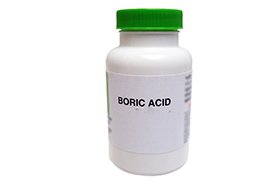 Boric Acid-Specification
Boric Acid-SpecificationIS 10116: 2015 |
Hydrogen borate, or orthoboric acid, is another name for boric acid, which is a chemical molecule having the formula H3BO3. It is a weak, colorless, odorless chemical that occurs naturally and contains the element boron. |
|
| 232 |
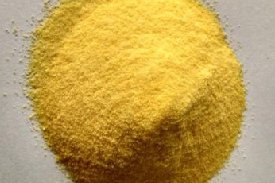 Poly Aluminium Chloride
Poly Aluminium ChlorideIS 15573: 2018 |
A chemical substance called poly aluminum chloride, or PAC, is employed in a number of water treatment processes. It is an acidic mixture of oxygen, hydrogen, chlorine, and aluminum. There are two states in which poly aluminum chloride is available: liquid and solid. Its liquid state, which can be either colorless or light yellow, is usually kept in containers coated with plastic or rubber that can withstand acidic environments. |
|
| 233 |
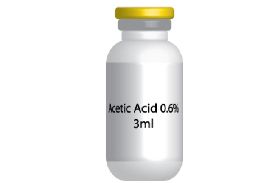 Acetic Acid
Acetic AcidIS 695: 2020 |
Acetic acid, often referred to as ethanoic acid, is an organic chemical that is colorless and has a strong, distinctly sour smell. With the chemical formula CH3COOH, it is a carboxylic acid made up of two primary components: carbon and hydrogen. Since ancient times, vinegar has been utilized in food preparation and preservation in its most prevalent form. Nonetheless, it is an essential component for many industrial processes and product creation when it is in concentrated form. |
|
| 234 |
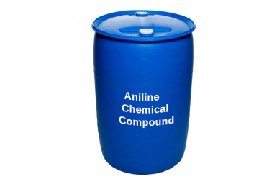 Aniline, Technical
Aniline, TechnicalIS 2833: 2019 |
The chemical formula for aniline is C6H5NH2, making it a significant organic molecule. It has a moderately disagreeable odor and is a colorless to pale yellow liquid at room temperature. Aniline mixes well with a variety of organic solvents and shows just a minor solubility in water. Its contributions to the creation of colorful fabrics, medicines and high-quality rubber goods illustrate its relevance in boosting product quality and performance. |
|
| 235 |
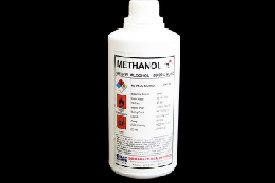 Methanol (Methyl Alcohol)
Methanol (Methyl Alcohol)IS 517: 2020 |
The chemical compound methanol, also referred to as methyl alcohol, has the molecular formula CH3OH. With a methyl group (CH3) connected to a hydroxyl group (OH), it is the most basic kind of alcohol. Methanol has a somewhat pleasant smell and is a colorless, flammable, and volatile liquid. It is created industrially via a catalytic reaction between hydrogen and carbon monoxide, which is known as synthesis gas. Alternatively, biomass fermentation may be used to make it. |
|
| 236 |
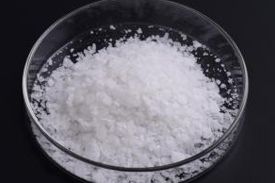 Specification for Phthalic Anhydride, Technical
Specification for Phthalic Anhydride, TechnicalIS 5158: 1987 |
Phthalic anhydride, having the molecular formula C8H4O3, is a significant chemical compound. It is an organic chemical that functions as phthalic acid's anhydride. When phenolic anhydride comes into contact with water, it goes through an exothermic process that might speed up corrosion. |
|
| 237 |
 Pyridine
PyridineIS 8058: 2018 |
Five carbon atoms and one nitrogen atom make up the six-membered ring structure of the heterocyclic organic molecule pyridine. Its chemical formula is C5H5N, and its structure is similar to that of benzene. Pyridine is a clear, colorless liquid with a strong, disagreeable smell. It may be produced synthetically from chemical products like formaldehyde, ammonia, and acetaldehyde, or it can be obtained from raw materials such unrefined coal tar. |
|
| 238 |
 Gamma Picoline
Gamma PicolineIS 16113: 2013 |
The chemical compound gamma picoline, or 3-methylpyridine, has the molecular formula C6H7N. Alpha (2-methylpyridine) and beta (4-methylpyridine) picolines are the other two isomeric forms of methylpyridine. Both commercial synthesis and separation from coal tar can provide gamma-picoline. It shows total soluble in ether, alcohol, and water. |
|
| 239 |
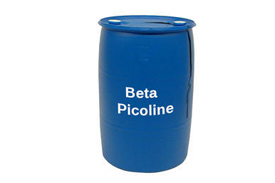 Beta Picoline
Beta PicolineIS 16112: 2013 |
The chemical compound beta picoline, sometimes referred to as 4-methylpyridine, has the molecular formula C6H7N. Alpha picoline (2-methylpyridine) and gamma picoline (3-methylpyridine) are the other two isomers of methylpyridine. This one is one of the three isomeric forms. The fourth carbon atom of beta picoline is joined to a methyl group, giving it a pyridine ring structure. |
|
| 240 |
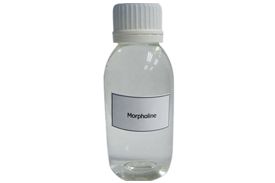 Morpholine
MorpholineIS 12084:2018 |
The chemical compound morpholin has the formula C4H9NO. It is an organic heterocyclic molecule with a six-membered ring structure that includes both ether and amine functional groups. The translucent liquid morpholin has a pleasant scent. It is used as a solvent in the production of several compounds, including as colors, medicines, and rubber chemicals. |
|
| 241 |
 Sodium Sulphide, Technical
Sodium Sulphide, TechnicalIS 297: 2001 |
The chemical compound sodium sulphide has the formula Na2S. It is a crystalline, soluble in water solid that quickly collects moisture from the atmosphere due to its hygroscopic nature. When sodium sulfide interacts with acids, hydrogen sulfide gas is released, giving sodium sulfide its characteristic strong smell, which is similar to rotten eggs. |
|
| 242 |
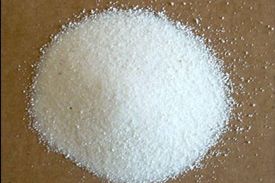 Potassium Carbonate, Anhydrous
Potassium Carbonate, AnhydrousIS 7129: 2021 |
All brands of Potassium Carbonate, Anhydrous are classified under IS 7129 and are required to get ISI Certification before its launch or import into the Indian market. ISI Certification will be provided to the product manufacturers (whether Indian or non-Indian) only and not provided to trader, dealer or distributor of the product.
|
|
| 243 |
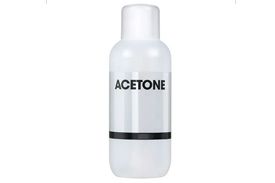 Acetone
AcetoneIS 170: 2020 |
Propanone, another name for acetone, is an organic solvent with the molecular formula C3H6O that is colorless and very flammable. Its rapid evaporation and excellent solvency are only two of its many useful qualities. Acetone is a naturally occurring substance found in plants, forests, volcanic eruptions, and forest fires. |
|
| 244 |
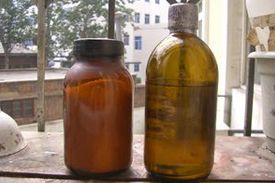 Phosphorous Trichloride, Pure and Analytical Reagent
Phosphorous Trichloride, Pure and Analytical ReagentIS 4581:2021 |
The chemical compound phosphorus trichloride (PCl3) is mostly utilized in industrial and laboratory settings. It is a volatile, translucent liquid with a strong, disagreeable odor that leans somewhat yellow. It undergoes a strong reaction with water to produce phosphorous acid and hydrochloric acid. |
|
| 245 |
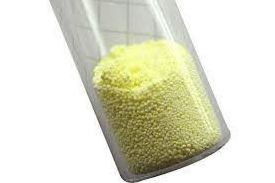 Phosphorous Pentachloride, Technical
Phosphorous Pentachloride, TechnicalIS 11744: 2020 |
A chemical compound having considerable application in a variety of industries and chemical processes is phosphorus pentachloride (PCl5). It has a structure like that of salt in its crystalline form and shows partial dissociation in solution, especially in polar solvents like nitrobenzene. It is created by reacting phosphorus trichloride with dry chlorine. |
|
| 246 |
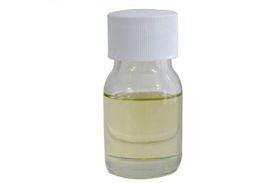 Phosphorous Oxychloride, Technical
Phosphorous Oxychloride, TechnicalIS 11657: 2020 |
One important chemical component in many chemical and industrial uses is phosphorus oxychloride (POCl3). It has a very strong smell and is distinguished by its colorless liquid appearance. Phosphorus oxychloride finds widespread application in the dye, insecticide, and pharmaceutical industries as a catalyst and chlorinating agent. |
|
| 247 |
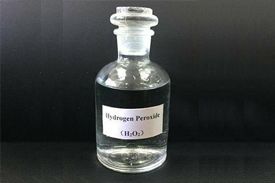 Stabilized Hydrogen Peroxide
Stabilized Hydrogen PeroxideIS 2080: 2021 |
A chemical molecule known as stabilized hydrogen peroxide (H2O2) is made up of atoms of hydrogen and oxygen plus an extra stabilizing ingredient. In order to prolong the shelf life of hydrogen peroxide and keep it from disintegrating or breaking down too soon, this stabilizing ingredient is usually added. |
|
| 248 |
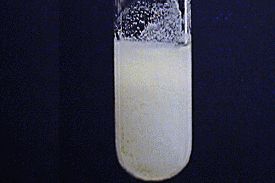 Precipitated Barium Carbonate, Technical
Precipitated Barium Carbonate, TechnicalIS 3205:1984 |
A chemical product known as precipitated barium carbonate is produced by precipitating barium ions in a solution containing a carbonate source. Usually, it is a powder that is white, odorless, and just slightly soluble in water. |
|
| 249 |
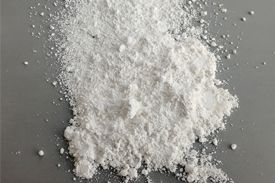 Precipitated Barium for Ceramic and Glass Industry
Precipitated Barium for Ceramic and Glass IndustryIS 12928:1990 |
The term "precipitated barium" describes barium compounds that result from precipitation processes and solidify into particles. These substances are often employed in a wide range of technical and industrial applications, such as chemical reactions, glass manufacture, and ceramics. For ceramic and glass goods to have the appropriate qualities, features, and usefulness, precipitated barium is essential. |
|
| 250 |
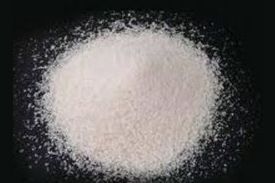 Sodium Formaldehyde Sulphoxylate
Sodium Formaldehyde SulphoxylateIS 4505:2015 |
A chemical product with several uses, sodium formaldehyde sulphoxylate is mostly used as a reducing agent and stabilizer in the paper, textile, chemical synthesis, and photo industries. Sulfur dioxide and zinc dust are combined in an aqueous suspension to produce zinc hydrosulfite solution, which is then used in its manufacturing process. |
|
| 251 |
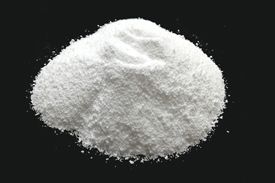 Sodium Tripolyphosphate, Anhydrous, Technical
Sodium Tripolyphosphate, Anhydrous, TechnicalIS 6100:2021 |
The chemical compound sodium tripolyphosphate, or STPP for short, has the formula Na5P3O10. It is an inorganic salt made up of the tripolyphosphate anion (P3O105-) and sodium cations (Na+). The capacity of STPP to maintain pH levels, speed up soil degradation, and sequester minerals in hard water to increase surfactant efficacy are just a few of its many benefits. |
|
| 252 |
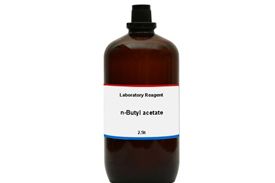 n-Butyl Acrylate
n-Butyl AcrylateIS 14709:1999 |
A chemical substance called n-Butyl Acrylate is widely employed in the manufacture of several polymers and resins. It is a clear, colorless liquid that has a slight odor and a high flammability level. Its use as a main raw material in the production of adhesives, coatings, paints, and textiles demonstrates its adaptability. N-butyl acrylate is also used in the manufacture of leather, paper, and plastics. |
|
| 253 |
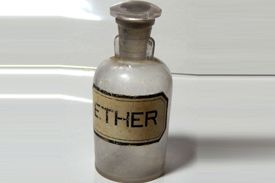 Ether
EtherIS 336:2021 |
A family of organic molecules known as ethers is distinguished by its distinct chemical structure, which consists of two aryl or alkyl groups joined by an oxygen atom. At room temperature, they are usually combustible when subjected to high pressure. An oxygen atom (O) is joined to either two carbon atoms (C) or one carbon and one hydrogen atom (H) to form the chemical structure of ethers. For simple ethers, the usual formula is R-O-R', where R and R' stand for aryl or alkyl groups, respectively. |
|
| 254 |
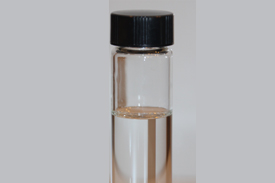 Ethylene Glycol
Ethylene GlycolIS 5295:2023 |
Formulated as C2H6O2, ethylene glycol is a dihydroxy alcohol. It tastes sweet and is a colorless, odorless liquid with a syrupy consistency. When ethylene oxide and water react, ethylene glycol is produced. Its solubility in water, alcohol, and several other organic solvents is well known. |
|
| 255 |
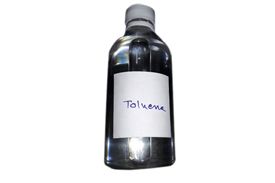 Toluene
TolueneIS 537:2011 |
Toluene, chemically formula C7H8, is a colorless, aromatic liquid hydrocarbon that is also referred to as methylbenzene. It mixes well with a wide range of organic solvents, although its solubility in water is restricted. Toluene floats on the water's top because it is less thick than water. It is often employed in a variety of industrial processes, including as the creation of chemicals, paints, coatings, and fuels, as a solvent and additive. |
|
| 256 |
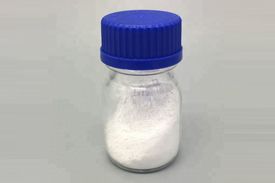 Terephthalic Acid
Terephthalic AcidIS 15030:2022 |
Terephthalic acid, or PTA as it is more often known, is an essential chemical component that is used in the manufacturing of polyethylene terephthalate (PET) and polybutylene terephthalate (PBT). The chemical formula of this white, crystalline powder is C8H6O4. Its importance to the plastics industry stems from its function as an essential raw material for the production of polyester resins, which are used to make a wide range of commonplace items including bottles, clothes, films, and packaging materials. |
|
| 257 |
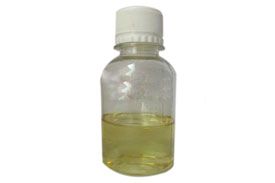 Methyl Acrylate
Methyl AcrylateIS 14707:1999 |
Acrylic acid is the source of methyl acrylate, an ester having the molecular formula C4H6O2. It exists naturally as the volatile ingredient in pineapples and has an unappealing hue and translucent, colorless liquid appearance. It is poorly soluble in water, but it dissolves well in alcohols, esters, and other organic solvents. Although it finds usage in textiles, paper coatings, and different polymer compositions, methyl acrylate is predominantly employed in the manufacturing of coatings, adhesives, and sealants. |
|
| 258 |
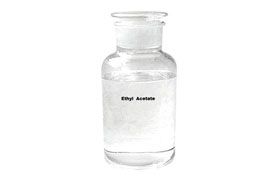 Ethyl Acrylate
Ethyl AcrylateIS 14708:1999 |
All brands of Ethyl Acrylate are classified under IS 14708 and are required to get ISI Certification before its launch or import into the Indian market. ISI Certification will be provided to the product manufacturers (whether Indian or non-Indian) only and not provided to trader, dealer or distributor of the product.
|
|
| 259 |
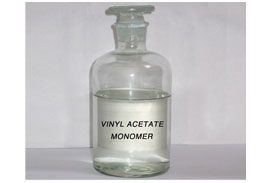 Vinyl Acetate Monomer
Vinyl Acetate MonomerIS 12345:1988 |
Vinyl acetate monomer, or VAM for short, is an organic molecule. It has a colorless liquid and a fruity, pleasant smell. When acetic acid reacts with ethylene or acetylene in the presence of a catalyst, volatile amino acid monomers (VAM) are created. It is extensively employed in the manufacturing of several coatings, resins, and polymers. It also functions as an essential component of many different kinds of water-based polymers. |
|
| 260 |
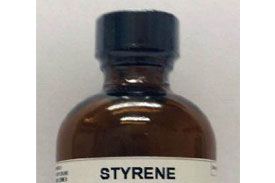 Styrene (Vinyl Benzene)
Styrene (Vinyl Benzene)IS 4105:2023 |
A chemical compound known as styrene vinyl benzene is created by mixing the monomers of styrene and vinyl benzene. It is widely used in the manufacturing of various rubber and plastic products. Styrene vinyl benzene is used in the plastics industry to make a variety of consumer products, including toys, home appliances, and automobile parts. |
|
| 261 |
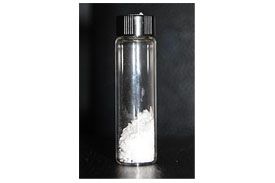 Maleic Anhydride, Technical
Maleic Anhydride, TechnicalIS 5149:2020 |
Maleic anhydride has the chemical formula C4H2O3. It is an organic molecule. At room temperature, it takes the form of a white, crystalline solid and is an acid anhydride of maleic acid. The liquid form of maleic anhydride is clear and has an unpleasant smell. It shows good water solubility. In the chemical industry, maleic anhydride is frequently employed as a flexible intermediary for the production of many chemicals and polymers. |
|
| 262 |
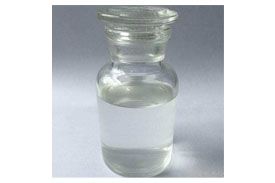 Acrylonitrile
AcrylonitrileIS 12540:2023 |
Acrylonitrile is a chemical molecule having the formula CH2CHCN. It is often referred to as vinyl cyanide or propenenitrile. It is a highly flammable, clear, colorless liquid with a strong, fruity smell. |
|
| 263 |
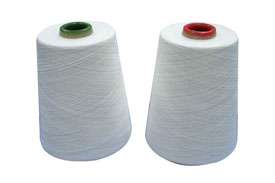 100 Percent Polyester Spun Grey and White Yarn (PSY)
100 Percent Polyester Spun Grey and White Yarn (PSY)IS 17265:2023 |
Yarn constructed completely of polyester fibers is referred to as 100 percent polyester spun grey and white yarn, or PSY. This yarn comes in two colors: gray in its natural, undyed condition or white after processing and dying. The term "spun" denotes the process of creating a single strand of yarn by twisting or spinning separate polyester fibers together. |
|
| 264 |
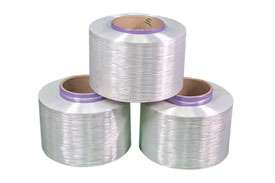 Polyester Continuous Filament Fully Drawn Yarn (FDY)
Polyester Continuous Filament Fully Drawn Yarn (FDY)IS 17261:2022 |
All brands of Polyester Continuous Filament Fully Drawn Yarn (FDY) are classified under IS 17261 and are required to get ISI Certification before its launch or import into the Indian market. ISI Certification will be provided to the product manufacturers (whether Indian or non-Indian) only and not provided to trader, dealer or distributor of the product.
|
|
| 265 |
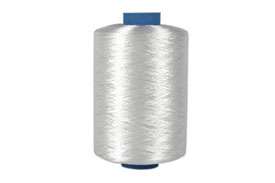 Polyester Industrial Yarn (IDY)
Polyester Industrial Yarn (IDY)IS 17264:2022 |
Polyester is a synthetic man-made polymer that is often referred to as polyethylene terephthalate (PET). Terephthalic acid and ethylene glycol are combined to generate it. |
|
| 266 |
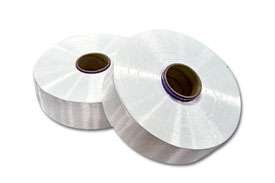 Polyester Partially Oriented Yarn (POY)
Polyester Partially Oriented Yarn (POY)IS 17262:2022 |
Polyester yarn that comes under the larger category of polyester industrial yarn is known as partially oriented yarn, or POY. It is a synthetic fiber that is created by polymerizing a chemical substance called polyethylene terephthalate (PET). |
|
| 267 |
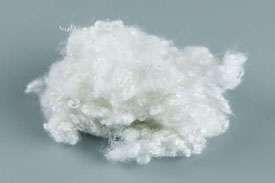 Polyester Staple Fibres (PSF)
Polyester Staple Fibres (PSF)IS 17263:2022 |
Synthetic fiber known as polyester staple fiber (PSF) is created by polymerizing polyester constituents such monoethylene glycol (MEG) and purified terephthalic acid (PTA) at high pressure and temperature. The polyester material is melted to create these fibers, which are then extruded through a spinneret to create long, continuous strands. To make staple fibers, these strands are chopped into shorter lengths, usually between a few millimeters and a few centimeters. |
|
| 268 |
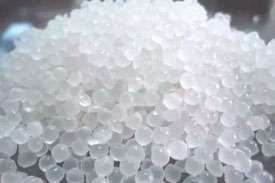 Polyethylene Material for moulding and extrusion for LDPE, LLDPE and HDPE
Polyethylene Material for moulding and extrusion for LDPE, LLDPE and HDPEIS 7328:2020 |
Because of its advantageous qualities, polyethylene is a synthetic polymer that may be utilized to a wide range of applications. It is valued for its flexibility, resilience, and light weight, which allow it to be readily molded into a variety of shapes. There are several varieties of polyethylene materials, such as linear low-density polyethylene (LLDPE), high-density polyethylene (HDPE), and low-density polyethylene (LDPE). These polyethylene varieties are frequently employed in operations including blow molding, extrusion, and injection molding, as well as in calendaring and blown film extrusion for the creation of films. |
|
| 269 |
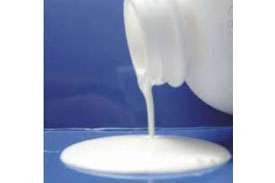 Styrene-Butadiene Rubber Latex
Styrene-Butadiene Rubber LatexIS 11356:2020 |
The synthetic rubber polymer known as styrene-butadiene rubber latex, or SBR latex, is made up of two major monomers: butadiene and styrene. This combination produces an emulsion form of SBR. Its amazing qualities, including as exceptional adhesion, flexibility, durability, and water resistance, have led to its establishment as a multipurpose material used for waterproofing. SBR latex is still a vital material in many sectors because of its affordability and adaptability. It is extensively utilized in building materials, textiles, paper coatings, adhesives, and dipped items. |
|
| 270 |
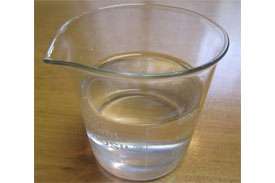 Linear Alkyl Benzene
Linear Alkyl BenzeneIS 12795:2020 |
An organic chemical compound known as linear alkyl benzoene (LAB) is made up of a benzene ring and a linear alkyl chain. It is an essential component of many detergents, particularly those that are liquid and allow for efficient cleaning and washing. It is also applied as a pesticide in agriculture and as an emulsifying agent in polymerization operations. In addition to being employed in detergents, LAB is also utilized in the production of phenols and sulfonates, among other chemical intermediates. These intermediaries are essential to the manufacturing of rubber, plastics, and synthetic resins. |
|
| 271 |
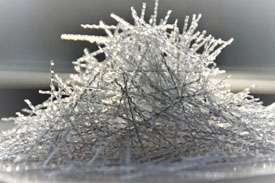 Synthetic Micro-Fibres for use in Cement Based Matrix
Synthetic Micro-Fibres for use in Cement Based MatrixIS 16481:2020 |
Synthetic microfibers are very thin synthetic material strands, usually with a denier (a linear density unit of measurement) of less than one. The diameter of these fibers is designed to be substantially smaller than that of traditional synthetic fibers. Because of their special qualities, they have a wide range of uses. |
|
| 272 |
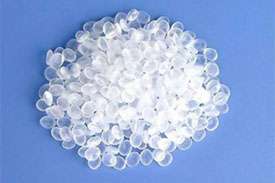 Ethylene Vinyl Acetate (EVA) Copolymers
Ethylene Vinyl Acetate (EVA) CopolymersIS 13601:1993 |
The family of thermoplastic elastomers comprised of ethylene-vinyl acetate (EVA) copolymers, which are created by combining ethylene and vinyl acetate monomers. They are used in a variety of sectors, including electronics, footwear, healthcare, and packaging because of their flexibility, adhesion, and heat processing qualities. They are essential to the compounding of wire and electrical cables and act as the basic polymer in many adhesive resin formulations. |
|
| 273 |
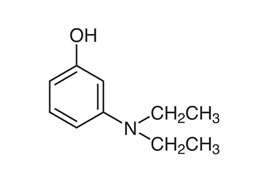 3(N, N-DiEthyl) Aminophenol
3(N, N-DiEthyl) AminophenolIS 7686:2020 |
3(N, N-DiEthyl) The chemical molecule known as aminophenol has the formula C10H15NO. It is an organic substance that is a member of the aminophenol class. The chemical is made up of three ethyl groups (C2H5) joined to amino groups (NH2) by a phenolic ring (phenol). |
|
| 274 |
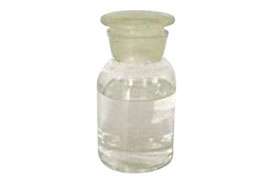 Methylene Chloride (Dichloromethane)
Methylene Chloride (Dichloromethane)IS 4566:2020 |
Dichloromethane, another name for methylene chloride, is a chemical compound having the molecular formula CH2Cl2. It has a somewhat pleasant smell and is a volatile, colorless liquid. Many different industries, such as the automotive, building, pharmaceutical, chemical processing, paints and coatings, and chemical processing sectors, use methylene chloride as a flexible solvent. Its low boiling point, high vapor pressure, low toxicity, and remarkable solvent qualities for a wide range of organic materials make it the perfect option for a variety of uses, such as paint removal, the creation of polyurethane foam, aerosol formulations, and metal cleaning. |
|
| 275 |
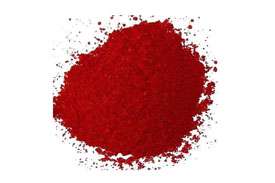 Red Phosphorus
Red PhosphorusIS 2012:2006 |
One of the phosphorus allotropes that comes from the P4 molecule is red phosphorus. It is a very reactive form of phosphorus that is not found on Earth naturally as a free element. In comparison to white phosphorus, red phosphorus is less reactive, has no odor, is not poisonous, and is red in color. Interestingly, it doesn't show any phosphorescence. |
|
| 276 |
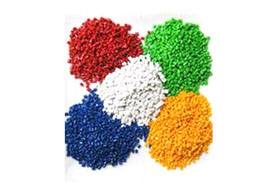 Acrylonitrile Butadiene Styrene (ABS)
Acrylonitrile Butadiene Styrene (ABS)IS 17077:Part 1:2022 |
The thermoplastic polymer acrylonitrile butadiene styrene, or ABS, is a multipurpose material valued for its superior property balance. Three primary monomers make up this copolymer: styrene, butadiene, and acrylonitrile. |
|
| 277 |
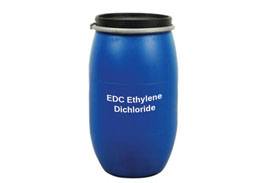 Ethylene Dichloride
Ethylene DichlorideIS 869:2020 |
The chemical compound ethylene dichloride (EDC) has the formula C2H4Cl2. It is an oily, colorless liquid with a pleasant scent. The process of ethylene and chlorine reacts to make ethylene. It is more dense than water and only partially soluble in aqueous solutions. |
|
| 278 |
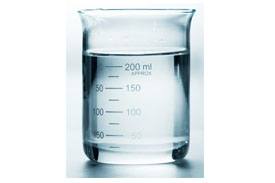 p-Xylene
p-XyleneIS 17370:2023 |
The chemical compound p-Xylene, sometimes referred to as para-Xylene, has the molecular formula C8H10. It is one of the three aromatic hydrocarbon isomers of xylene. Crude oil is usually the source of p-Xylene. Its significance goes beyond environmental and economic factors, as it is utilized in the production of several components that are necessary for daily living. |
|
| 279 |
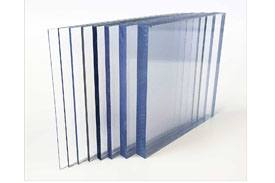 Polycarbonate Moulding And Extrusion Materials Specification
Polycarbonate Moulding And Extrusion Materials SpecificationIS 14434:2023 |
Polycarbonate moulding and extrusion materials are a class of thermoplastic polymers renowned for their exceptional strength, transparency, and impact resistance. Polycarbonate is characterized by its excellent dimensional stability, high heat resistance, and versatility, making it an ideal choice for various applications. |
|
| 280 |
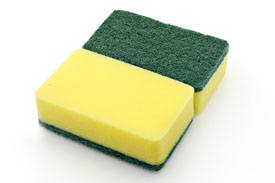 Plastics-Thermoplastic Polyurethanes for Moulding and Extrusion-Part 1 Designation System
Plastics-Thermoplastic Polyurethanes for Moulding and Extrusion-Part 1 Designation SystemIS 17397 : Part 1 : 2022 |
Thermoplastic polyurethanes (TPU) are a class of versatile plastics renowned for their exceptional properties, including high elasticity, abrasion resistance, chemical resistance, and durability. The designation system and specifications for TPU encompass a range of criteria that define their physical and mechanical characteristics, aiding in their selection and application in moulding and extrusion processes. |
|
| 281 |
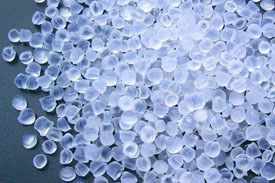 Vinyl Chloride Monomer
Vinyl Chloride MonomerIS 17442:2020 |
All brands of Vinyl Chloride Monomer are classified under IS 17442 and are required to get ISI Certification before its launch or import into the Indian market. ISI Certification will be provided to the product manufacturers (whether Indian or non-Indian) only and not provided to trader, dealer or distributor of the product.
|
|
| 282 |
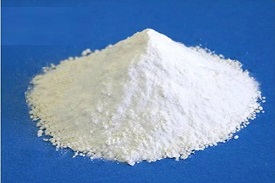 1,3 Phenylenediamine
1,3 PhenylenediamineIS 17450:2020 |
1,3-Phenylenediamine, abbreviated as 1,3-PDA, is a chemical compound belonging to the class of aromatic amines. It is commonly used as a raw material in the synthesis of various polymeric materials, such as polyurethanes, epoxy resins, and polyamides. This compound possesses two amino groups attached to a benzene ring, making it a versatile building block in organic synthesis. |
|
| 283 |
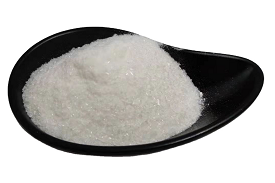 Lauric Acid
Lauric AcidIS 10931:1984 |
Lauric acid, also known as dodecanoic acid, is a saturated fatty acid with a 12-carbon atom chain and the chemical formula CH3(CH2)10COOH. It is a white, powdery solid with a faint odour of bay oil and is naturally found in various vegetable oils, such as coconut oil and palm kernel oil, as well as in breast milk. Lauric acid is widely used in the production of personal care products, cosmetics, and soaps due to its ability to produce a rich, creamy lather and its mild cleansing properties. |
|
| 284 |
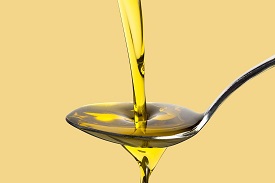 Acid Oil
Acid OilIS 12029:1986 |
Acid oil, also known as fatty acid distillate or soapstock, is a byproduct generated during the refining of vegetable oils. It is formed as a result of the neutralization process where caustic soda is used to remove free fatty acids and impurities from crude vegetable oils. Acid oil contains a mixture of free fatty acids, triglycerides, phospholipids, sterols, and other impurities that are insoluble in water. |
|
| 285 |
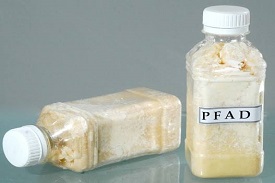 Palm Fatty Acids
Palm Fatty AcidsIS 12067:1987 |
Palm fatty acids are a mixture of fatty acids derived from palm oil, which is extracted from the fruit of the oil palm tree. Palm fatty acids contain a diverse array of saturated and unsaturated fatty acids, including palmitic acid, oleic acid, stearic acid, and linoleic acid, among others. These fatty acids are separated from crude palm oil through a process called fractionation, which involves chilling the oil to separate the solid fraction (stearin) from the liquid fraction (olein). |
|
| 286 |
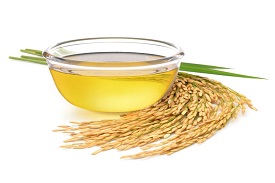 Rice Bran Fatty Acids
Rice Bran Fatty AcidsIS 12068:1987 |
Rice bran fatty acids are a group of fatty acids obtained from the oil extracted from the bran layer of rice grains. The bran layer, which constitutes about 8-10% of the rice grain, contains a relatively high concentration of lipids, making it a valuable source of fatty acids. The extraction process involves solvent extraction or mechanical pressing to obtain rice bran oil, which is then further refined to isolate the fatty acids. |
|
| 287 |
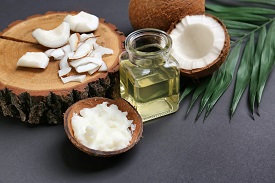 Coconut Fatty Acids
Coconut Fatty AcidsIS 12069:1987 |
Coconut fatty acids are a group of fatty acids derived from coconut oil, a versatile and widely used vegetable oil extracted from the kernel or meat of mature coconuts. These fatty acids are obtained through processes such as cold pressing or solvent extraction of dried coconut kernels. Coconut fatty acids find extensive applications in various industries, including food, cosmetics, pharmaceuticals, and household products. |
|
| 288 |
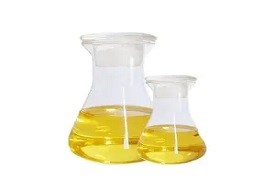 Rubberseed Fatty Acids
Rubberseed Fatty AcidsIS 12124:1987 |
Rubberseed fatty acids are a group of fatty acids derived from the oil extracted from the seeds of the rubber tree (Hevea brasiliensis). The fatty acid composition of rubberseed oil typically includes a high percentage of unsaturated fatty acids, such as oleic acid and linoleic acid, along with smaller amounts of saturated fatty acids, like palmitic acid and stearic acid. |
|
| 289 |
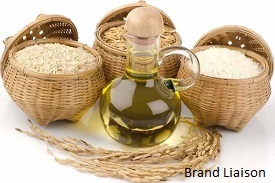 Hydrogenated Rice Bran Fatty Acids
Hydrogenated Rice Bran Fatty AcidsIS 12361:1988 |
Hydrogenated rice bran fatty acids are a derivative of rice bran oil, which is extracted from the outer layer of rice grains. These fatty acids find applications in the food industry as ingredients in margarine, shortenings, and confectionery products due to their solid consistency at room temperature and their ability to enhance the texture, mouthfeel, and shelf life of food products. |
|
| Kitchen Appliances | |||
| 290 |
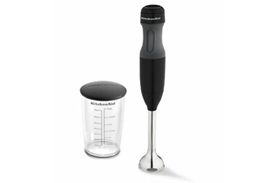 Hand held Blender
Hand held BlenderIS 302(Part2/Section 14):2009 |
A handheld blender is a multipurpose and essential kitchen tool that makes many different food preparation jobs easier. These are useful tools for more effectively and easily blending, combining, and puréeing food components. Their influence may be seen in a variety of culinary applications, from preparing nutritious meals to effortlessly and precisely making handmade foods like smoothies and soups. |
|
| 291 |
 Domestic Electric Food Mixer (Liquidizers and Grinders) and Centrifugal Juicer
Domestic Electric Food Mixer (Liquidizers and Grinders) and Centrifugal JuicerIS 4250:1980 |
A household electric food mixer is a multipurpose kitchen tool made to make a variety of food preparation chores easier and more efficient. It is a vital tool for both home and professional cooks as it combines the features of a conventional food mixer with the adaptability of blending and grinding. |
|
| Domestic Water Heaters for use with LPG | |||
| 292 |
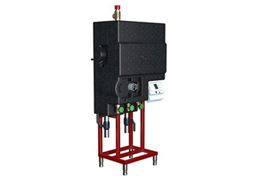 Instantaneous Domestic Water Heater for use with Liquefied Petroleum Gas
Instantaneous Domestic Water Heater for use with Liquefied Petroleum GasIS 15558:2005 |
All models and brands of Instantaneous Domestic Water Heater for use with Liquefied Petroleum Gas are classified under IS 15558 and are required to get ISI Certification before its launch or import into the Indian market. ISI Certification will be provided to the product manufacturers (whether Indian or non-Indian) only and not provided to trader, dealer or distributor of the product. |
|
| Air Conditioner and its related Parts, Hermetic Compressor and Temperature Sensing Controls | |||
| 293 |
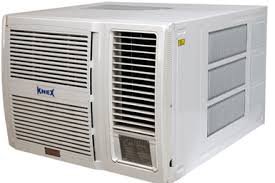 Room Air Conditioners-Specification Part 1 Unitary Air Conditioners
Room Air Conditioners-Specification Part 1 Unitary Air ConditionersIS 1391 (Part-1):2023 |
Self-contained heating and cooling systems called unitary air conditioners are made to regulate the humidity and temperature in a single room, a small structure, or a specified region. Since the compressor, condenser, evaporator, and fan are all contained within a single, self-contained unit, these systems are frequently referred to as "packaged" units. Window and split-system air conditioners are the two primary categories into which unitary air conditioners fall. |
|
| 294 |
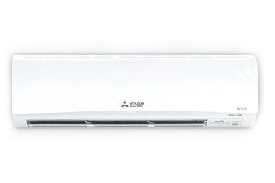 Room Air Conditioners-Specification Part 2 Split Air Conditioners
Room Air Conditioners-Specification Part 2 Split Air ConditionersIS 1391 (Part-2):2023 |
All models and brands of Room Air Conditioners-Specification Part 2 Split Air Conditioners are classified under IS 1391 (Part-2) and are required to get ISI Certification before its launch or import into the Indian market. ISI Certification will be provided to the product manufacturers (whether Indian or non-Indian) only and not provided to trader, dealer or distributor of the product. |
|
| 295 |
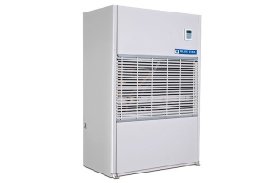 Ducted and Package Air Conditioners
Ducted and Package Air ConditionersIS 8148:2018 |
A centralized heating, ventilation, and air conditioning (HVAC) system that regulates the temperature in homes, businesses, and industries is known as a ducted air conditioner. The main parts of these systems cooperate to provide conditioned air distribution across a building. The ability to conceal equipment for aesthetic reasons, better interior air quality, and centralized control are just a few benefits of ducted air conditioners. |
|
| 296 |
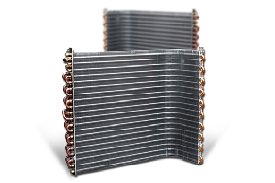 Finned type Heat Exchanger for Room Air Conditioner
Finned type Heat Exchanger for Room Air ConditionerIS 11329:2018 |
All models and brands of Finned type Heat Exchanger for Room Air Conditioner are classified under IS 11329 and are required to get ISI Certification before its launch or import into the Indian market. ISI Certification will be provided to the product manufacturers (whether Indian or non-Indian) only and not provided to trader, dealer or distributor of the product. |
|
| 297 |
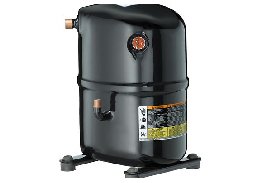 Hermetic Compressor-Specification
Hermetic Compressor-SpecificationIS 10617:2018 |
A hermetic compressor is a kind of compressor that is frequently utilized in different kinds of air conditioning and refrigeration systems. It offers dependable and effective performance while preserving the integrity of the sealed system. The comfort and preservation of temperature-sensitive items in a variety of applications is ensured by their function in controlling the compression and circulation of refrigerant gases. |
|
| Plugs and Socket-Outlets and Alternating Current Direct Connected Static Prepayment Meters for Active Energy | |||
| 298 |
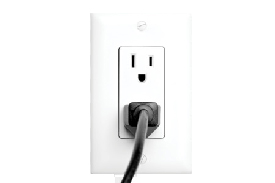 Plugs and socket-outlets of Rated Voltage up to and including 250 Volts and Rated current up to and including 16 amperes
Plugs and socket-outlets of Rated Voltage up to and including 250 Volts and Rated current up to and including 16 amperesIS 1293:2019 |
Electrical appliances, gadgets, or equipment are connected to a power supply via plugs and socket outlets. Because they offer a safe and consistent way to connect and disconnect electrical loads, they are essential to electrical systems. |
|
| 299 |
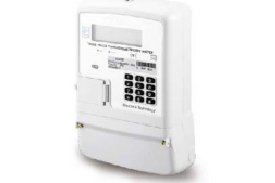 Alternating Current Direct Connected Static Prepayment Meters for Active Energy (Class 1 and 2)
Alternating Current Direct Connected Static Prepayment Meters for Active Energy (Class 1 and 2)IS 15884:2010 |
Advanced electrical measuring tools called alternating current direct connected static prepayment meters are used to track and manage the amount of power consumed in residences, companies, and other establishments. These meters are essential to contemporary energy management and are a component of the larger area of electrical metering. Both utility suppliers and users gain from their openness, control, and flexibility. |
|
| Domestic Gas Stoves for use with Liquefied Petroleum Gases | |||
| 300 |
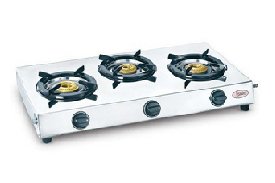 Domestic Gas Stoves for use with Liquefied Petroleum Gases
Domestic Gas Stoves for use with Liquefied Petroleum GasesIS 4246:2002 |
Gas burners that run on Liquefied Petroleum Gas (LPG) are a common and extensively utilized kind of kitchen equipment for cooking. These stoves are a need in many homes as they are made to burn LPG as fuel. This creative cooking technique is easily adjustable and may be turned off when not in use. |
|
| Transparent Float Glass | |||
| 301 |
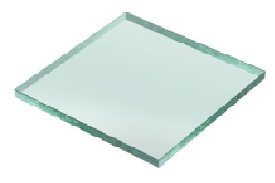 Transparent Float Glass
Transparent Float GlassIS 14900: 2018 |
One kind of sheet glass made with the "float glass" production technique is transparent float glass. Melting premium raw ingredients, including silica sand, soda ash, and limestone, is the first step in this process. The molten glass is then deposited on top of a bed of molten metal, usually tin. Glass develops a homogeneous, parallel-surfaced sheet as it cools and hardens. |
|
| Domestic Pressure Cooker | |||
| 302 |
 Domestic Pressure Cooker
Domestic Pressure CookerIS 2347:2017 |
A domestic pressure cooker is a culinary tool designed to utilize steam pressure to swiftly and effectively prepare meals. It is made up of a rubber gasket, a pressure release valve, and a robust, sealed vessel with a locking lid. The standard volume of a pressure cooker is between 1 and 22 liters. |
|
| Cables | |||
| 303 |
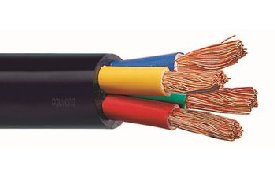 Specification for PVC Insulated (Heavy Duty) Electric Cables Part 1 For Working Voltages up to and Including 1100V
Specification for PVC Insulated (Heavy Duty) Electric Cables Part 1 For Working Voltages up to and Including 1100VIS 1554:Part 1:1988 (Reaffirmed Year : 2020 ) |
PVC insulated electric cables are a kind of electrical wire or conductors in which the thermoplastic polyvinyl chloride (PVC) is used to insulate the conductive cores. These cables are intended for heavy-duty uses where they must survive harsh climatic circumstances and provide consistent electrical power. It is in favor of energy efficiency, the safety of people and property, and the growth of industry and infrastructure. |
|
| 304 |
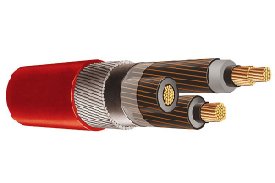 Specification for PVC Insulated (Heavy Duty) Electric Cables Part 2 For Working Voltages from 3.3 kV up to and Including 11kV
Specification for PVC Insulated (Heavy Duty) Electric Cables Part 2 For Working Voltages from 3.3 kV up to and Including 11kVIS 1554(Part 2):1988 |
Heavy-duty PVC-insulated electric cables are an essential part of power distribution and electrical systems. These cables are made for tough applications where they have to survive severe weather, support large electrical loads, and provide dependable and safe power transfer. In the electrical business, it is essential for promoting sustainability, safety, and economic growth. |
|
| 305 |
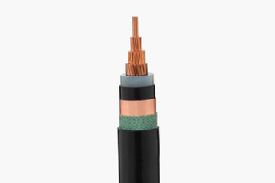 Crosslinked polyethylene insulated Thermoplastics sheathed cables-Specification Part 2 for working voltages from 3.3 kV up to and including 33 kV
Crosslinked polyethylene insulated Thermoplastics sheathed cables-Specification Part 2 for working voltages from 3.3 kV up to and including 33 kVIS 7098 (Part 2):2011 |
Modern electrical and communication systems require crosslinked polyethylene insulated thermoplastic encased cables, also known as XLPE insulated thermoplastic sheathed cables. Their capacity to deliver dependable and safe electrical transmission in the face of several operational and environmental obstacles is the foundation of their significance. |
|
| 306 |
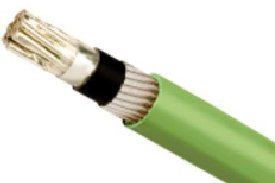 Cross-linked polyethylene insulated Thermoplastics sheathed cables-Part 3 For Working Voltages from 66kV up to and including 220 kV
Cross-linked polyethylene insulated Thermoplastics sheathed cables-Part 3 For Working Voltages from 66kV up to and including 220 kVIS 7098 (Part 3):1993 |
Electrical cables known as XLPE-insulated thermoplastic cables, or cross-linked polyethylene insulated thermoplastic encased cables, are a particular kind of cable intended for use in power distribution and transmission systems. These cables' exceptional performance and durability have made them the go-to option for many electrical systems. |
|
| 307 |
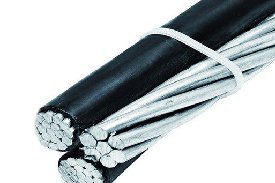 Aerial Bunched Cables-For Working Voltages Up to and Including 1100 Volts-Specification
Aerial Bunched Cables-For Working Voltages Up to and Including 1100 Volts-SpecificationIS 14255:1995 |
Power distribution uses aerial bunched cables (ABC), a cutting-edge and contemporary kind of electrical cable. In contrast to conventional overhead power lines, which are made up of exposed wires fixed on poles, ABC systems are made to be more dependable, safer, and require less maintenance. In urban, suburban, and rural environments, these cables are being utilized more frequently to deliver energy in a more dependable and safe manner. |
|
| 308 |
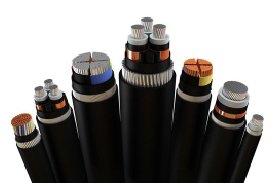 Specification for Elastomer Insulated Cables Part 2 For Working Voltages form 3.3kV Up to and Including 33kV
Specification for Elastomer Insulated Cables Part 2 For Working Voltages form 3.3kV Up to and Including 33kVIS 9968 (Part 2):2002 |
One kind of electrical cable with elastomeric insulation is called an elastomer insulated cable. Elastomers are materials that resemble rubber and are renowned for their resilience to environmental influences, elasticity, and durability. |
|
| 309 |
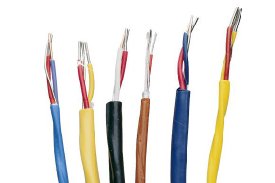 Specification for Thermocouple Compensating Cables
Specification for Thermocouple Compensating CablesIS 8784:1987 |
Essential parts of temperature measurement and control systems are thermocouple compensating cables. In a variety of industrial and scientific applications, these specialty cables are essential for preserving temperature measurements' precision, safety, and dependability. |
|
| 310 |
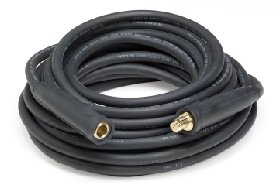 Welding Cables-Specification
Welding Cables-SpecificationIS 9857:1990 |
Specialized electrical cables called welding cables are made to withstand the high currents and voltages required for welding, guaranteeing performance, efficiency, and safety in a range of welding applications. When it comes to transferring electrical power from the welding machine to the welding tool or electrode holder, these cables are essential. |
|
| 311 |
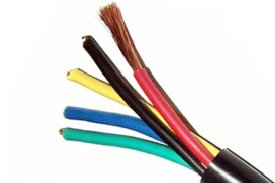 Elastomer Insulated Flexible Cables for Use in Mines-Specification
Elastomer Insulated Flexible Cables for Use in Mines-SpecificationIS 14494:2019 |
Flexible electrical wires with elastomer insulation are known as elastomer-insulated cables. Polymers with elastic qualities, or the ability to stretch and revert to their original shape, are known as elastomers. These cables are made for a variety of uses where resilience to environmental influences and flexibility are crucial. |
|
| 312 |
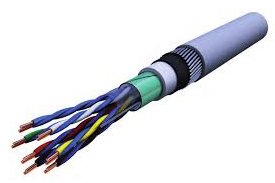 Specification for Flexible Cables for Miners Cap-Lamps
Specification for Flexible Cables for Miners Cap-LampsIS 2593:1984 |
All models and brands of Specification for Flexible Cables for Miners Cap-Lamps are classified under IS 2593 and are required to get ISI Certification before its launch or import into the Indian market. ISI Certification will be provided to the product manufacturers (whether Indian or non-Indian) only and not provided to trader, dealer or distributor of the product. |
|
| 313 |
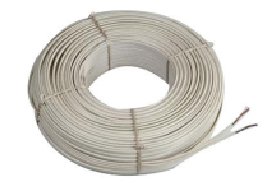 Specification for Shot Firing Cables (for use other than in sharts)
Specification for Shot Firing Cables (for use other than in sharts)IS 5950:1984 |
Shot firing cables are specialized electrical cables used in the mining, quarrying, building, and demolition sectors. They are often referred to as detonating cords or blasting cables. Beyond merely mining and quarry blasting, they have many other uses. The purpose of these cables is to securely and reliably deliver electrical energy for the controlled initiation of explosives. |
|
| 314 |
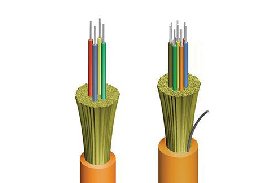 Halogen Free Flame Retardant (HFFR) Cables for Working Voltages Up to and Including 1100 V-Specification
Halogen Free Flame Retardant (HFFR) Cables for Working Voltages Up to and Including 1100 V-SpecificationIS 17048:2018 |
Electrical cables classified as halogen free flame retardant (HFFR) are renowned for their environmental friendliness and fire safety qualities. These cables are utilized in many different applications where electrical performance, minimal smoke emissions, and fire safety are essential, such as building wiring, industrial installations, and telecommunications. |
|
| 315 |
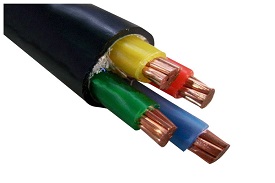 Crosslinked Polyethylene Insulated PVC Sheathed Cables Part 1 for working voltages up to and including 1100 V
Crosslinked Polyethylene Insulated PVC Sheathed Cables Part 1 for working voltages up to and including 1100 VIS 7098 (Part 1):1988 |
Crosslinked polyethylene (XLPE) insulated PVC sheathed cables are electrical cables designed for use in low to medium-voltage applications, with a working voltage of up to and including 1100 volts. These cables consist of a conductor, typically made of copper or aluminium, surrounded by XLPE insulation, which offers excellent electrical properties, high thermal stability, and resistance to moisture and chemicals. |
|
| Rubber Hose for Liquefied Petroleum Gas (LPG) | |||
| 316 |
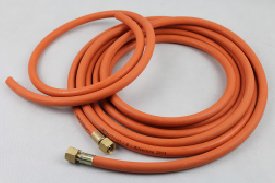 Rubber Hose for Liquefied Petroleum Gas (LPG)-Specification Part 1 Industrial Application
Rubber Hose for Liquefied Petroleum Gas (LPG)-Specification Part 1 Industrial ApplicationIS 9573(Part 1):2017 |
Rubber hoses are elastomeric or rubber-based tubes or pipes that are adaptable and flexible. They are available in a variety of sizes, forms, and kinds to meet a range of fluid and gas transfer requirements. They are employed in several applications. |
|
| 317 |
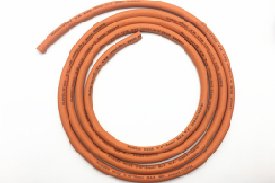 Rubber Hose for Liquefied Petroleum Gas (LPG)-Specification Part 2 Domestic and Commercial Application
Rubber Hose for Liquefied Petroleum Gas (LPG)-Specification Part 2 Domestic and Commercial ApplicationIS 9573(Part 2):2017 |
All models and brands of Rubber Hose for Liquefied Petroleum Gas (LPG)- Specification Part 2 Domestic and Commercial Application are classified under IS 9573(Part 2):2017 and are required to get ISI Certification before its launch or import into the Indian market. ISI Certification will be provided to the product manufacturers (whether Indian or non-Indian) only and not provided to trader, dealer or distributor of the product. |
|
| Aluminium Foil | |||
| 318 |
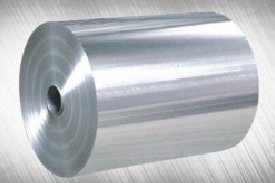 Aluminium and Aluminium Alloy Bare Foil for Food Packaging
Aluminium and Aluminium Alloy Bare Foil for Food PackagingIS 15392:2003 |
Aluminum and its alloys Thin sheets or rolls of aluminum or aluminum alloys with a metallic surface and no extra coating or treatment are referred to as "bare foil." Because of their special qualities, these foils are widely utilized and renowned for their adaptability. They are used in a variety of sectors due to their characteristics, which include conductivity, lightweight, resistance to corrosion, and barrier qualities. |
|
| Non-Electric Toys | |||
| 319 |
 Non-Electric Toys
Non-Electric ToysIS 9873 (Part-1):2019, IS 9873 (Part-2):2017, IS 9873 (Part-3):2020, IS 9873 (Part-4):2017, IS 9873 (Part-7):2017, IS 9873 (Part-9):2017 |
Toys that don't require electricity or batteries to operate are known as non-electric toys. These toys are frequently distinguished by their manual interactivity and simplicity. Non-electric toys are essential for a child's development because they foster social and emotional development, inspire imaginative play, and advance physical and cognitive abilities. |
|
| Electric Toys | |||
| 320 |
 Electric Toys
Electric ToysIS 15644:2006 |
All models and brands of Electric Toys under IS 15644 are required to get ISI Certification before its launch or import into the Indian market. ISI Certification will be provided to the product manufacturers (whether Indian or non-Indian) only and not provided to trader, dealer or distributor of the product.
|
|
| Flat Transparent Sheet Glass | |||
| 321 |
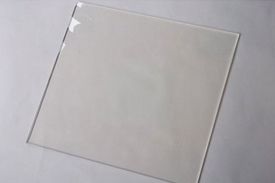 Flat Transparent Sheet Glass
Flat Transparent Sheet GlassIS 2835:1987 |
Glass that is produced as thin, flat, transparent, or translucent sheets is referred to as flat transparent sheet glass. Because of its unique blend of transparency, smoothness, and adaptability, it is a crucial component of contemporary architecture, design, and a wide range of industrial uses. Additionally, flat transparent sheet glass provides an attractive and practical combination that improves the quality of life, building performance, and other uses. |
|
| Safety Glass | |||
| 322 |
 Safety Glass-Specification Part-1 Architectural, Building and General uses
Safety Glass-Specification Part-1 Architectural, Building and General usesIS 2553 (Part-1):2018 |
All models and brands of Safety Glass-Specification Part-1 Architectural, Building and General uses are classified under IS 2553 (Part-1) and are required to get ISI Certification before its launch or import into the Indian market. ISI Certification will be provided to the product manufacturers (whether Indian or non-Indian) only and not provided to trader, dealer or distributor of the product.
|
|
| 323 |
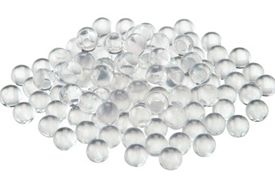 Safety Glass-Specification Part-2 For Road Transport
Safety Glass-Specification Part-2 For Road TransportIS 2553 (Part-2):2019 |
A specific kind of glass called safety glass is intended to lessen the possibility of damage in the event that it breaks. It is a crucial component in improving the security and welfare of residents and guests in a variety of settings. When safety glass breaks, it is designed to break into tiny, mostly innocuous bits rather than jagged, dangerous ones. By doing this, the chance of cuts and other injuries from normal glass is reduced. |
|
| Woven Sacks | |||
| 324 |
 HDPE or PP Woven Sacks for packaging 50 kg Food Grains
HDPE or PP Woven Sacks for packaging 50 kg Food GrainsIS 14887:2014 |
Woven sacks made of HDPE (high-density polyethylene) and PP (polypropylene) are frequently used packaging materials in a variety of sectors for the transportation and storage of bulk commodities. These bags are renowned for their strength, resilience, and adaptability and are usually made of braided plastic fibers. They are essential for maintaining food quality, avoiding food wastage, and making sure food grains are handled effectively. |
|
| 325 |
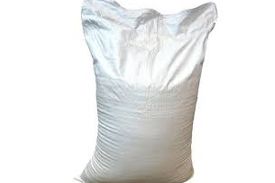 HDPE or PP Woven Sacks for packaging 10 kg, 15 kg, 20 kg, 25 kg and 30 kg Food Grains
HDPE or PP Woven Sacks for packaging 10 kg, 15 kg, 20 kg, 25 kg and 30 kg Food GrainsIS 16208:2015 |
Two popular types of woven bags or sacks used for packing and transporting different commodities are HDPE (High-Density Polyethylene) and PP (Polypropylene). These kinds of bags are vital for companies looking for dependable packing solutions since they are strong, long-lasting, and reasonably priced. They are crucial to maintaining food security and minimizing financial losses in the food and agriculture sectors. |
|
| 326 |
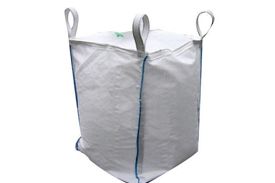 HDPE or PP Woven Sacks for packaging 50 kg or 25 kg Sugar
HDPE or PP Woven Sacks for packaging 50 kg or 25 kg SugarIS 14968:2015 |
Woven sacks made of PP (polypropylene) and HDPE (high-density polyethylene) are often used for a variety of packing purposes. These bags provide strength, durability, and moisture protection. HDPE and PP woven sacks play a crucial role in ensuring the quality, safety and efficiency of sugar packaging and distribution. They are dependable packaging materials that allow for bulk storage and transit, stop food loss, and maintain the quality of sugar. |
|
| 327 |
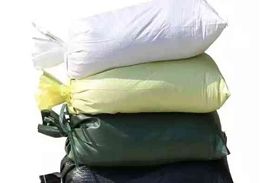 HDPE or PP Woven Sacks for filling Sand
HDPE or PP Woven Sacks for filling SandIS 14252:2015 |
All brands of High Density Polyethylene (HDPE)/ Polypropylene (PP) Woven Sacks for filling Sand are classified under IS 14252 and are required to get ISI Certification before its launch or import into the Indian market. ISI Certification will be provided to the product manufacturers (whether Indian or non-Indian) only and not provided to trader, dealer or distributor of the product.
|
|
| Butterfly Valves | |||
| 328 |
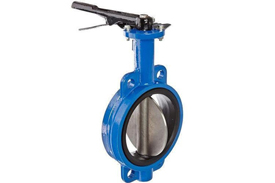 Butterfly Valves for general purpose
Butterfly Valves for general purposeIS 13095:2020 |
A kind of quarter-turn valve called a butterfly valve is used in pipelines to control or stop the flow of a fluid, which is often a gas or liquid. Their distinguishing feature is a disc or "butterfly" plate that is fixed on a shaft or rod. The disc is perpendicular to the flow while the valve is closed and parallel to the flow when it is completely open, enabling a simple and rapid on/off action. |
|
| Reflectors for Bicycles | |||
| 329 |
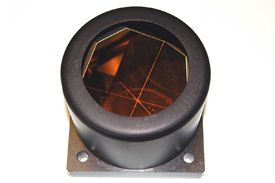 Retro-reflective Devices
Retro-reflective DevicesIS/ISO 6742 (Part-2):2015 |
Optical or electrical instruments that are intended to reflect light, sound, or other radiation back towards their source are known as retro-reflective devices. These gadgets function by reflecting signals or incident energy such that they bounce back in the direction that they came from. Retro-reflective devices are essential parts of many different applications and sectors because they promote efficiency, safety, and visibility. Applications for retro-reflective technology are widespread and include barcode scanning, photography, and traffic safety. |
|
| Paper | |||
| 330 |
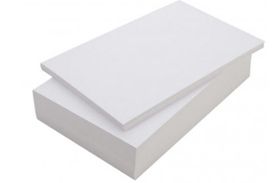 Plain Copier Paper
Plain Copier PaperIS 14490:2018 |
Papers for general office or home printing purposes, copying, and printing are frequently made from plain copier paper. Generally, it is not coated and is available in several standard sizes, including 8.5 × 11 inches or A4 (210 x 297 millimeters), as well as different weights, usually expressed in pounds (lb) or grams per square meter (g/m²). A common and adaptable paper type for usage in photocopiers, fax machines, laser printers, and inkjet printers is plain copier paper. |
|
| Cattle Feeds | |||
| 331 |
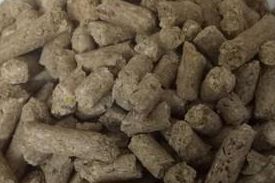 Compounded Feeds for Cattle
Compounded Feeds for CattleIS 2052:2023 |
Compounded feeds are specialty concoctions of several components intended to give poultry and cattle a healthy, well-balanced diet. These feeds are made to specifically address the nutritional needs of cattle in various life phases, including calves, heifers developing into adulthood, nursing cows, and bulls. |
|
| Automobile Wheel Rim Component | |||
| 332 |
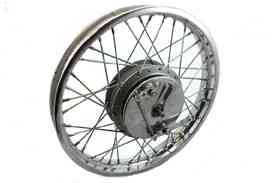 Light Alloy Wheel Rims
Light Alloy Wheel RimsIS 16192 (Part-1):2014 |
One kind of wheel component utilized in automotive applications are light alloy wheel rims. Unlike standard steel wheels, they are built of various lightweight metal alloys like magnesium or aluminum. Light alloy wheel rims are renowned for their unique style, less weight, and improved performance attributes. |
|
| 333 |
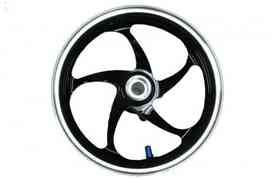 Sheet Metal Wheel Rims
Sheet Metal Wheel RimsIS 16192 (Part-2):2014 |
One kind of wheel component seen on a variety of vehicles, such as automobiles, trucks, and motorbikes, is sheet metal wheel rims. Usually, these rims are constructed from flat metal sheets that are shaped and welded into a circular shape. They offer a good mix of durability, cost, and personalization. |
|
| 334 |
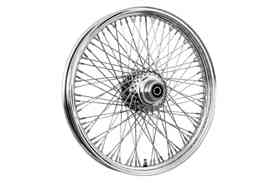 Spoke Wheel Rims
Spoke Wheel RimsIS 16192 (Part-3):2018 |
Spoke wheel rims, often referred to as wire wheel rims, are a unique style of wheel design that is frequently seen on a variety of vehicles, especially motorbikes and certain older or historic cars. The spoke-like construction of these rims is made up of tiny metal rods called spokes that extend from the center hub to the outside rim. They combine historical relevance, lightweight design, visual appeal, and customizability. |
|
| 335 |
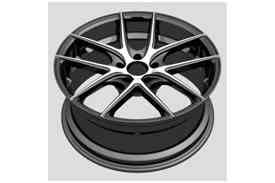 Wheels for Passenger Cars
Wheels for Passenger CarsIS 9436:2018 |
Wheels are essential parts of machines and automobiles, performing roles that are vital to efficiency, control, safety, and movement. They have been essential to the development of human technology, allowing for the growth of industry, transportation, and a host of other uses. In addition to improving the vehicle's aesthetics, wheels also improve passenger automobiles' functionality and safety. They come in a range of sizes and materials to accommodate a variety of automobile types and customer tastes. |
|
| 336 |
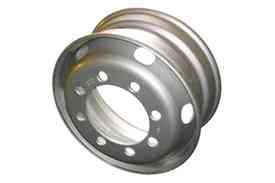 Wheels or Rims for Trucks and Buses
Wheels or Rims for Trucks and BusesIS 9438:2018 |
The vital parts of a vehicle that provide it stability, motion, and control are its wheels. They are the functional and load-bearing parts that let trucks and buses to move more easily and sustain their weight. They are also essential to the performance and safety of the cars. Contrarily, rims are essentially decorative elements that improve the wheels' look. |
|
| Footwear | |||
| 337 |
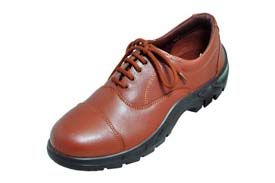 Personal protective equipment Part-4 Occupational Footwear
Personal protective equipment Part-4 Occupational FootwearIS 15298 (Part-4):2017 |
Occupational footwear is a unique category of specialized footwear that is made to fulfill the demands of different industries and professions with regard to comfort, safety, and performance. The capacity of industrial footwear to shield employees from workplace dangers and to support and soothe them throughout extended workdays is what makes it so important. It boosts employees' productivity and sense of fulfillment at work in addition to ensuring their safety and wellbeing. |
|
| 338 |
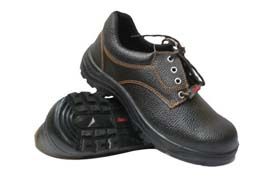 Personal protective equipment Part-3 Protective Footwear
Personal protective equipment Part-3 Protective FootwearIS 15298 (Part-3):2018 |
A sort of specialist footwear known as "protective footwear" is made to safeguard the feet throughout a variety of activities and work conditions. It is an essential component of personal protective equipment (PPE) that is vital to maintaining workplace safety and shielding employees from various risks. Its importance goes beyond only lowering the number of injuries; it also includes meeting legal requirements, improving comfort, encouraging a culture of safety, and eventually creating a more secure and efficient work environment. |
|
| 339 |
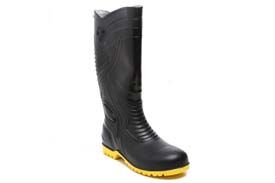 Personal protective equipment Part-2 Safety Footwear
Personal protective equipment Part-2 Safety FootwearIS 15298 (Part-2):2016 |
Safety footwear is a specific kind of footwear made to guard the wearer's feet from various occupational dangers and guarantee their safety in dangerous settings. Its main goals are to safeguard employees from a variety of risks, improve their comfort and wellbeing, and foster a more secure and effective work environment.
|
|
| 340 |
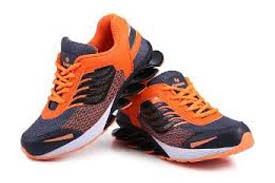 Sports footwear
Sports footwearIS 15844:2010 |
A particular kind of specialty footwear made for physical activity and sports is referred to as sports footwear. These shoes are designed to give athletes participating in a variety of sports and physical activities comfort, support, and improved performance. For athletes, fitness fanatics, and anybody engaging in sports or exercise, sports footwear is a must. |
|
| 341 |
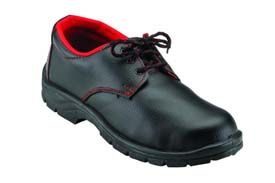 Leather safety footwear with direct moulded polyvinyl chloride (PVC) sole
Leather safety footwear with direct moulded polyvinyl chloride (PVC) soleIS 14544:2022 |
Protective boots or shoes with a leather upper are referred to as leather safety footwear. Typically, the upper of these shoes is made of leather, while the bottom is made of polyvinyl chloride (PVC) material that is directly molded to the shoe. Direct-moulded PVC soles on leather safety footwear combine the traction, comfort, and water and chemical resistance of PVC with the strength and durability of leather. |
|
| 342 |
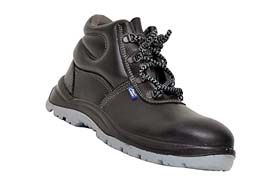 Leather safety footwear having direct moulded rubber sole
Leather safety footwear having direct moulded rubber soleIS 11226:1993 |
Protective boots or shoes that are predominantly made of leather are referred to as leather safety footwear. Rubber is used in the direct molding method to create the soles of these safety shoes. Direct-moulded rubber soles on leather safety footwear combine the superior traction, slip resistance, comfort, and protective qualities of rubber with the strength and longevity of leather. These shoes are necessary for a variety of job conditions, particularly those where it's important to guard against chemicals, wetness, and slip risks. |
|
| 343 |
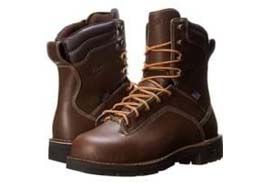 Moulded plastics footwear-Lined or Unlined polyurethane boots for general industrial use
Moulded plastics footwear-Lined or Unlined polyurethane boots for general industrial useIS 16645:2018 |
The term "molded plastic footwear" describes a kind of footwear composed mostly of plastic molds. These shoes provide special characteristics and advantages that set them apart from conventional leather or cloth shoes. They offer longevity, comfort, and resilience to chemicals and water, all of which are essential for protecting workers from a variety of risks. They are a useful tool in a variety of industrial settings, helping to create a safer and more productive work environment because of their versatility, simplicity in cleaning, and capacity for modification. |
|
| 344 |
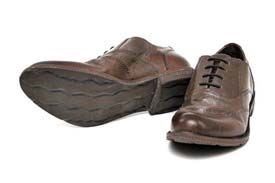 Footwear for men and women for municipal scavenging work
Footwear for men and women for municipal scavenging workIS 16994:2018 |
Clothing worn on the feet is referred to as footwear. It has several useful purposes and comes in a range of designs, materials, and styles to accommodate a range of requirements and tastes. The capacity of footwear to offer safety, comfort, style, and practicality in a variety of settings and activities is what makes it so important. |
|
| 345 |
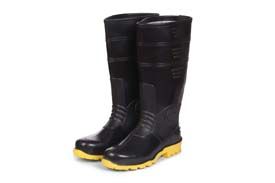 Industrial and protective rubber knee and ankle boots
Industrial and protective rubber knee and ankle bootsIS 5557:2004 |
Specialized footwear for a variety of industrial, agricultural, and outdoor uses include industrial and protective rubber knee and ankle boots. These boots are made of rubber and are renowned for their resilience to water, protection, and longevity. Rubber knee and ankle boots that are industrial and protective are crucial for guaranteeing the security, safety, and wellbeing of employees in demanding and frequently dangerous work settings. |
|
| 346 |
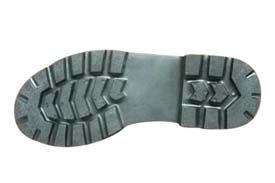 Moulded solid rubber soles and heels
Moulded solid rubber soles and heelsIS 5676:1995 |
Shoes that have their soles and heels made of one solid piece of rubber that has been molded into a precise shape are known as shoes with moulded solid rubber soles and heels. In the footwear business, moulded solid rubber heels and soles are crucial because they provide customers practical advantages including comfort, protection, and durability. |
|
| 347 |
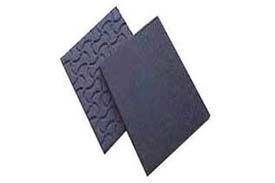 Rubber microcellular sheets for soles and heels
Rubber microcellular sheets for soles and heelsIS 6664:1992 |
Rubber microcellular sheets are a kind of rubber material that have uniformly spaced, tiny cells arranged in a cellular or foam-like structure. These sheets are designed with a high density of micron-sized cells, which gives the rubber unique qualities and advantages. Because of their adaptability, they are used in situations where a mix of qualities, such as insulation, shock absorption, and cushioning, are needed. |
|
| 348 |
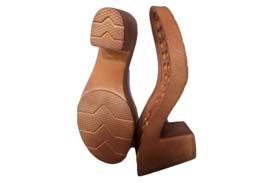 Solid PVC soles and heels
Solid PVC soles and heelsIS 6719:1972 |
Synthetic plastics like PVC are renowned for their strength, pliability, and transparency. Because of their abrasion resistance, waterproof nature, and durability, they are frequently employed in the production of heels and soles. |
|
| 349 |
 PVC sandal
PVC sandalIS 6721:2023 |
A polyvinyl chloride (PVC) sandal is a kind of footwear in which the foot is covered by the upper portion of the sandal. Synthetic plastics like PVC are renowned for their strength and pliability, which makes them ideal for a variety of goods, including shoes. In order to provide comfort and style, PVC sandals usually have straps or other designs that securely keep the foot in place. |
|
| 350 |
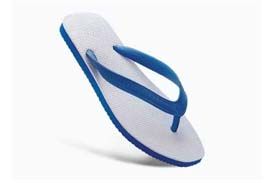 Rubber Hawai Chappal
Rubber Hawai ChappalIS 10702:2023 |
Rubber is the primary material used to make rubber hawai chappals. These chappals are renowned for being easy to use and adaptable. Because of their cost, comfort, and durability, they are a well-liked option, especially in warm climates where open-toed shoes are frequently worn. |
|
| 351 |
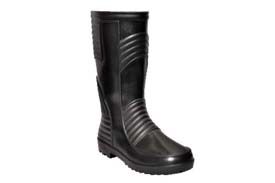 Polyvinyl chloride(PVC) industrial boots
Polyvinyl chloride(PVC) industrial bootsIS 12254:2021 |
Industrial boots made of polyvinyl chloride (PVC) are a typical protective footwear type used in a variety of industrial and occupational contexts. Numerous industrial areas, such as construction, manufacturing, agriculture, food processing, chemical handling, and many more, frequently employ these boots. |
|
| 352 |
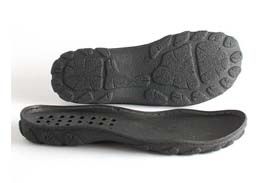 Polyurethane sole, semirigid
Polyurethane sole, semirigidIS 13893:1994 |
A form of footwear sole composed of polyurethane material is called a polyurethane (PU) sole. A flexible synthetic material utilized in many sectors, including the production of footwear, is polyurethane. |
|
| 353 |
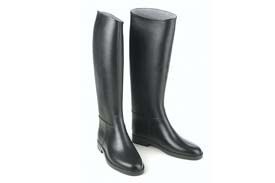 Unlined moulded rubber boots
Unlined moulded rubber bootsIS 13995:1995 |
Molded rubber boots without linings are a particular kind of footwear composed of rubber without any extra lining within. These boots are often made by molding rubber into a predetermined shape. They are frequently utilized for a variety of tasks, such as outdoor labor, gardening, and work in muddy or damp environments. |
|
| 354 |
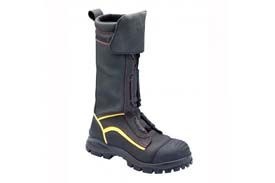 Leather safety boots and shoes for miners
Leather safety boots and shoes for minersIS 1989 (Part-1):1986 |
A kind of protective footwear made of leather is referred to as leather safety boots and shoes, and it is intended to guarantee the longevity and safety of those employed in the mining sector. In order to protect miners from harm in the difficult and dangerous conditions they work in, these boots and shoes are often constructed of leather and equipped with a number of safety measures. They are made to protect workers from a variety of industrial dangers, including electrical hazards, sharp items, slick surfaces, and falling objects. |
|
| 355 |
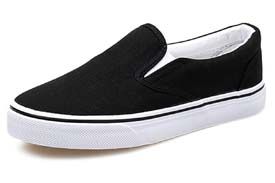 Canvas Shoes Rubber Sole
Canvas Shoes Rubber SoleIS 3735:1996 |
A style of footwear known as "canvas shoes" has an upper part composed of canvas cloth. Their adaptable, breathable, and lightweight qualities appeal to a wide range of age groups and lifestyles. Rubber soles are commonly used in canvas shoes. Their rubber soles and canvas uppers provide them flexibility, durability, and excellent grip, which makes them appropriate for a variety of settings and events. |
|
| 356 |
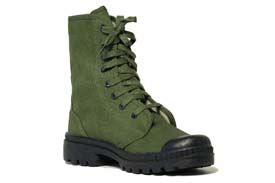 Canvas Boots Rubber Sole
Canvas Boots Rubber SoleIS 3736:1995 |
The term "canvas boots" describes a form of shoe with an ankle-covering or higher-up leg boot shape, with uppers composed of canvas cloth. Generally speaking, canvas boots have rubber soles. Canvas boots combine the traction and grip offered by rubber soles with the strength and breathability of canvas. |
|
| 357 |
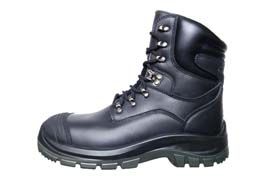 Safety Rubber Canvas Boots for Miners
Safety Rubber Canvas Boots for MinersIS 3976:2018 |
Safety is the first concern in some work places and outdoor activities, which is why safety rubber canvas boots are a sort of protective footwear. The structure of these boots, which usually consists of rubber bottoms and canvas uppers with additional safety elements to safeguard the wearer, is what makes them unique. The materials used include rubber and canvas because they are long-lasting and resilient to deterioration.
|
|
| 358 |
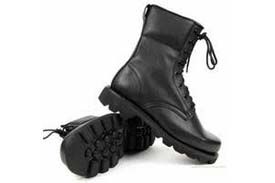 Antiriot shoes
Antiriot shoesIS 17037:2018 |
Specialized footwear known as "antiriot shoes" is made for law enforcement and security professionals who are in charge of managing or suppressing riots, demonstrations, or other civil unrest. A variety of characteristics are integrated into these shoes to protect the user and assist in maintaining control in potentially hazardous and chaotic conditions. Antiriot shoes are primarily designed to protect security workers from different threats and hazards that may arise during riot control, such as sharp objects, fire, electrical hazards, water, and oil. Military troops can do their everyday duties without difficulty and with ease when they utilize them. |
|
| 359 |
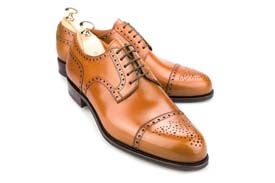 Derby shoes
Derby shoesIS 17043:2018 |
Classic men's footwear noted for its ageless and adaptable style is the derby shoe. Their unique lacing mechanism sets them apart; shoelace eyelets are sewed on top of the vamp, or front portion of the shoe. |
|
| 360 |
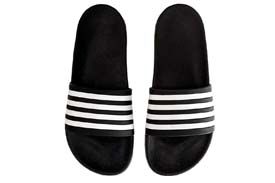 Slipper, rubber
Slipper, rubberIS 11544:1986 |
All brands of Slipper, rubber are classified under IS 11544 and are required to get ISI Certification before its launch or import into the Indian market. ISI Certification will be provided to the product manufacturers (whether Indian or non-Indian) only and not provided to trader, dealer or distributor of the product.
|
|
| 361 |
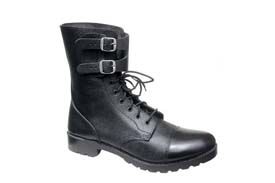 High ankle tactical boots with PU-Rubber sole
High ankle tactical boots with PU-Rubber soleIS 17012:2018 |
Specialized footwear known as high ankle tactical boots is mainly made for outdoor lovers and law enforcement and military personnel. These boots are ideal for hard environments and rough terrain because of their unique characteristics. High ankle tactical boots' polyurethane and rubber soles strike a balance between toughness, comfort, and performance in demanding and dangerous circumstances. They are therefore ideal for those in tough jobs where having supportive and dependable footwear is crucial. |
|
| 362 |
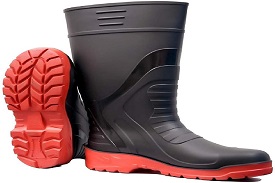 All rubber gum boots and ankle boots
All rubber gum boots and ankle bootsIS 5557 (Part 2):2018 |
All-rubber gum boots and ankle boots are types of footwear made entirely from rubber, providing waterproof protection and durability in various outdoor and industrial environments. These boots feature a seamless construction with moulded rubber uppers and soles, offering superior resistance to water, mud, chemicals, and other hazardous substances. |
|
| 363 |
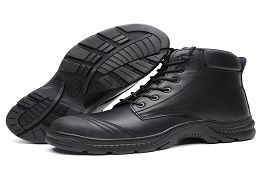 Leather safety boots and shoes for heavy metal industries
Leather safety boots and shoes for heavy metal industriesIS 1989 (Part 2):1986 |
Leather safety boots and shoes designed for heavy metal industries are specialized footwear constructed with durable leather uppers and rugged soles to provide superior protection and comfort in challenging industrial environments. These boots and shoes are engineered to withstand the demanding conditions present in heavy metal industries, including metalworking, foundries, welding, and manufacturing, where workers are exposed to various hazards such as heavy machinery, falling objects, sharp metal edges, and molten metal splashes. |
|
| Press Tool-Punches | |||
| 364 |
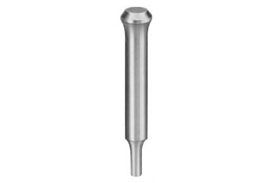 Tools for Pressing Part-3 Round Punches with 60 Degrees Conical Head and Reduced Shank
Tools for Pressing Part-3 Round Punches with 60 Degrees Conical Head and Reduced ShankIS 4296:Part 3:2015 |
Round punches are cylindrical instruments used for shaping, perforating, and cutting holes in materials. They can have a pointed or rounded tip. These tools' conical heads and shorter shanks are crucial because they offer accuracy, adaptability, and a polished appearance. |
|
| 365 |
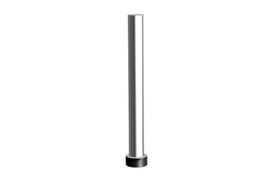 Tools for Pressing Part-2 Punches with Cylindrical Head and Straight or Reduced Shank
Tools for Pressing Part-2 Punches with Cylindrical Head and Straight or Reduced ShankIS 4296:Part 2:2015 |
Punches are multipurpose hand instruments or machines that make holes, imprints, or indentations in a variety of materials. Round, oblong, square, and rectangular forms are among the usual configurations for punches with reduced shanks and cylindrical heads. In a variety of professions and sectors where control, access, and precision are essential, these instruments are invaluable. In many different sectors, including as jewelry manufacturing, woodworking, leatherworking, and metallurgy, they are extensively utilized. |
|
| 366 |
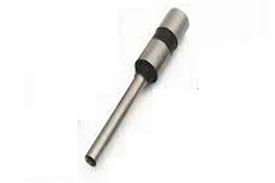 Tools for Pressing Part-1 Round Punches with 60 Degrees Conical Head and Straight Shank
Tools for Pressing Part-1 Round Punches with 60 Degrees Conical Head and Straight ShankIS 4296:Part 1:2016 |
One form of punching instrument that stands out is the round punch, which has a cylindrical or circular shape at the striking end. In a variety of industries and crafts, these punches are essential for operations requiring consistent, high-quality outcomes because they allow for regulated and accurate punching. They are extensively employed in a variety of materials, including as metal, wood, leather, polymers, and more, to produce precise and consistent holes, imprints, or forms. |
|
| Helmet for riders of Two Wheeler Motor Vehicles | |||
| 367 |
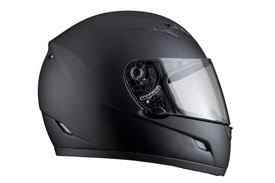 Helmet for riders of Two Wheeler Motor Vehicles
Helmet for riders of Two Wheeler Motor VehiclesIS 4151:2015 |
The purpose of a helmet is to protect the wearer's head from potential impacts, injuries, and risks. They are widely employed in many different applications and function as an essential safety item. The capacity of helmets to lessen the severity of head injuries and save lives makes them essential. They may also lessen the possibility of serious damage to the face and neck. For motorcycle and scooter riders, wearing the proper helmet is a crucial safety precaution and a common sense step, whether for sports, employment, or leisure activities. |
|
| Refrigerating Appliances | |||
| 368 |
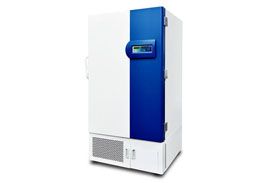 Household Refrigerating Appliances-Characteristics and Test Methods Part-1 General Requirements
Household Refrigerating Appliances-Characteristics and Test Methods Part-1 General RequirementsIS 17550:Part 1:2021 |
Essential equipment present in homes and other settings are household refrigerators. They are intended to give perishable food products, drinks, and other temperature-sensitive goods a regulated, cold storage environment. |
|
| 369 |
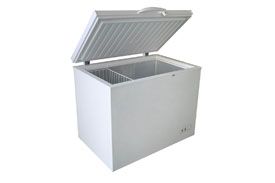 Freezers
FreezersIS 7872:2020 |
Appliances used in homes and businesses, freezers are made to very low temperatures in order to store and preserve a variety of perishable goods. They are essential for minimizing food waste, offering convenience, and facilitating extended storage of different products. Food, such as meat, vegetables, fruits, and cooked meals, may be frozen and kept in freezers for extended periods of time. Freezers come in several varieties, each with unique features and benefits. |
|
| Centrifugally cast (Spun) iron pipes | |||
| 370 |
 Centrifugally cast (Spun) iron pressure pipes for water, gas and sewage
Centrifugally cast (Spun) iron pressure pipes for water, gas and sewageIS 1536:2023 |
A particular kind of pipe that is often used in many different applications, particularly for the conveyance of fluids under pressure, are centrifugally cast iron pressure pipes. The method of centrifugal casting, which involves pouring molten iron into a mold or form while it is spinning rapidly, is used to make these pipes. This method creates centrifugal force, which distributes iron uniformly throughout the inside surface of the mold, producing a seamless, long-lasting pipe. These pipes are renowned for their durability, ability to withstand pressure, and ability to withstand corrosion. |
|
| 371 |
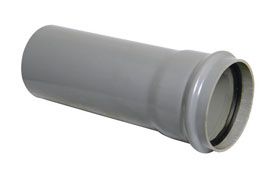 Centrifugally cast (Spun) iron spigot and socket soil, waste, ventilating and rainwater pipes, fittings and accessories
Centrifugally cast (Spun) iron spigot and socket soil, waste, ventilating and rainwater pipes, fittings and accessoriesIS 3989:2009 |
A complete plumbing and drainage system utilized in building construction is comprised of centrifugally cast (spun) iron spigot and socket soil, waste, ventilating, and rainfall pipes, fittings, and accessories. With the use of spigots and sockets, it is made to manage various kinds of wastewater and rainfall while offering dependable and leak-proof connections. In order to keep building plumbing and drainage systems intact, these components must be long-lasting, resistant to corrosion, and have securely fastened connections. They are essential to protecting the environment and public health. |
|
| 372 |
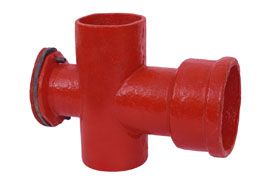 Hubless centrifugally cast (Spun) iron pipes, fittings and accessories-Spigot series
Hubless centrifugally cast (Spun) iron pipes, fittings and accessories-Spigot seriesIS 15905:2011 |
For a variety of plumbing and drainage applications, hubless centrifugally cast (spun) iron pipes, fittings, and accessories provide an effective and dependable solution. Their spigot-end shape makes couplings and installation easier, and their resilience to corrosion, durability, and leakage add to their significance in contemporary drainage and plumbing applications. |
|
| Flux Cored (Tubular) Electrodes | |||
| 373 |
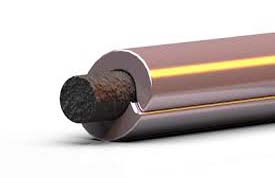 Flux Cored (Tubular) Electrodes for Gas Shielded and Self-Shielded Metal Welding of Carbon or Carbon- Manganese Steel
Flux Cored (Tubular) Electrodes for Gas Shielded and Self-Shielded Metal Welding of Carbon or Carbon- Manganese SteelIS 15769:2008 |
One kind of welding consumable produced especially for connecting and manufacturing components composed of these materials is flux cored (tubular) electrodes. These electrodes are used in a variety of welding procedures, such as gas-shielded metal arc welding (GMAW) and self-shielded flux cored arc welding (FCAW), and they feature a hollow, tubular core that is filled with flux. |
|
| Sewing Machine | |||
| 374 |
 Household Zig-Zag Sewing Machine Head
Household Zig-Zag Sewing Machine HeadIS 15449:Part1:2004 |
The primary part of a sewing machine intended for home use that is capable of producing zigzag stitches is referred to as the household zigzag sewing machine head. Typically, this sewing machine head has a number of crucial parts and sewing systems, including feed dogs, a zigzag stitch selection, a needle, and a presser foot. It's a handy and easy-to-use tool for both ornamental and artistic stitching as well as basic sewing. |
|
| Water Treatment System | |||
| 375 |
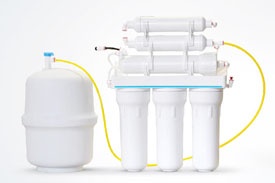 Reverse Osmosis (RO) Based Point-Of-Use (POU) Water Treatment System
Reverse Osmosis (RO) Based Point-Of-Use (POU) Water Treatment SystemIS 16240:2023 |
Modern technology, such as a Point-of-Use (POU) water treatment system based on reverse osmosis (RO), is intended to supply safe and clean drinking water right at the point of use, usually in homes or small-scale settings. Reverse osmosis is an advanced filtering method used by this system to eliminate pollutants, impurities, and particles from the water supply. |
|
| Jute Bag | |||
| 376 |
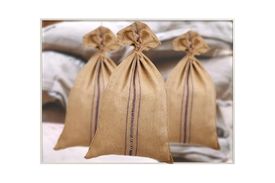 A- twill Jute Bag
A- twill Jute BagIS 1943:1995 |
A-twill Jute Bag, also known as jute sacking bags, are commonly used to pack rice, wheat, sugar, coffee beans, cocoa beans and other bulky grain products. They typically have a capacity of 50 to 100 kg. ISI mark certification is required for Jute bags for packing 50 Kg food grains under IS 1943:1995. |
|
| 377 |
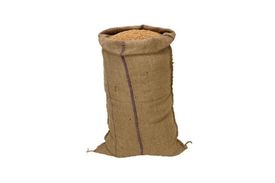 B-twill Jute bags for packing foodgrains
B-twill Jute bags for packing foodgrainsIS 2566:1993 |
Food grains are packaged extensively using b-twill jute bags, a specific type of jute bag. The distinctive B-twill weaving pattern used to create these bags from natural jute fibers improves their strength, performance, and longevity. They are ideal for holding and conveying large amounts of grains because of their remarkable tensile strength, which is a result of their unique twill weave structure. |
|
| 378 |
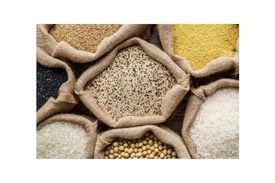 Jute bags for packing 50 Kg foodgrains
Jute bags for packing 50 Kg foodgrainsIS 12650:2018 |
For many years, jute bags have been a reliable option for storing 50 kg of food grains because of its exceptional strength, sustainability, and breathability. Because they are made of natural jute fibers, these bags are a sustainable choice for carrying and storing food grains. Even after prolonged storage or transit, the sturdy design guarantees the safe confinement of grains. |
|
| 379 |
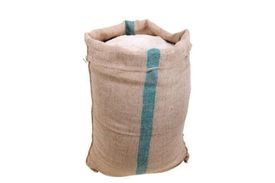 Jute bags for packing 50 Kg sugar
Jute bags for packing 50 Kg sugarIS 15138:2010 |
It has long been known that jute bags are a great option for packing bulk goods, such as 50-kg sacks of sugar. These bags are a great choice for storing and shipping sugar and other agricultural products since they are robust, long-lasting, and eco-friendly. The exceptional strength and durability of their natural fiber content, which comes from the jute plant, guarantees the secure containment of the sugar throughout storage and transit. |
|
| 380 |
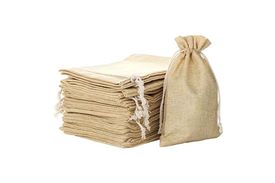 Light weight jute sacking bags for packing 50 Kg foodgrains
Light weight jute sacking bags for packing 50 Kg foodgrainsIS 16186:2014 |
Jute sacking bags that are lightweight and made to hold 50 kg of food grains provide durability, sustainability, and practicality. Because these specialty bags are made from natural jute fibers, they are a sustainable option for bulk grain packaging. 50 kg of food grains are safely contained in these jute sacking bags because of their remarkable tensile strength and longevity, which belies their lightweight design. |
|
| 381 |
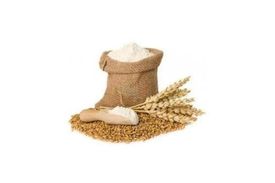 Jute bags for packing up to 30 Kg foodgrains
Jute bags for packing up to 30 Kg foodgrainsIS 16372:2015 |
Jute bags for packing up to 30 Kg food grains requires ISI mark certification under IS 16372:2015. The ISI mark is a symbol of quality assurance. |
|
| 382 |
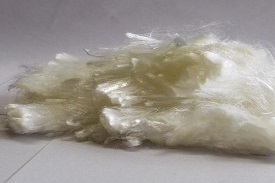 Viscose Staple Fibres
Viscose Staple FibresIS 17266:2019 |
Viscose Staple Fibres requires ISI mark certification under IS 17266:2019. The ISI mark is a symbol of quality assurance. |
|
| 383 |
-Woven-Geomembrane-for-Water-Proof-Lining-by-Brand-Liaison.jpg) Laminated High Density Polyethylene (HDPE) Woven Geomembrane for Water Proof Lining
Laminated High Density Polyethylene (HDPE) Woven Geomembrane for Water Proof LiningIS 15351:2015 |
Advanced geosynthetic materials, such as laminated High-Density Polyethylene (HDPE) woven geomembranes, are designed to offer superior waterproofing and lining solutions in a range of construction and environmental protection applications. Laminated HDPE woven geomembranes are mostly used for agricultural ponds, reservoirs, dams, canals, waste containment facilities, and other projects where waterproof lining is required. |
|
| 384 |
-Geomembranes-by-Brand-Liaison.jpg) Poly Vinyl Chloride (PVC) Geomembranes
Poly Vinyl Chloride (PVC) GeomembranesIS 15909 : 2020 |
Engineered geosynthetic materials called polyvinyl chloride (PVC) geomembranes are extensively utilized in a range of containment and environmental protection applications. PVC is a synthetic plastic that is used to make these geomembranes; it is renowned for its strength, resistance to chemicals, and impermeability. PVC geomembranes provide an efficient way to stop liquids or gases from seeping into or out of specified locations, which is why they are employed in containment and barrier systems that must be dependable. |
|
| 385 |
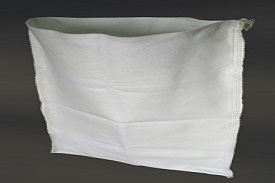 Needle punched non-woven geobags
Needle punched non-woven geobagsIS 16653:2017 |
Specialized geosynthetic materials called needle-punched non-woven geo bags are applied in a range of environmental, building, and civil engineering contexts. The non-woven polypropylene fabric used to make these geo bags is needle-punched to provide a robust, long-lasting, and highly permeable material. For erosion prevention and slope stability, needle-punched non-woven geo bags are one of the main uses. |
|
| 386 |
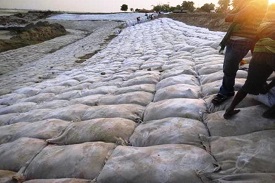 Polypropylene Multifilament woven geobags
Polypropylene Multifilament woven geobagsIS 16654:2017 |
Innovative and adaptable geosynthetic materials, polypropylene multifilament woven geobags are widely used in a wide range of environmental and civil engineering applications. Weaved polypropylene multifilament fabric, which provides exceptional strength, durability, and resistance to environmental elements, is used to create these geo bags. Slope stability and erosion management are two of the main uses of polypropylene multifilament woven geobags. |
|
| 387 |
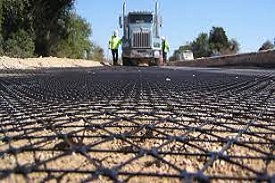 Jute Geotextiles Part 1 Strengthening of Sub-Grade in Roads
Jute Geotextiles Part 1 Strengthening of Sub-Grade in RoadsIS 14715 (Part 1): 2016 |
Jute Geotextiles Part 1 Strengthening of Sub-Grade in Roads requires ISI mark certification under IS 14715 (Part 1): 2016. The ISI mark is a symbol of quality assurance. |
|
| 388 |
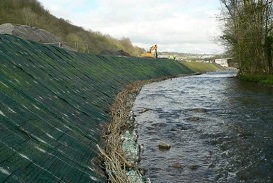 Jute Geotextiles Part 2 Control of Bank Erosion in Rivers and Waterways
Jute Geotextiles Part 2 Control of Bank Erosion in Rivers and WaterwaysIS 14715 (Part 2): 2016 |
Jute Geotextiles Part 2 Control of Bank Erosion in Rivers and Waterways requires ISI mark certification under IS 14715 (Part 1): 2016. The ISI mark is a symbol of quality assurance. |
|
| 389 |
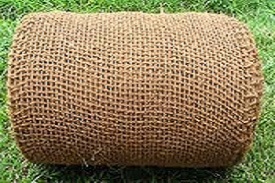 Open Weave Coir Bhoovastra
Open Weave Coir BhoovastraIS 15869 : 2020 |
Natural coconut coir fibers are used to make the eco-friendly and traditional Indian textile known as open weave coir bhoovastra. "Bhoovastra" means "earth cloth" in Sanskrit, and India's agricultural and cultural legacy are closely linked to this distinctive fabric. It is made by weaving coir fibers into a pattern resembling a lattice or open mesh, which produces a material that is breathable and lightweight and suitable for a variety of uses. |
|
| 390 |
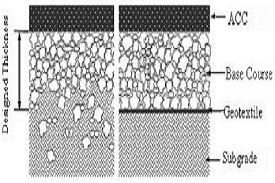 Geotextiles used in sub-grade separation in pavement structures
Geotextiles used in sub-grade separation in pavement structuresIS 16391 : 2015 |
In sub-grade separation for pavement constructions, geotextiles are essential elements that offer a vital barrier that improves the long-term durability and performance of highways and other infrastructure projects. These specialty textiles, which are made of strong, long-lasting materials, are positioned carefully inside pavement systems to avoid combining different elements and enhance the structural integrity as a whole. |
|
| 391 |
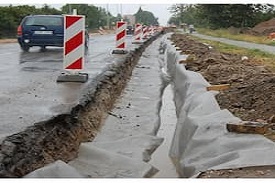 Geotextiles used in Subsurface Drainage Application
Geotextiles used in Subsurface Drainage ApplicationIS 16393 : 2015 |
Applications of Geotextiles in Subsurface DrainageIn a variety of construction and civil engineering applications, geotextiles play a vital function in controlling excess water and reducing soil erosion. They are an integral part of subsurface drainage systems. These specialty textiles are positioned carefully within drainage systems to maximize water flow and filtration. |
|
| 392 |
IS 16362:2020 |
Geotextiles provide efficient reinforcement and enhanced performance in road construction, making them essential elements in sub-grade stabilization for pavement systems. In order to improve the structural integrity of the sub-grade layer, these specialty textiles which are made of sturdy materials are positioned strategically inside pavement systems. |
|
| 393 |
-Geomembranes-for-lining-by-Brand-Liaison.jpg) High Density Polyethylene (HDPE) Geomembranes for lining
High Density Polyethylene (HDPE) Geomembranes for liningIS 16352 : 2020 |
Geomembranes made of High-Density Polyethylene (HDPE) are adaptable synthetic liners that are utilized in a variety of lining applications to retain and prevent seepage of liquid or gas. High-density polyethylene, an impermeable plastic material that is renowned for its remarkable resistance to environmental elements including UV radiation, chemicals, and severe temperatures, is used to create these geomembranes. |
|
| 394 |
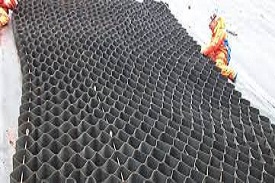 Geotextiles for permanent erosion control in hard armor systems
Geotextiles for permanent erosion control in hard armor systemsIS 16392 : 2015 |
Geotextiles for permanent erosion control in hard armor systems require ISI mark certification under IS 16392:2015. The ISI mark is a symbol of quality assurance. |
|
| 395 |
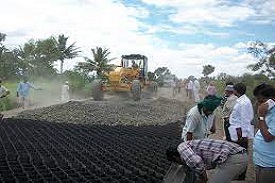 Geogrids for flexible pavements
Geogrids for flexible pavementsIS 17371:2020 |
As a reinforcing layer that improves the road's or pavement's structural integrity and performance, geogrids are essential to the design of flexible pavements. The purpose of these grid-like materials, which are usually composed of fiberglass or high-strength polymers, is to better distribute and regulate the load-bearing stresses within the pavement layers. Geogrids function in flexible pavements by strengthening the pavement layers' tensile strength and modulus of elasticity. |
|
| 396 |
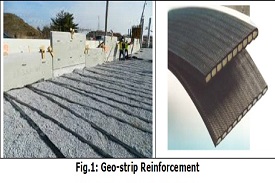 Polymeric strip or geostrip used as soil reinforcement in retaining structures
Polymeric strip or geostrip used as soil reinforcement in retaining structuresIS 17372:2020 |
Geostrips, also known as polymeric strips, are crucial parts of soil-reinforced retaining structures. These specialty strips are essential for improving the stability and load-bearing capability of these kinds of constructions. By dispersing lateral stresses and lowering the chance of wall or slope failure, they are intended to increase the soil's overall structural integrity. Even in difficult soil conditions, geostrips allow for the building of higher and more secure retaining walls, embankments, and slopes by enhancing the soil's tensile strength and cohesiveness. |
|
| 397 |
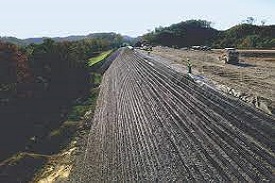 Geogrids used in reinforced soil retaining structures
Geogrids used in reinforced soil retaining structuresIS 17373:2020 |
As crucial structural support and stability components, geogrids are used in the building of reinforced soil-retaining structures. Their main job is to improve the overall structural integrity of the retaining wall or slope by distributing and reinforcing the soil's ability to support weight. Geogrids function in reinforced soil retaining structures by combining with the surrounding soil to form a robust composite material system. |
|
| 398 |
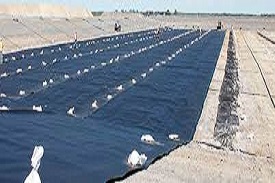 Reinforced HDPE membrane for effluents and chemical resistance lining
Reinforced HDPE membrane for effluents and chemical resistance liningIS 17374:2020 |
Reinforced HDPE (High-Density Polyethylene) membrane is a reliable and adaptable option for industrial containment and environmental protection. It is especially made for effluent containment and chemical resistant lining applications. Because of its remarkable chemical resistance and impermeability, the core layer of HDPE used in the construction of these membranes is particularly successful in preventing the migration of dangerous substances such as acids, bases, and industrial chemicals. |
|
| 399 |
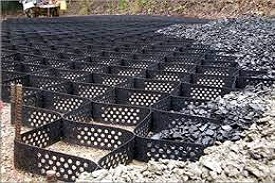 Geosynthetics - Geocells - Specification Part 1 Load Bearing Application
Geosynthetics - Geocells - Specification Part 1 Load Bearing ApplicationIS 17483 (Part 1): 2020 |
Geocells, a kind of geosynthetic material, are crucial elements that give structural support and reinforcement to different building projects in load-bearing applications. Geocells are composed of three-dimensional linked cells, usually composed of high-density polyethylene (HDPE) or other robust materials. |
|
| 400 |
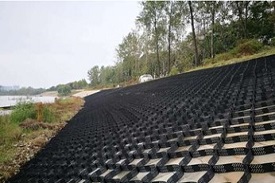 Geosynthetics - Geocells - Specification Part 2 Slope Erosion Protection Application
Geosynthetics - Geocells - Specification Part 2 Slope Erosion Protection ApplicationIS 17483 (Part 2): 2020 |
Geosynthetics - Geocells - Specification Part 2 Slope Erosion Protection Application requires ISI mark certification under IS 17483 (Part 2): 2020. The ISI mark is a symbol of quality assurance. |
|
| 401 |
-materials-by-brand-liaison.jpg) Geotextiles used as protection (or cushioning) materials
Geotextiles used as protection (or cushioning) materialsIS 16090:2013 |
Specialized fabric products known as geotextiles are intended to act as a protective barrier or cushioning layer in a variety of civil engineering and construction applications. These geotextiles are designed to offer several advantages, such as stabilizing soil, preventing erosion, and shielding delicate parts like geomembranes. |
|
| 402 |
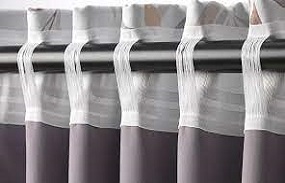 Curtains and Drapes
Curtains and DrapesIS 15741: 2007 |
Drapes and curtains are crucial components of window coverings and home design that have both practical and decorative uses. These fabric-based window coverings are used for a variety of purposes in homes, workplaces, and other locations. In terms of functionality, drapes and curtains provide privacy, light management, and insulation, which helps to manage how much heat and light enter a space naturally. |
|
| 403 |
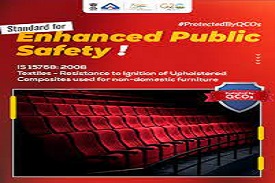 Upholstered composites used for non-domestic furniture
Upholstered composites used for non-domestic furnitureIS 15768 : 2008 |
For non-domestic furniture, upholstered composites offer a contemporary and adaptable method of designing and building furniture. Comfort, toughness, and aesthetic appeal are the main goals of upholstered composites in non-domestic environments, including as public areas, hotels, restaurants, and workplaces. |
|
| 404 |
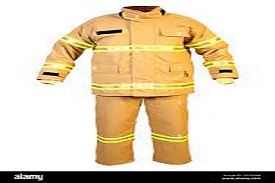 Protective clothing for firefighters
Protective clothing for firefightersIS 16890 : 2018 |
As part of the life-saving equipment meant to protect firefighters from hazardous chemicals, flames, smoke, and intense heat, protective apparel for firefighters is an essential piece. Often referred to as turnout gear or bunker gear, this specific apparel is designed to optimize firefighters' safety and performance while offering complete protection. |
|
| 405 |
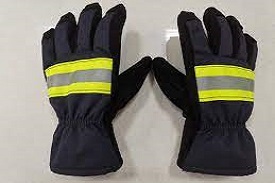 Protective gloves for firefighters
Protective gloves for firefightersIS 16874 : 2018 |
Firefighters' protective gloves are an important part of the specialized equipment meant to protect these first responders from extreme heat, flames, and other dangerous substances as they work. Firefighters can touch hot surfaces, rescue people, and battle fires thanks to the gloves' remarkable heat resistance and protection, which are made from cutting-edge materials. |
|
| 406 |
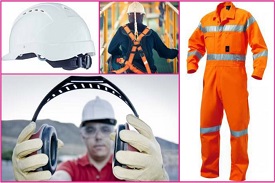 Protective clothing for industrial workers exposed to heat
Protective clothing for industrial workers exposed to heatIS 15748 : 2022 |
The first line of defense against the many thermal risks present in diverse work situations is protective apparel for industrial workers exposed to heat. These protective clothes are intended to protect workers from sources of high-temperature exposure, such as open flames, molten metal splashes, and intense heat. |
|
| 407 |
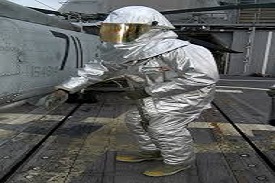 Clothing made of limited flame spread materials and material assemblies affording protection against heat and flame
Clothing made of limited flame spread materials and material assemblies affording protection against heat and flameIS 15742 : 2007 |
Protecting people working in locations where there is a danger of fire or thermal hazards requires clothing composed of limited flame-spread materials and material assemblies designed to provide protection against heat and flame. These specialty clothes assist lower the danger of injury in the case of a fire-related disaster since they are made of materials that are naturally resistant to heat and flame propagation. |
|
| 408 |
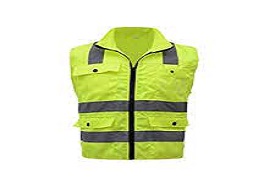 High visibility Warning Clothes
High visibility Warning ClothesIS 15809 : 2017 |
High visibility warning clothing is made with specific materials with safety as the main priority. These garments are usually adorned with reflective strips or patches and are composed of vividly colored fabrics, frequently in fluorescent hues like neon orange, yellow, or green. The goal of the reflecting features and vibrant colors is to make people very visible, especially in low-light or low-visibility environments. |
|
| 409 |
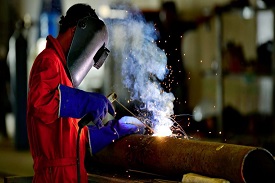 Protective Clothing for use in welding and allied processes
Protective Clothing for use in welding and allied processesIS 16655 : 2017 |
For welders and other professionals working in comparable situations, protective equipment made for use in welding and related procedures is a crucial part of occupational safety. This protective gear is designed to protect wearers from the many risks that come with welding, such as high temperatures, sparks, splattered molten metal, and possibly dangerous radiation. This clothing often consists of gloves, hoods, pants, and flame-resistant coveralls or jackets. The apparel is frequently made to encompass the entire body, shielding the welder's normal clothing below as well as their skin. |
|
| 410 |
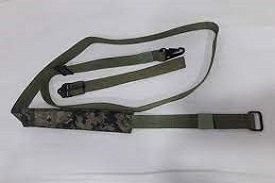 Tactical 3 point sling
Tactical 3 point slingIS 16725 : 2018 |
A specialized weapon attachment called a tactical 3-point sling is made to improve the handling and carrying of rifles and other long firearms, especially in military or tactical settings. The 3-point sling, in contrast to conventional slings, has three attachment points: one looping around the user's body, one close to the receiver or stock, and one close to the muzzle. |
|
| 411 |
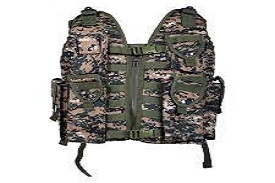 Pouch for ammunition and grenades made of disruptive pattern nylon-66
Pouch for ammunition and grenades made of disruptive pattern nylon-66IS 16726 : 2018 |
Disruptive pattern nylon-66 ammo and grenade pouches are tough, adaptable military gear meant to withstand the worst conditions encountered by combatants. The pouch's use of nylon-66 material offers a number of important benefits, including as water repellency, abrasion resistance, and durability, which make it ideal for usage in challenging outdoor conditions. |
|
| 412 |
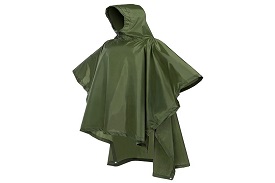 Water-proof multipurpose rain poncho
Water-proof multipurpose rain ponchoIS 17286 : 2019 |
An adaptable and essential item of outdoor clothing, a waterproof multifunctional rain poncho is made to keep people dry and safe in bad weather. In order to prevent rainfall from penetrating the fabric, these ponchos are usually constructed from waterproof materials like PVC, nylon, or polyester with a waterproof coating. |
|
| 413 |
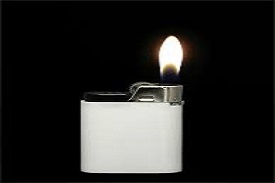 Lighters- Safety Specifications
Lighters- Safety SpecificationsIS/ISO 9994:2018 |
Lighters- Safety Specifications requires ISI mark certification under IS/ISO 9994:2018. The ISI mark is a symbol of quality assurance. |
|
| 414 |
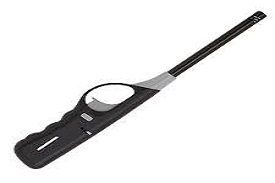 Utility Lighters – Safety Specifications
Utility Lighters – Safety SpecificationsIS/ISO 22702:2018 |
Utility lighters are made with an emphasis on safety, containing certain features and requirements to guarantee their dependable and safe operation. These lighters are commonly used to ignite gas stoves, candles, grills, and other appliances. Child-resistant mechanisms are included in the lighters to prevent children from inadvertently lighting them on fire. |
|
| 415 |
-by-brand-liaison.jpg) Potable Water Bottles (Copper, Stainless Steel, Aluminum)
Potable Water Bottles (Copper, Stainless Steel, Aluminum)IS 17803: 2022 |
Potable water bottles made of copper, stainless steel, and aluminum are becoming more and more well-liked due to their long lifespan, environmental friendliness, and capacity to preserve the quality of the water they hold. Because they can hold liquids for lengthy periods of time at either a high or low temperature, stainless steel bottles which are renowned for their durability and resistance to corrosion are a popular option for meeting daily hydration demands. |
|
| 416 |
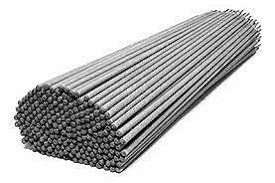 Covered electrodes for manual metal arc welding of carbon and carbon manganese steel
Covered electrodes for manual metal arc welding of carbon and carbon manganese steelIS 814 : 2004 |
Covered electrodes, sometimes referred to as stick electrodes, are essential consumables for carbon and carbon manganese steel manual metal arc welding (MMAW). These electrodes are made out of a flux-coated solid metal core wire. A molten pool of weld is produced when an electric arc is created between the electrode and the workpiece, melting the flux coating and the core wire in the process. |
|
| 417 |
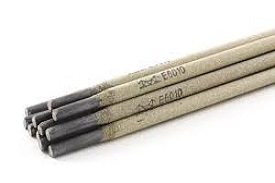 Welding rode and bare electrodes for gas shielded arc welding of structural steel
Welding rode and bare electrodes for gas shielded arc welding of structural steelIS 6419 : 1996 |
The consumables used in gas-shielded arc welding methods for structural steel are welding rods and bare electrodes. To attach structural steel components precisely and firmly, gas-shielded arc welding, also known as Metal Inert Gas (MIG) or Gas Metal Arc Welding (GMAW), depends on these electrodes. Bare electrodes are solid metal wires, whereas welding rods are usually made of metal wire coated with flux. |
|
| 418 |
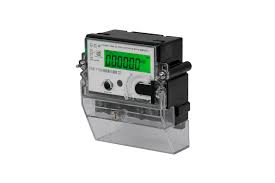 A.C. Static Direct Connected Watt Hour Smart Meter Class 1 and 2
A.C. Static Direct Connected Watt Hour Smart Meter Class 1 and 2IS 16444 : Part 1 : 2015 |
Class 1 and Class 2 A.C. static direct connected watt hour smart meters are advanced measurement tools used for invoicing and monitoring in the energy industry. Because these smart meters are directly linked to the electrical circuit, they can measure active power use (measured in watt-hours) with extreme accuracy. |
|
| 419 |
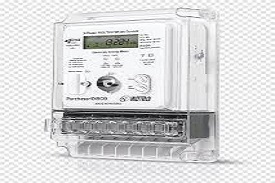 A.C. Static Transformer Operated Watt Hour and Var-Hour Smart Meters, Class 0.2S, 0.5S and 1.0S
A.C. Static Transformer Operated Watt Hour and Var-Hour Smart Meters, Class 0.2S, 0.5S and 1.0SIS 16444:Part 2:2017 |
Class 0.2S, 0.5S, and 1.0S A.C. static transformer-operated watt-hour and var-hour smart meters are examples of sophisticated measuring instruments used in the energy sector for extremely accurate and exact monitoring of power usage. With their exceptional precision in measuring active power (watt-hour) and reactive power (var-hour), these smart meters provide customers and utilities with vital information about how their energy use habits are changing. |
|
| 420 |
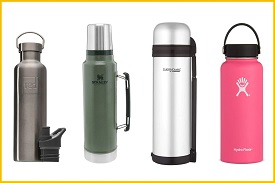 Insulated Flask for Domestic Use
Insulated Flask for Domestic UseIS 17790 : 2022 |
Domestic insulated flasks, which provide a practical and environmentally responsible way to maintain beverage temperature, have become indispensable tools in our everyday lives. Usually built with two walls, these flasks are composed of glass or stainless steel and have an insulating layer between them to control the temperature of their contents. |
|
| 421 |
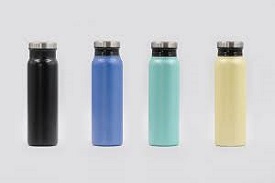 Domestic Stainless steel vacuum flask/bottle
Domestic Stainless steel vacuum flask/bottleIS 17526:2021 |
Home vacuum flasks and bottles made of stainless steel are becoming commonplace in homes all over the world because of their remarkable insulating qualities and capacity to maintain a temperature for prolonged periods of time. Most of the time, these bottles are made from premium stainless steel, which guarantees their longevity and protects the integrity of the liquids within by resisting rust and odors. |
|
| 422 |
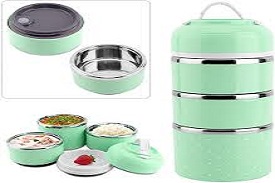 Insulated Container for Food Storage
Insulated Container for Food StorageIS 17569:2021 |
In today's modern kitchens, insulated food storage containers are an essential tool for those who are always on the go. These containers, which are usually constructed of glass, plastic, or stainless steel, have two walls and an insulating layer between them to assist control the temperature of the contents. Insulated containers are excellent in retaining the ideal temperature of food and beverages. |
|
| 423 |
-For-electrical-purposes-by-breand-liaison.jpg) Resin treated compressed wood laminates (compregs) – For electrical purposes
Resin treated compressed wood laminates (compregs) – For electrical purposesIS 3513 (Part 1) : 1989 |
Because of their special blend of mechanical strength and electrical insulating qualities, resin-treated compressed wood laminates, often known as "compregs," have proven to be highly useful in electrical applications. These laminates are made by compressing and curing layers of premium resin-impregnated wood veneers or fibers under heat and pressure. |
|
| 424 |
–For-chemical-purposes-by-brand-liaison.jpg) Resin treated compressed wood laminates (compregs) – For chemical purposes
Resin treated compressed wood laminates (compregs) – For chemical purposesIS 3513 (Part 2) : 1989 |
Because of their distinctive characteristics, resin-treated compressed wood laminates, usually referred to as "compregs," also have specific uses in chemical environments. These laminates are made by applying heat and pressure to wood veneers or fibers that have been impregnated with resin. The result is a thick composite material that is extremely durable. |
|
| 425 |
–For-general-purposes-by-brand-liaison.jpg) Resin treated compressed wood laminates (compregs) – For general purposes
Resin treated compressed wood laminates (compregs) – For general purposesIS 3513 (Part 3) : 1989 |
Compressed wood laminates coated with resin and often referred to as "compregs," are adaptable materials with a variety of general-purpose uses. These laminates are made by compressing layers of wood veneers or fibers under pressure and heat to create a solid, long-lasting composite material. The layers are then impregnated with premium resin. |
|
| 426 |
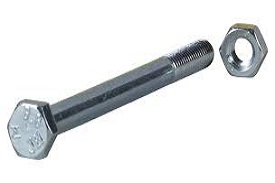 Hexagon Head Bolts, Screws and Nuts of product Grade C Hexagon Head Bolts (Size Range M 5 to M 64)
Hexagon Head Bolts, Screws and Nuts of product Grade C Hexagon Head Bolts (Size Range M 5 to M 64)IS 1363 (Part 1) :2019 |
Hexagon head fasteners, which vary in size from M 5 to M 64, are a valued class of fasteners that fall under the product grade C classification. In a variety of industrial and construction applications where dependable and secure fastening is crucial, these hexagon head bolts are indispensable parts. A product grade of C represents a compromise between affordability and accuracy. |
|
| 427 |
.jpg) Hexagon Head Screw (Size ranges from M 5 to 64)
Hexagon Head Screw (Size ranges from M 5 to 64)IS 1363 (Part 2) :2018 |
The M 5 to 64 size range of hexagon head screws makes them a highly adaptable and essential fastener for a variety of mechanical and building applications. The hexagonal head form of these screws makes them easy to identify and tighten with a wrench or socket. Hexagon head screws are appropriate for a wide range of applications, including small-scale undertakings like assembling electronics and large-scale ones like building infrastructure and buildings. |
|
| 428 |
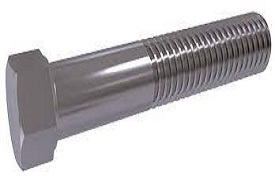 Hexagon Head Bolts, Screws and Nuts of product Grade C – Hexagon Nuts (Size Range M5 to M64)
Hexagon Head Bolts, Screws and Nuts of product Grade C – Hexagon Nuts (Size Range M5 to M64)IS 1363 (Part 3) : 2018 |
Under product grade C, hexagon head bolts, screws, and nuts are a flexible class of fasteners used in a wide range of industrial and construction applications. In this instance, we concentrate on hexagon nuts that fall between M5 and M64 in size. In addition to hexagon head bolts and screws, these hexagon nuts are essential parts that play a critical role in fastening joints and connections. |
|
| 429 |
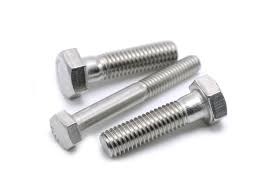 Hexagon Head Bolts, Screws and Nuts of product Grades A and B – Hexagon Head Bolts (Size Range M 1.6 To M 64)
Hexagon Head Bolts, Screws and Nuts of product Grades A and B – Hexagon Head Bolts (Size Range M 1.6 To M 64)IS 1364 (Part 1) : 2018 |
Fasteners with hexagonal heads, categorized as product grades A and B, are crucial components utilized in many mechanical and structural settings. The hexagonal head form of these fasteners, which allows for a secure tightening with a wrench or socket and simple grip, makes them easily identifiable. |
|
| 430 |
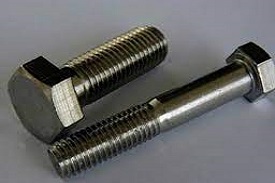 Hexagon Head Bolts, Screws and Nuts of Product Grades A and B – Hexagon Head Screws (Size Range M 1.6 to M 64)
Hexagon Head Bolts, Screws and Nuts of Product Grades A and B – Hexagon Head Screws (Size Range M 1.6 to M 64)IS 1364 (Part 2) : 2018 |
Hexagon Head Bolts, Screws and Nuts of product Grades A and B – Hexagon Head Bolts (Size Range M 1.6 To M 64) require ISI mark certification under IS 1364 (Part 1): 2018. The ISI mark is a symbol of quality assurance. |
|
| 431 |
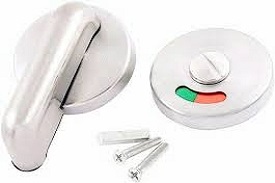 Indicating Bolts for use in public baths and lavatories
Indicating Bolts for use in public baths and lavatoriesIS 4621 : 1975 |
Hardware components specifically made for public restrooms and bathtubs, such as indicator bolts, are essential for preserving privacy and hygienic conditions in shared spaces. Usually, shower facilities, changing rooms, and toilet stall doors have these bolts fitted. Their distinct "occupied" and "vacant" indication system, which makes it easier to determine if a washroom stall or changing space is in use or open for use, is what makes them stand out. |
|
| 432 |
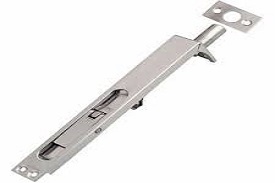 Flush Bolts
Flush BoltsIS 5187: 1972 |
To keep doors closed or secured, flush bolts are crucial hardware parts that are frequently used in double doors, closets, and cupboards. When not in use, they are intended to be flush with the surface of the door or door frame, giving the area a tidy and unnoticeable appearance. Installing flush bolts on a door's top or bottom edge enables them to easily slip into a receiver or recessed strike plate on the door frame, securely locking the door in place. |
|
| 433 |
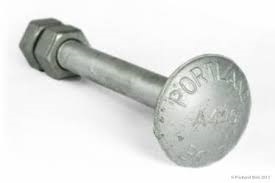 Fasteners – Threaded Steel Fastener – Step Bolts for Steel Structures
Fasteners – Threaded Steel Fastener – Step Bolts for Steel StructuresIS 10238 : 2001 |
Step bolts, sometimes referred to as threaded steel fasteners, are essential parts used in the building of steel buildings. The distinct stepped shape of these specialty bolts enables a precise and safe connection between structural components. Typically, step bolts are made of high-strength steel to support large weights and guarantee the steel framework's structural integrity. |
|
| 434 |
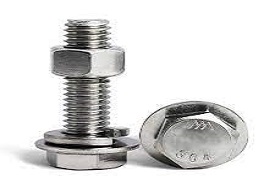 Fasteners – Threaded Steel Fasteners – Hexagon Head Transmission Tower Bolts
Fasteners – Threaded Steel Fasteners – Hexagon Head Transmission Tower BoltsIS 12427 : 2001 |
In the building and upkeep of transmission towers, threaded steel fasteners more especially, hexagon head transmission tower bolts are essential. Because of their hexagonal heads, these bolts are simple to install and remove with a wrench or socket. They are essential in maintaining the integrity of the lattice structures, braces, and other components that make up transmission towers. |
|
| 435 |
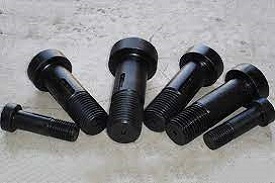 High Strength Structural Bolts
High Strength Structural BoltsIS 3757 : 1985 |
Because they are made to offer extraordinary load-bearing capacity and structural integrity, high-strength structural bolts are essential parts of engineering and building projects. Their capacity to tolerate high tensile stresses is one of their unique qualities, which makes them indispensable for joining important structural components like steel beams, columns, and trusses. By adhering to certain industry requirements, these bolts guarantee consistency and dependability in building applications. |
|
| 436 |
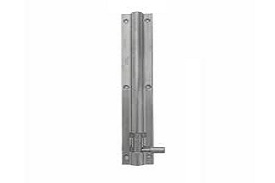 Tower Bolts- Non-ferrous metal
Tower Bolts- Non-ferrous metalIS 204 (Part 2) : 1992 |
Tower bolts have distinct benefits than their ferrous counterparts since they are usually made of non-ferrous metals like brass or aluminum. Tower bolts made of these non-ferrous materials are resistant to rust and corrosion, which makes them perfect for usage in damp locations like bathrooms and seaside regions. |
|
| 437 |
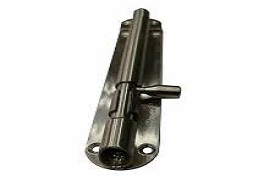 Tower Bolts- Ferrous metals
Tower Bolts- Ferrous metalsIS 204 (Part 1) : 1991 |
Tower bolts are crucial hardware parts composed of ferrous metals, such steel or iron, which are robust, long-lasting, and resistant to corrosion. These bolts are frequently utilized in a variety of settings, such as furniture assembly, carpentry, and construction. Tower bolts are made of ferrous metals, which provide them the durability needed to support large weights and guarantee enduring performance. |
|
| 438 |
-for-use-With-Padlocks-by-brand-liaison.jpg) Stainless Steel Sliding Door Bolts (Aldrops) for use With Padlocks
Stainless Steel Sliding Door Bolts (Aldrops) for use With PadlocksIS 15834 : 2022 |
Aldrops, also known as stainless steel sliding door bolts, are crucial security hardware pieces that are widely used to strengthen sliding doors, gates, and other access points. They are made to work with padlocks. Because of its remarkable strength, resilience to corrosion, and longevity, stainless steel which is especially well-suited for outdoor and high-moisture settings is used to manufacture these aldrops. |
|
| 439 |
-for-use-with-padlocks-by-brand-liaison.jpg) Non-ferrous metal sliding door bolts (aldrops) for use with padlocks
Non-ferrous metal sliding door bolts (aldrops) for use with padlocksIS 2681: 1993 |
Aldrops, or non-ferrous metal sliding door bolts, are crucial hardware pieces for bolstering the security of gates, sliding doors, and other access points. They are made to work with padlocks. Brass and aluminum, two non-ferrous metals, are used to create these aldrops. They are picked because they are long-lasting and resistant to corrosion, especially in outdoor and coastal conditions. |
|
| 440 |
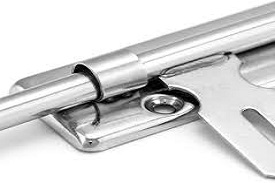 Mild steel sliding door bolts for use with padlocks
Mild steel sliding door bolts for use with padlocksIS 281 : 2009 |
Mild steel sliding door bolts for use with padlocks require ISI mark certification under IS 281: 2009. The ISI mark is a symbol of quality assurance. |
|
| 441 |
 Wrought Aluminium Alloy Bolt and Screw Stock for General Engineering purposes
Wrought Aluminium Alloy Bolt and Screw Stock for General Engineering purposesIS 1284 : 1975 |
When strong yet lightweight fasteners are needed in a variety of mechanical and technical applications, wrought aluminum alloy bolts and screw stock are utilized as specialist materials. The lightweight nature of wrought aluminum alloy bolts and screw stock, which greatly lowers the total weight of the fasteners and the assemblies in which they are used, is one of the main benefits of employing them. |
|
| 442 |
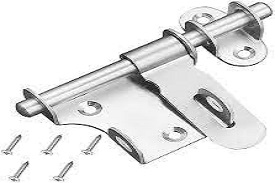 Sliding locking bolts for use with padlocks
Sliding locking bolts for use with padlocksIS 7534: 1985 |
Resilient and practical security mechanisms, sliding locking bolts made specifically for use with padlocks are frequently used to strengthen doors, gates, cabinets, and other access points. These bolts offer a dependable and adaptable locking solution thanks to their sliding mechanism, which may be engaged or disengaged with a padlock. The simplicity of use and installation of sliding locking bolts with padlocks is one of their main benefits. |
|
| 443 |
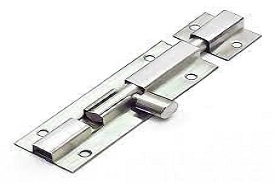 Stainless steel Tower Bolts
Stainless steel Tower BoltsIS 15833 : 2009 |
Tower bolts made of stainless steel are robust and adaptable fasteners that are frequently used in carpentry, building, and other fields requiring secure locking or latching systems. Durability is ensured by the use of stainless steel, even in humid or outdoor conditions. The resistance of stainless steel tower bolts to rust and corrosion is one of its main benefits. |
|
| 444 |
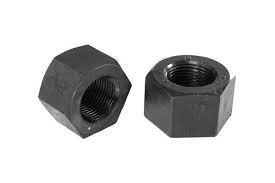 High Strength Structural Nuts
High Strength Structural NutsIS 6623 : 2004 |
Specialized fasteners known as high-strength structural nuts are essential for attaching heavy-duty structural connections and components in a variety of sectors, such as engineering, manufacturing, and construction. In crucial applications, these nuts are made to support heavy weights and offer a reliable, long-lasting connection. |
|
| 445 |
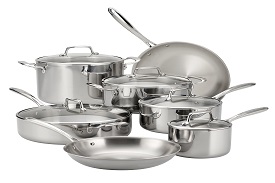 Stainless Steel Cookware
Stainless Steel CookwareIS 14756 : 2022 |
Cookware made of stainless steel is a common sight in kitchens all over the world, valued for its long-lasting beauty, adaptability, and durability. Stainless steel, an alloy renowned for its remarkable resistance to rusting, corrosion, and stains, is used to make this kind of cookware. Iron makes up the majority of stainless steel's composition, with chromium and other components added to form an oxide coating that protects the surface from food reactions and ensures long-term endurance. |
|
| 446 |
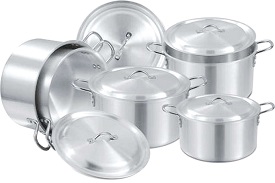 Wrought Aluminium Utensils
Wrought Aluminium UtensilsIS 1660:2009 |
Worldwide, wrought aluminum cookware is a preferred option for cooking and serving in kitchens due to its exceptional heat conductivity, lightweight nature, and longevity. The material used to make these utensils is wrought aluminum, which is strong and resistant to corrosion but yet pliable and simple to form. |
|
| 447 |
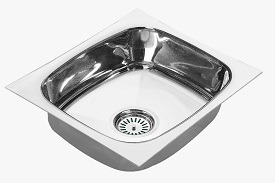 Stainless Steel Sinks for Domestic Purposes
Stainless Steel Sinks for Domestic PurposesIS 13983:1994 |
Domestic stainless steel sinks are essential components of contemporary kitchens and bathrooms, appreciated for their svelte, hygienic, and long-lasting qualities. Premium stainless steel, which is renowned for its strength, resistance to corrosion, and simplicity of maintenance, is used in the construction of these sinks. |
|
| 448 |
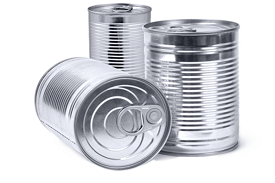 Round Open Top Sanitary Cans for Foods and Drinks – Tinplate
Round Open Top Sanitary Cans for Foods and Drinks – TinplateIS 9396 (Part 1) : 1987 |
Tinplate circular open-top sanitary cans are a popular and adaptable option for packaging a variety of food and drink items. Tin-coated steel, also referred to as tinplate, is used in the construction of these cans, providing a barrier against corrosion and guaranteeing that the contents stay fresh and safe for ingestion. |
|
| 449 |
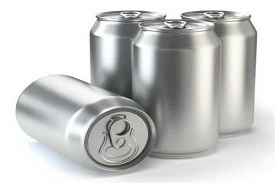 Aluminium Beverage Cans
Aluminium Beverage CansIS 14407:2023 |
Aluminum beverage cans, or just "aluminum cans," are a common and iconic container used to package a wide range of drinks, such as beer and carbonated soft drinks. Manufacturers and customers alike find these cans to be handy and sustainable because to their lightweight, strength, and capacity for recycling. |
|
| 450 |
-by-brand-liaison.png) Domestic Gas Stoves for use with Piped Natural Gas (PNG)
Domestic Gas Stoves for use with Piped Natural Gas (PNG)IS 17153:2019 |
In many homes around the world, domestic gas stoves made to run on piped natural gas (PNG) are a need. These stoves, which use natural gas as a fuel source because of its clean burning characteristics, are designed with the express purpose of offering a practical and effective way to cook. |
|
| 451 |
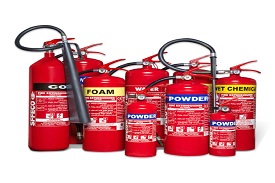 Portable Fire Extinguishers
Portable Fire ExtinguishersIS 15683:2018 |
Portable fire extinguishers are vital firefighting tools made to put out minor flames quickly and efficiently before they become larger crises. Depending on the kind of fire they are meant to put out, these small, highly agile devices are filled with specific extinguishing chemicals, dry chemical powder, foam, water, or carbon dioxide (CO2). Placed strategically in a variety of settings, such as offices, residences, businesses, and public areas, portable fire extinguishers offer quick access to a firefighting tool. |
|
| 452 |
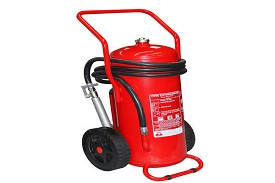 Wheeled Fire Extinguishers
Wheeled Fire ExtinguishersIS 16018:2012 |
All brands of Wheeled Fire Extinguishers are classified under IS 16018:2012 and are required to get ISI Certification before their launch or import into the Indian market. ISI Certification will be provided to the product manufacturers (whether Indian or non-Indian) only and not to traders, dealers or distributors. |
|
| 453 |
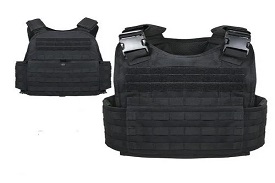 Bullet Resistant Jackets
Bullet Resistant JacketsIS 17051:2018 |
||
| Electric Ceiling Type Fans | |||
| 454 |
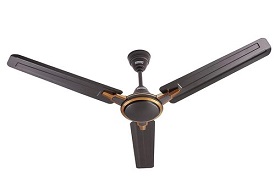 Electric Ceiling Type Fans
Electric Ceiling Type FansIS 374:2019 |
All Electric Ceiling Type Fans brands are classified under IS 374:2019 and must get ISI Certification before their launch or import into the Indian market. ISI Certification will be provided to the product manufacturers (whether Indian or non-Indian) only and not provided to traders, dealers, or distributors of the product. |
|
| Wood Based Boards | |||
| 455 |
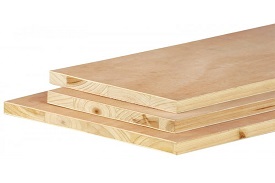 Block Boards
Block BoardsIS 1659:2004 |
Composite wood panels, also known as blockboards, are highly valued due to their remarkable structural stability and versatility in a wide range of woodworking and building applications. One of the key characteristics of blockboards is their resistance to warping and bending, which makes them ideal for applications where dimensional stability is crucial. |
|
| 456 |
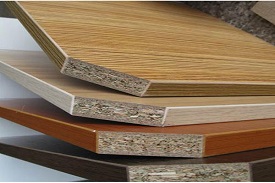 Prelaminated particle boards from wood and other Lignocellulosic material
Prelaminated particle boards from wood and other Lignocellulosic materialIS 12823:2015 |
Prelaminated particle boards are engineered wood products that combine the ease and visual appeal of pre-applied laminate surfaces with the adaptability of particle board. They are made of wood and other lignocellulosic materials. The affordability and efficacy of prelaminated particle boards is one of its main benefits. |
|
| 457 |
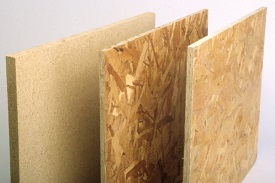 Particle boards of wood and other lignocellulosic materials (medium density) for general purpose
Particle boards of wood and other lignocellulosic materials (medium density) for general purposeIS 3087:2005 |
Medium-density particle boards are adaptable and reasonably priced engineered wood products that are extensively used for general-purpose applications in building, furniture production, and interior design. They are made of wood and other lignocellulosic components. Particle boards of a medium density are prized for their affordability, stability, and uniformity. |
|
| 458 |
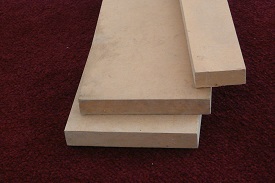 Medium density fibre boards for general purpose
Medium density fibre boards for general purposeIS 12406:2021 |
Medium-density fiberboard (MDF) is a common option for general-purpose manufacturing and construction since it is an engineered wood product with a wide variety of uses and versatility. One of MDF's main benefits is that it has a smooth surface and constant density, making it a great material for projects requiring consistency and accuracy, such interior trim, furniture, and cabinets. Additionally, MDF is very amenable to a wide range of treatments, such as paints, laminates, and veneers, enabling customisation with regard to look and style. |
|
| 459 |
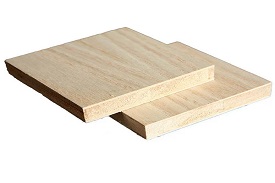 Veneered particle boards
Veneered particle boardsIS 3097:2006 |
Veneered particle boards are engineered wood products that blend the visual attractiveness of genuine wood veneer with the practicality and affordability of particle board. Adhesive resins hold the compressed wood particles, which include wood chips, shavings, and sawdust, together in the center of these boards. The core keeps the profile relatively low while offering structural strength and stability. |
|
| Cast Iron Products | |||
| 460 |
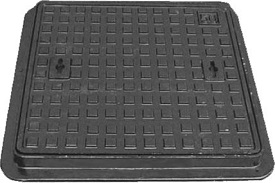 Cast iron man hole covers and frames
Cast iron man hole covers and framesIS 1726:1991 |
Because they provide access to subterranean utility networks, sewage systems, and drainage systems, cast iron manhole covers and frames are essential parts of urban infrastructure systems. Cast iron is a material of choice for these sturdy coverings and frames because of its remarkable strength, endurance, and resistance to rust and wear. |
|
| 461 |
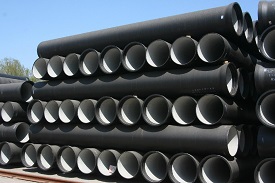 Cast iron/ductile iron drainage pipes and pipe fittings for over ground non-pressure pipelines socket and spigot series
Cast iron/ductile iron drainage pipes and pipe fittings for over ground non-pressure pipelines socket and spigot seriesIS 1729:2002 |
Essential parts of many drainage and sewage systems are cast iron and ductile iron drainage pipes and pipe fittings intended for aboveground non-pressure pipelines, especially those in socket and spigot series. In wastewater and drainage applications where exposure to moisture and aggressive chemicals is prevalent, these pipes and fittings are often manufactured from cast iron or ductile iron, both of which are noted for their durability, strength, and resistance to corrosion. |
|
| 462 |
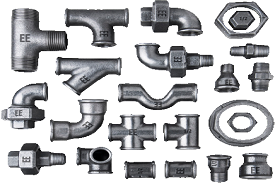 Malleable cast iron pipe fittings
Malleable cast iron pipe fittingsIS 1879:2010 |
Malleable cast iron pipe fittings are highly valued for their longevity, adaptability, and simplicity of installation; they are crucial parts of fluid transportation and plumbing systems. The strength and durability of cast iron are combined with the malleability and ductility of wrought iron to create malleable cast iron, which is used to make these fittings. |
|
| 463 |
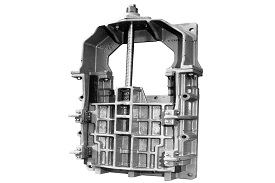 Cast iron single faced thimble mounted sluice gates
Cast iron single faced thimble mounted sluice gatesIS 13349:1992 |
Sluice gates with a single face made of cast iron and fixed on a thimble are essential parts of water management and control systems and are frequently employed in a variety of hydraulic engineering applications. The remarkable strength, longevity, and corrosion resistance of cast iron, the material used to carefully create these sluice gates, is widely recognized. |
|
| 464 |
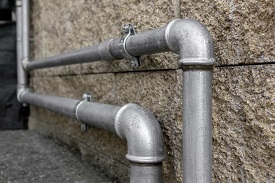 Vertically cast – iron pressure pipes for water, gas and sewage
Vertically cast – iron pressure pipes for water, gas and sewageIS 1537:1976 |
A dependable and long-lasting option for moving liquids and gases under pressure in a variety of infrastructure systems are vertical cast iron pressure pipes, which are intended for use in water, gas, and sewage applications. Melted iron is poured into molds angled vertically in a specific vertical casting process to create these pipes. |
|
| 465 |
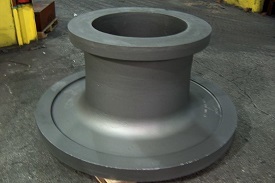 Grey iron castings
Grey iron castingsIS 210:2009 |
Among the many functional and commonly used types of cast metal components are grey iron castings. They are made by pouring molten iron into molds and letting it solidify a process known as casting. Because of the presence of graphite particles inside the iron matrix, grey iron castings get their unique gray look, thus their name. |
|
| Solar DC Cable and Fire Survival Cable | |||
| 466 |
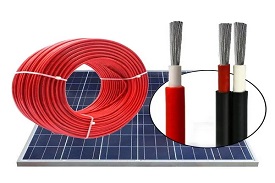 Electric Cable for Photovoltic Systems for rated voltage 1500V DC
Electric Cable for Photovoltic Systems for rated voltage 1500V DCIS 17293:2020 |
Photovoltaic (PV) system-specific electric cables with a rated voltage of 1500V DC are specialist parts that are essential to the effective and secure functioning of solar energy installations. These cables are designed to fulfill the unique needs of solar power generation, in which solar panels produce direct current (DC). These cables maximize the efficiency of energy transmission by managing the higher voltages often seen in bigger solar arrays thanks to their higher rated voltage of 1500V DC. |
|
| 467 |
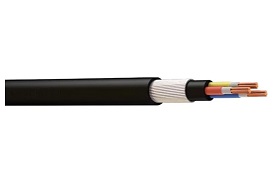 Thermosetting Insulated, Fire Survival Cables for working voltage upto and including 1100V AC and 1500V DC
Thermosetting Insulated, Fire Survival Cables for working voltage upto and including 1100V AC and 1500V DCIS 17505(Part 1): 2021 |
Thermosetting insulated fire survival cables are a specialist type of electrical cables developed for outstanding dependability and safety, especially in high-risk areas. They are designed for operating voltages up to and including 1100V AC and 1500V DC. Because the insulating materials used in the construction of these cables have undergone thermal setting or curing, they are extremely heat- and flame-resistant. |
|
| Metals and Alloys | |||
| 468 |
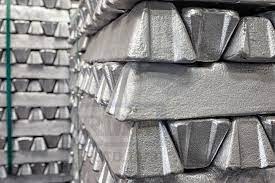 Cast aluminum and its alloys – Ingots and castings for general engineering purposes
Cast aluminum and its alloys – Ingots and castings for general engineering purposesIS 617:1994 |
A specific type of solder intended for bonding metals in a variety of applications is flux-cored solder wire. It is different from conventional solid wire solder in that it has a flux core, a chemical substance that is essential to the soldering process. Flux has several uses, including as cleaning the metal surfaces to be soldered, shielding them from oxidation, assisting with heat distribution, and lowering the solder's surface tension for better flow. |
|
| 469 |
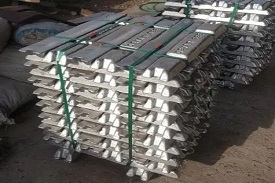 High-purity primary aluminum ingot for remelting for special applications
High-purity primary aluminum ingot for remelting for special applicationsIS 11890:1987 |
Premium-grade aluminum products with remarkable purity and regulated composition are known as high-purity primary aluminum ingots for remelting, which are intended for specific uses. These ingots are mostly utilized as raw materials in specialized sectors where the greatest degree of purity and certain alloy qualities are required. |
|
| 470 |
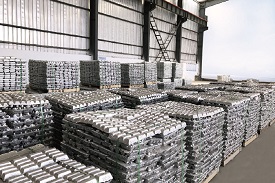 Aluminum alloy ingots for remelting for general engineering purpose
Aluminum alloy ingots for remelting for general engineering purposeIS 6754:1972 |
Specialized aluminum products known as aluminum alloy ingots for remelting are utilized as raw materials by foundries and manufacturers to create a variety of parts, components, and products for engineering applications. Usually, to produce these ingots, primary or scrap aluminum is melted and alloyed with particular elements to give the appropriate qualities for various technical applications. Because of their flexibility and adaptability, they are vital for engineering applications in a variety of sectors. |
|
| 471 |
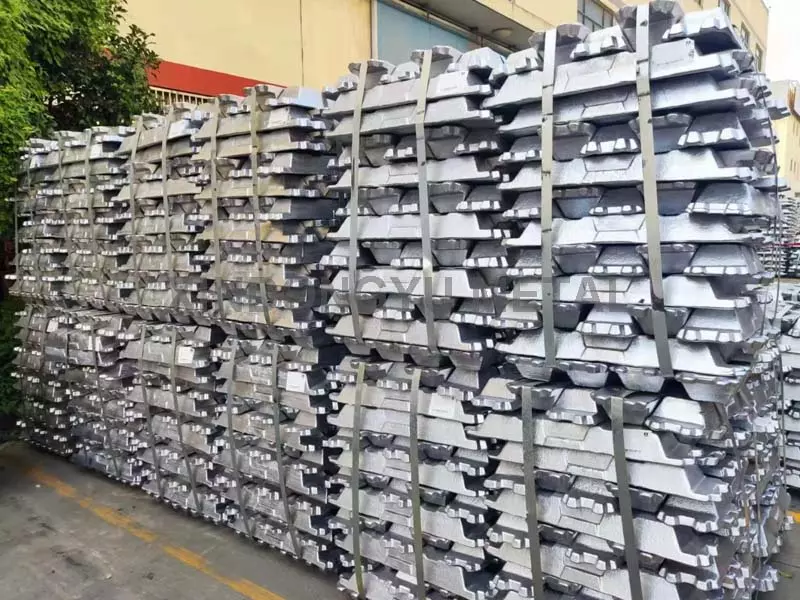 Primary aluminium ingots for remelting for general engineering purpose
Primary aluminium ingots for remelting for general engineering purposeIS 2590 : 1987 |
High-grade aluminum products made directly from bauxite ore through the primary aluminum manufacturing process are known as primary aluminum ingots for remelting, which are meant for broad engineering applications. Usually, foundries and manufacturers employ these ingots as raw materials to make a variety of aluminum products for different technical uses. With an average concentration of more than 99% aluminum, these ingots are renowned for their exceptional purity. |
|
| 472 |
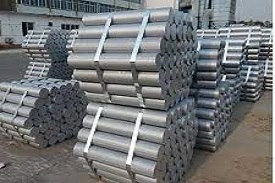 Aluminum ingots billets and wire bars (EC GRADE)
Aluminum ingots billets and wire bars (EC GRADE)IS 4026:2023 |
High-purity aluminum goods are known as aluminum ingots, billets, and wire bars, particularly of EC grade. These products are mostly utilized in the electrical sector to produce conductors, cables, and wires. These materials are ideal for situations where the least amount of electrical resistance is crucial because of their remarkable electrical conductivity and purity. |
|
| 473 |
 Copper
CopperIS 191:2007 |
In the electrical and electronics sectors, copper is commonly utilized for printed circuit boards (PCBs), wiring, cables, transformers, and motors. It is the preferred metal for electrical transmission due to its excellent conductivity. Because of its aesthetic appeal and resistance to corrosion, it is utilized in architectural features, gutters, downspouts, and roofs. |
|
| 474 |
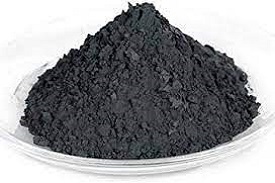 Nickel Powder
Nickel PowderIS 7506:1987 |
Tiny, distinct nickel particles make up nickel powder, which is an elemental nickel metal that has been carefully split. It is made using a variety of techniques, including as chemical reduction, atomization, and electrolysis. Because of its special qualities and adaptability, nickel powder is employed in many different sectors. |
|
| Plywood and Wooden flush door shutters | |||
| 475 |
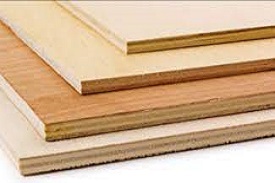 Plywood for general purposes
Plywood for general purposesIS 303:1989 |
General purpose plywood is a popular and adaptable engineered wood product that may be utilized for a variety of woodworking and building tasks. Its structure, which comprises of several layers (plies) of wood veneer bonded together with neighboring plies' grains running perpendicular to one another, is what gives it its distinctive appearance. Strongness, stability, and resistance to splitting or warping are provided by the cross-grain architecture. |
|
| 476 |
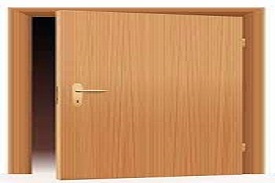 Wooden flush door shutters (solid core type) – Plywood face panels
Wooden flush door shutters (solid core type) – Plywood face panelsIS 2202 (Part-1) :1999 |
In both residential and commercial construction, plywood face panels and solid core wooden flush door shutters are frequently utilized for interior doors. These doors are renowned for their strength, adaptability, and longevity, which makes them ideal for a variety of uses. A solid core material is layered between two plywood facing panels to create solid core doors. |
|
| 477 |
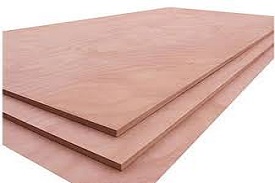 Marine plywood
Marine plywoodIS 710 : 2010 |
In order to lessen its flammability and delay the spread of fire, fire retardant plywood also referred to as fire-rated plywood or FR plywood is a specific kind of plywood that has been treated with chemicals or coatings that resist flames. In construction settings where fire safety is a top priority, it is frequently utilized. During the manufacturing process, fire-resistant chemicals or coatings are impregnated into the wood veneers or the plywood panel as a whole to create fire-resistant plywood. |
|
| 478 |
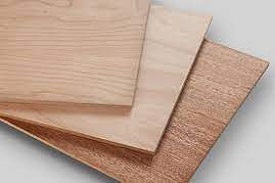 Fire retardant plywood
Fire retardant plywoodIS 5509 : 2021 |
All brands of Marine plywood are classified under IIS 5509: 2021 and are required to get ISI Certification before their launch or import into the Indian market. ISI Certification will be provided to the product manufacturers (whether Indian or non-Indian) only and not provided to traders, dealers, or distributors of the product. |
|
| 479 |
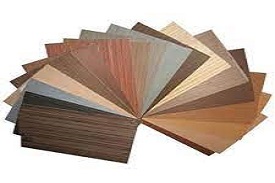 Veneered decorative plywood
Veneered decorative plywoodIS 1328:1996 |
An example of an engineered wood product is veneered decorative plywood, which combines the visual appeal of decorative veneer with the strength and stability of plywood. It is extensively utilized in areas including as interior design, architecture, cabinetry, and furniture manufacturing where both aesthetic appeal and structural integrity are crucial. The decorative veneer that is added to the plywood core's surface is the primary characteristic of veneered decorative plywood. |
|
| 480 |
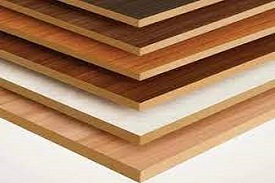 Wooden flush door shutters (cellular and hollow core type) – Particle board and hardboard face panels
Wooden flush door shutters (cellular and hollow core type) – Particle board and hardboard face panelsIS 2191 (Part 2): 2022 |
In both residential and commercial construction, wooden flush door shutters with cellular and hollow core types and particle board and hardboard face panels are frequently utilized for inside doors. These doors combine cost, strength, and usefulness in just the right amounts. These doors' main characteristic is its core construction, which can be hollow or cellular (honeycomb), with particle board or hardboard used for the face panels. |
|
| 481 |
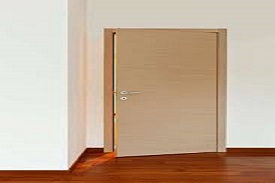 Wooden flush door shutters (cellular and hollow core type) – Plywood face panels
Wooden flush door shutters (cellular and hollow core type) – Plywood face panelsIS 2191 (Part 1): 2022 |
Within both residential and commercial construction, plywood face panels are a frequent feature of wooden flush door shutters with hollow and cellular core types. These doors combine price, strength, and style in just the right amounts. These doors' main characteristic is its core construction, which can be hollow or cellular (honeycomb), with plywood facing panels. |
|
| 482 |
 – Particle board and hardboard face panels.jpg) Wooden Flush Door Shutters (Solid core type) – Particle board, High Density Fibre Board, Medium Density Fibre Board and Fibre Hardboard Face Panels
Wooden Flush Door Shutters (Solid core type) – Particle board, High Density Fibre Board, Medium Density Fibre Board and Fibre Hardboard Face PanelsIS 2202 (Part 2): 2022 |
Because of its robustness, attractiveness, and adaptability, solid-core wooden flush door shutters are frequently utilized in both residential and commercial structures. The solid core material of these door shutters is encased between facing panels. Particle board, High-Density Fiberboard (HDF), Medium-Density Fiberboard (MDF), and fiber hardboard are a few examples of core materials that are customizable. |
|
| 483 |
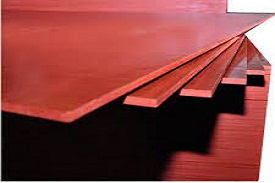 Plywood for concrete shuttering works – Specification
Plywood for concrete shuttering works – SpecificationIS 4990 : 2011 |
All brands of Plywood for concrete shuttering works – Specification are classified under IS 4990: 2011 and are required to get ISI Certification before their launch or import into the Indian market. ISI Certification will be provided to the product manufacturers (whether Indian or non-Indian) only and not provided to traders, dealers, or distributors of the product. |
|
| 484 |
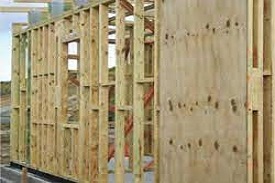 Structural plywood – Specification
Structural plywood – SpecificationIS 10701 : 2012 |
All brands of Structural plywood – Specification are classified under IS 10701: 2012 and are required to get ISI Certification before their launch or import into the Indian market. ISI Certification will be provided to the product manufacturers (whether Indian or non-Indian) only and not provided to traders, dealers, or distributors of the product. |
|
| Flux Cored Solder Wire | |||
| 485 |
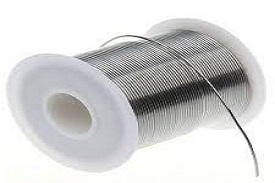 Flux Cored Solder Wire
Flux Cored Solder WireIS 1921: 2005 |
All brands of Flux Cored Solder Wire are classified under IS 1921: 2005 and are required to get ISI Certification before their launch or import into the Indian market. ISI Certification will be provided to the product manufacturers (whether Indian or non-Indian) only and not provided to traders, dealers, or distributors of the product. |
|
| Miscellaneous Steel Products | |||
| 486 |
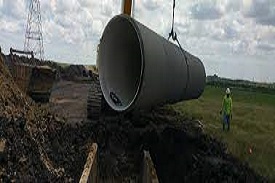 Bar or wire Wrapped Steel Cylinder Pipes with Mortar Lining and Coating Including Specials
Bar or wire Wrapped Steel Cylinder Pipes with Mortar Lining and Coating Including SpecialsIS 15155 : 2020 |
Bar or wire Wrapped Steel Cylinder Pipes with Mortar Lining and Coating Including Specials have been included in the mandatory ISI Certification Scheme under IS 15155: 2020. This product cannot be exported/imported or sold in the Indian consumer market without an ISI Mark imprinted. |
|
| 487 |
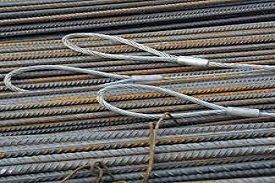 High Strength deformed stainless steel bars and wires for concrete reinforcement
High Strength deformed stainless steel bars and wires for concrete reinforcementIS 16651 : 2017 |
High-strength deformed stainless steel wires and bars are crucial building materials for a variety of construction and infrastructure projects. By enhancing concrete structures' strength, longevity, and safety, its use promotes creative design and lessens the negative effects of construction on the environment. These supplies are essential for building durable, robust, and sustainable infrastructure that satisfies the requirements of contemporary building initiatives. |
|
| 488 |
 Steel Pipe Flanges
Steel Pipe FlangesIS 6392 : 2020 |
Steel pipe flanges are essential parts of many sectors, such as manufacturing, construction, and oil & gas. Within a plumbing network, these flanges are intended to connect, terminate, or support pipes, valves, and other equipment. They guarantee safe and leak-free connections, can withstand high temperatures and pressures, and are adaptable enough to suit a variety of uses. |
|
| 489 |
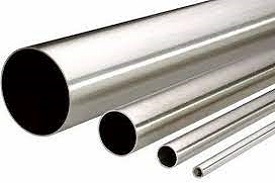 Stainless steel tubes for the food and beverage industry
Stainless steel tubes for the food and beverage industryIS 6913:1973 |
Stainless steel tubes are vital elements in several sectors and applications because of their resilience to rust, robustness, and adaptability. These tubes are essential to the development of contemporary infrastructure, industry, and building. Because of these qualities, they can be used in situations where hygienic practices, strength, and environmental concerns are crucial. |
|
| Aluminium and Aluminium Alloy Products | |||
| 490 |
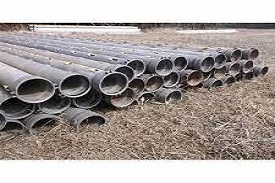 Aluminium alloy tubes for irrigation purposes -welded tubes
Aluminium alloy tubes for irrigation purposes -welded tubesIS 7092 (Part 1):1992 |
Aluminium alloy tubes for irrigation purposes -welded tubes have been included in the mandatory ISI Certification Scheme under IS 7092 (Part 1):1992. This product cannot be exported/imported or sold in the Indian consumer market without an ISI Mark imprinted. |
|
| 491 |
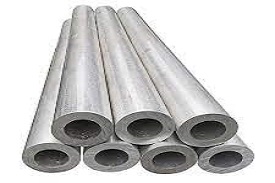 Aluminium alloy tube for irrigation purposes – extruded tube
Aluminium alloy tube for irrigation purposes – extruded tubeIS 7092 (Part 2):1987 |
Aluminium alloy tube for irrigation purposes – extruded tube tubes have been included in the mandatory ISI Certification Scheme under IS 7092 (Part 2):1987. This product cannot be exported/imported or sold in the Indian consumer market without ISI Mark imprinted. |
|
| 492 |
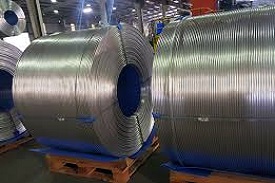 EC Grade Aluminium Rod produced by Continuous Casting and Rolling
EC Grade Aluminium Rod produced by Continuous Casting and RollingIS 5484:1997 |
High-purity, high-conductivity aluminum rod known as "EC" (electrical conductivity) grade is mostly utilized in the electronics and electrical sectors. Strict industry standards are followed during manufacturing to guarantee that it satisfies the unique electrical performance requirements needed for a range of applications. |
|
| 493 |
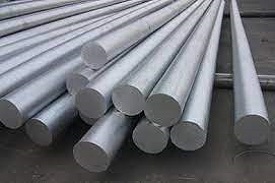 Wrought aluminium and aluminium alloy bars, rods and sections (For General Engineering Purposes)
Wrought aluminium and aluminium alloy bars, rods and sections (For General Engineering Purposes)IS 733:1983 |
Wrought aluminium and aluminium alloy bars, rods, and sections (For General Engineering Purposes) have been included in the mandatory ISI Certification Scheme under IS 733:1983. This product cannot be exported/imported or sold in Indian consumer market without ISI Mark imprinted. |
|
| 494 |
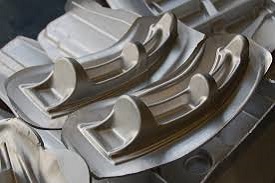 Wrought aluminium and aluminium alloys, forging stock and forgings for general engineering purposes
Wrought aluminium and aluminium alloys, forging stock and forgings for general engineering purposesIS 734:1975 |
Forging stock, forgings, and wrought aluminum and its alloys are essential parts of the metalworking sector. They are appropriate for a variety of industries due to their adaptability, strength, mechanical qualities, and resistance to corrosion. They are essential for producing high-quality aluminum components with strength and dependability for a variety of technical applications, and that can endure the demands of different industries. |
|
| 495 |
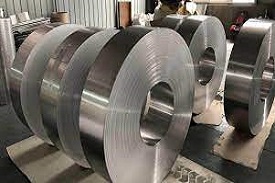 Wrought aluminium and aluminium alloy plate for general engineering purposes
Wrought aluminium and aluminium alloy plate for general engineering purposesIS 736:1986 |
Flat, rectangular pieces of wrought aluminum or its alloys are called wrought aluminum and aluminum alloy plates. To get the appropriate dimensions and characteristics, these plates go through mechanical working techniques including hot rolling, cold rolling, and others. Because they combine strength, corrosion resistance, lightweight, and other desirable qualities, they are a versatile material that advances engineering and technology in a variety of fields. |
|
| 496 |
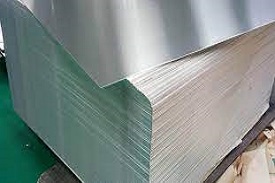 Wrought aluminium and aluminium alloy sheet and strip for general engineering purposes
Wrought aluminium and aluminium alloy sheet and strip for general engineering purposesIS 737:2008 |
Modern engineering and industry heavily rely on sheets and strips made of wrought aluminum and aluminum alloys. They are employed in many different sectors, including as electronics, automotive, aerospace, and construction. Their significance stems from their capacity to address the various requirements of different sectors, fostering creativity, effectiveness, and sustainability in engineering and production procedures. |
|
| 497 |
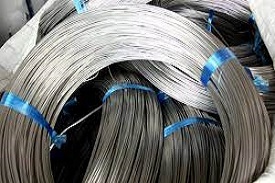 Wrought aluminium and aluminium alloy wire for general engineering purposes
Wrought aluminium and aluminium alloy wire for general engineering purposesIS 739:1992 |
Wrought aluminium and aluminium alloy wire for general engineering purposes has been included in the mandatory ISI Certification Scheme under IS 739:1992. This product cannot be exported/imported or sold in the Indian consumer market without ISI Mark imprinted. |
|
| 498 |
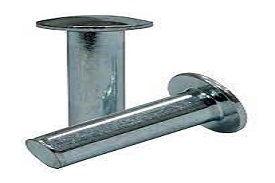 Wrought aluminium and aluminium alloy rivet stock for general engineering purposes
Wrought aluminium and aluminium alloy rivet stock for general engineering purposesIS 740:1977 |
Because of its superior mechanical qualities, corrosion resistance, lightweight nature, and adaptability, wrought aluminum and aluminum alloy rivet stocks are valuable in general engineering. Because of these qualities, it is the material of choice for many applications, including as building, manufacturing, and fastening. The robustness, longevity, and general performance of designed systems and structures in a variety of sectors are enhanced by aluminum rivets. |
|
| 499 |
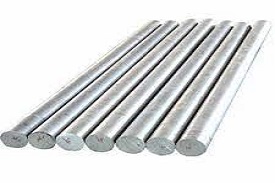 Wrought aluminium and aluminium alloy bars, rods, tubes, sections, plates and sheets for electrical applications
Wrought aluminium and aluminium alloy bars, rods, tubes, sections, plates and sheets for electrical applicationsIS 5082:1998 |
Wrought aluminium and aluminium alloy bars, rods, tubes, sections, plates, and sheets for electrical applications have been included in the mandatory ISI Certification Scheme under IS 5082:1998. This product cannot be exported/imported or sold in the Indian consumer market without ISI Mark imprinted. |
|
| 500 |
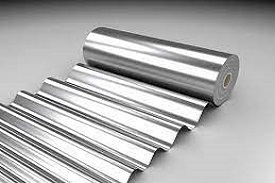 Aluminium and aluminium alloy foil for pharmaceutical packaging
Aluminium and aluminium alloy foil for pharmaceutical packagingIS 16011:2012 |
Because they are easy to fabricate and can be recycled, wrought aluminum and aluminum alloy bars, rods, tubes, sections, plates, and sheets are highly useful materials in engineering and other sectors. |
|
| 501 |
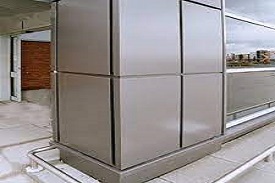 Aluminium composite panel
Aluminium composite panelIS 17682:2021 |
Flat panels known as aluminum composite panels (ACPs) are made of two thin aluminum sheets bonded together with a non-aluminum core. Because of their aesthetic appeal and adaptability, these panels are frequently employed in the construction sector, especially in architectural applications. |
|
| 502 |
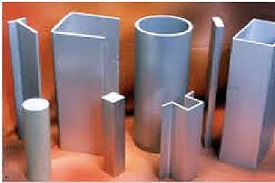 Wrought aluminium and aluminium alloys- Extruded round tube and hollow sections for general engineering purposes
Wrought aluminium and aluminium alloys- Extruded round tube and hollow sections for general engineering purposesIS 1285:2002 |
Extruded round tubes and hollow sections, also known as wrought aluminum and aluminum alloys, are metals and their alloys that have been mechanically formed and manipulated by the extrusion process. During this process, aluminum or its alloys are forced through a die to form different hollow profiles and cylindrical tubes. |
|
| 503 |
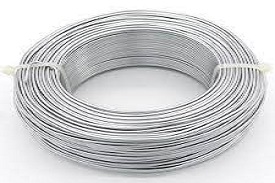 Wrought Aluminium Wire for Electrical Purposes
Wrought Aluminium Wire for Electrical PurposesIS 2067:1975 |
Wrought Aluminium Wire for Electrical Purposes has been included in the mandatory ISI Certification Scheme under IS 2067:1975. This product cannot be exported/imported or sold in the Indian consumer market without ISI Mark imprinted. |
|
| 504 |
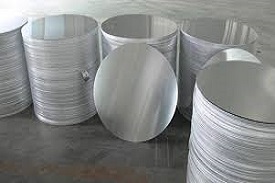 Wrought aluminium and aluminium alloys for manufacture of utensils
Wrought aluminium and aluminium alloys for manufacture of utensilsIS 21:1992 |
Because of their lightweight, electrical conductivity, resistance to corrosion, and recyclability, wrought aluminum and aluminum alloys are highly adaptable materials that are essential to many different industries. These materials are produced by means of mechanical operations like drawing, extrusion, forging, and rolling. They support technical innovation, energy efficiency, and sustainability in a number of fields. Because of their special mix of qualities, they are essential to contemporary engineering and industrial procedures. |
|
| 505 |
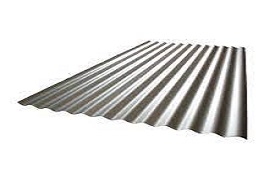 Corrugated Aluminium Sheet
Corrugated Aluminium SheetIS 1254:2007 |
An aluminum sheet or plate with a pattern of parallel ridges, or corrugations, on its surface is called a corrugated aluminum sheet. The corrugations contribute strength and stiffness to the sheet and are usually characterized by a wavy pattern. Corrugated aluminum sheets are used in a variety of sectors and applications due to their many advantages, which include weather resistance, durability, and adaptability. |
|
| 506 |
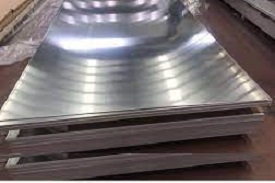 Aluminium alloy forging stock and forgings (Alloy 24345) for aerospace applications
Aluminium alloy forging stock and forgings (Alloy 24345) for aerospace applicationsIS 7902:2001 |
Forging stock and forgings made of aluminum alloy are essential in sectors requiring materials that are strong, lightweight, and long-lasting. Aluminum alloys' mechanical qualities are improved by forging, which makes them ideal for a variety of uses, including industrial machinery and aircraft parts. They make it possible for the aerospace sector to create high-performing, safe, and effective airplanes and spacecraft. |
|
| 507 |
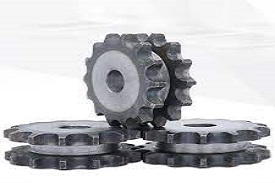 Short – Pitch Transmission Precision Roller and Bush Chains, Attachments and Associated Chain Sprockets
Short – Pitch Transmission Precision Roller and Bush Chains, Attachments and Associated Chain SprocketsIS 2403 :2014 / ISO 606 : 2004 |
Precision roller and bush chains for short-pitch transmissions, as well as the chain sprockets that go with them, are vital parts of many mechanical systems. The precise design of these precision chains guarantees dependable power transfer and seamless operation. While chain sprockets work with the chains to efficiently convey power, attachments are added to give further functionality. |
|
| Self- Contained Drinking Water Coolers | |||
| 508 |
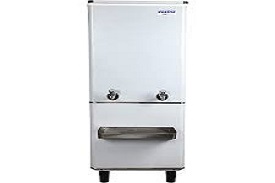 Self-Contained Drinking Water Coolers – Energy Consumption and Performance
Self-Contained Drinking Water Coolers – Energy Consumption and PerformanceIS 1475 (Part 1) : 2001 |
Specialized water distribution devices called self-contained drinking water coolers are made to offer clean, cold, and occasionally hot drinking water. These refrigerators are frequently seen in a variety of locations, including as public areas, workplaces, residences, and schools. |
|
| Medical Textiles | |||
| 509 |
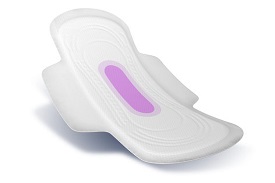 Sanitary napkins
Sanitary napkinsIS 5405 : 2019 |
Menstrual pads, often referred to as sanitary napkins or sanitary pads, are absorbent goods intended mainly for use by women to control the flow of their menstruation. In order to absorb menstrual blood and keep the user feeling dry and comfortable during their menstrual cycle, these items are worn inside underwear. |
|
| 510 |
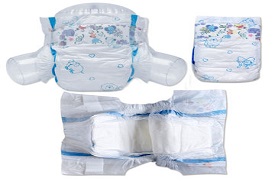 Disposable baby diaper
Disposable baby diaperIS 17509 : 2021 |
Diapers made specifically for newborns and toddlers are called disposable baby diapers. These diapers are composed of many materials, one of which is an absorbent core that can hold a lot of fluids. This core is frequently composed of superabsorbent polymers. While the outside layer is usually composed of a waterproof material to avoid leaks, the inside layer is soft and comfy. |
|
| 511 |
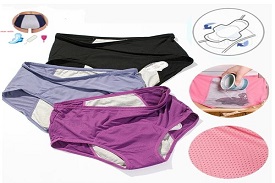 Reusable Sanitary pad/ Sanitary Napkin/ Period Panties
Reusable Sanitary pad/ Sanitary Napkin/ Period PantiesIS 17514 : 2021 |
Period panties, reusable sanitary pads, and sanitary napkins are eco-friendly substitutes for single-use menstruation items. They are crucial for encouraging menstrual health, cutting waste, and enabling people to make decisions that are kind to the environment. They are excellent choices for people searching for an easy and sustainable method of controlling their period because of their comfort, gentleness, and favorable effects on menstrual hygiene. |
|
| 512 |
 Shoe covers
Shoe coversIS 17349 : 2020 |
Shoe covers are made to be worn over conventional shoes or footwear. They may be thrown away or reused. Most of them are disposable for one-time use and are usually made to be simple to put on and take off. The protective function of the shoe cover extends the life of shoes, maintaining their visual appeal, and strengthening the resilience of pricey shoes. |
|
| 513 |
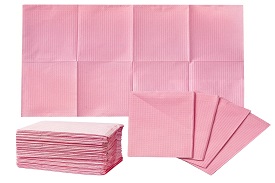 Dental Bib or Napkins
Dental Bib or NapkinsIS 17354 : 2020 |
Dental bibs, sometimes called dental napkins, are sterile, absorbent sheets that are used in dental offices or clinics to keep patients clean and hygienic while receiving dental work done. Usually made of a blend of paper and plastic layers, these bibs provide a waterproof barrier in addition to absorbency. They can bring some visual appeal to the dental environment because they come in a variety of colors and designs. |
|
| 514 |
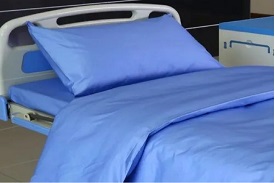 Bed sheet and Pillow Cover
Bed sheet and Pillow CoverIS 17630 : 2021 |
In addition to being crucial parts of bedding, bed sheets also contribute significantly to a bed's comfort, protection, and visual appeal. They serve as a comfortable resting surface, safeguard the mattress, and improve the general quality of sleep. |
|
| Agro Textiles | |||
| 515 |
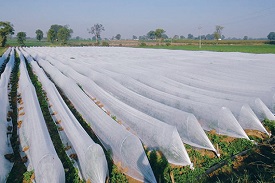 Polypropylene Spun Bonded Non—Woven Crop Cover and Fruit Skirting Bags for Agriculture and Horticulture Applications
Polypropylene Spun Bonded Non—Woven Crop Cover and Fruit Skirting Bags for Agriculture and Horticulture ApplicationsIS 16718 : 2021 |
Polypropylene Spun Bonded Non—Woven Crop Cover and Fruit Skirting Bags for Agriculture and Horticulture Applications have been included in the mandatory ISI Certification Scheme under IS 16718: 2021. This product cannot be exported/imported or sold in the Indian consumer market without ISI Mark imprinted. |
|
| 516 |
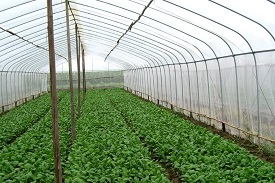 Insect nets for Agriculture and Horticulture purpose
Insect nets for Agriculture and Horticulture purposeIS 16513:2016 |
Insect nets for Agriculture and Horticulture purpose has been included in the mandatory ISI Certification Scheme under IS 16513: 2016. This product cannot be exported/imported or sold in the Indian consumer market without ISI Mark imprinted. |
|
| 517 |
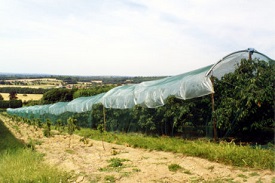 Jute Agro textiles for Growth of Plants and Suppression of Weeds
Jute Agro textiles for Growth of Plants and Suppression of WeedsIS 17070 : 2019 |
Jute fibers, which come from the jute plant (Corchorus spp.), are used to make jute agro textiles, which are biodegradable and environmentally benign products. They are available in a variety of forms, such as jute mulch, jute nets, and jute geotextiles. A natural and sustainable substitute for synthetic materials used in agriculture are jute agro textiles. |
|
| 518 |
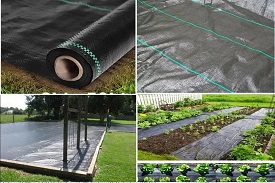 Woven Ground covers for Horticulture Application
Woven Ground covers for Horticulture ApplicationIS 16202 : 2014 |
Permeable and long-lasting, woven ground coverings have several uses in gardening, landscaping, and agriculture. These coverings are intended to be placed directly on the ground to fulfill certain functions. They are constructed from woven synthetic fabrics, such as polypropylene. |
|
| 519 |
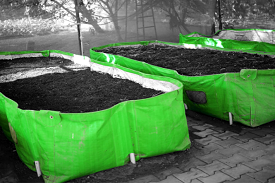 High Density Polyethylene (HDPE) woven beds for vermiculture
High Density Polyethylene (HDPE) woven beds for vermicultureIS 15907:2010 |
Bedding and sleeping surfaces composed of woven materials manufactured of high density polyethylene (HDPE), a form of thermoplastic polymer, are referred to as HDPE woven beds. These beds are well-known for their robustness, resilience to environmental elements, and versatility in design. They are frequently utilized in untamed and outdoor settings where standard bedding might not be appropriate because of weather exposure. |
|
| 520 |
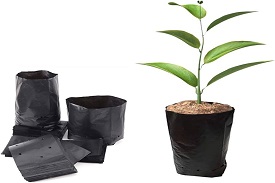 Sapling bags for growth of seedling /sapling
Sapling bags for growth of seedling /saplingIS 16089:2013 |
Specialized containers called sapling bags are used to transplant small seedlings or saplings. For nurseries, horticulturists, foresters, and gardeners who work with young plants, these bags are a need. They ensure that new plants are established and thrive successfully, enabling them to develop from seedlings into robust, adult trees or shrubs. |
|
| 521 |
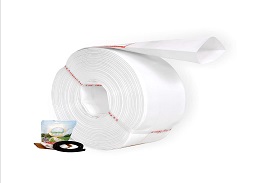 High Density Polyethylene (HDPE) laminated woven lay flat tube for irrigation purpose
High Density Polyethylene (HDPE) laminated woven lay flat tube for irrigation purposeIS 16190 : 2014 |
Specialized tubular materials known as laminated weave lay flat tubes made of high density polyethylene (HDPE) are employed in a wide range of industrial, construction, and agricultural applications. The HDPE plastic used to make these tubes is renowned for its strength and durability. Woven fabric is used to strengthen the tubes to increase their resistance. |
|
| 522 |
 Nylon Knitted seamless gloves for tobacco harvesters
Nylon Knitted seamless gloves for tobacco harvestersIS 16390 : 2015 |
Seamless nylon knit gloves are a kind of protective handwear with a snug, pleasant fit since the nylon fabric is knitted without seams. To protect hands and maintain dexterity while working in tobacco fields, these gloves are designed with tobacco harvesters in mind. They are comfortable and flexible, which makes them appropriate for the activities associated with tobacco leaf harvesting. |
|
| 523 |
 laminated woven lay flat tube for use in mains and submains of drip irrigation system.jpg) High density polyethylene (HDPE) laminated woven lay flat tube for use in mains and submains of drip irrigation system
High density polyethylene (HDPE) laminated woven lay flat tube for use in mains and submains of drip irrigation systemIS 16627:2017 |
A specific kind of irrigation tubing intended for effective water distribution in agricultural and horticultural contexts is the high density polyethylene (HDPE) laminated weave lie flat tube. The woven fabric used to make these tubes is comprised of HDPE, a material renowned for its resilience to weather conditions and longevity. |
|
| 524 |
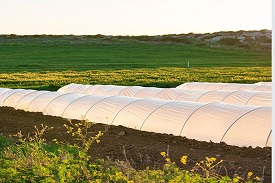 Propylene Spun bonded non—woven mulch mat for agriculture and horticulture applications
Propylene Spun bonded non—woven mulch mat for agriculture and horticulture applicationsIS 17355:2020 |
High-density polyethylene (HDPE) laminated woven lay flat tube for use in mains and sub mains of drip irrigation systems has been included in the mandatory ISI Certification Scheme under IS 16627: 2017. This product cannot be exported/imported or sold in the Indian consumer market without ISI Mark imprinted. |
|
| 525 |
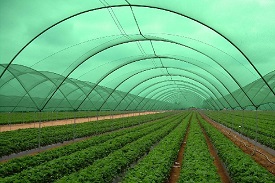 Windshield nets for agriculture and horticulture purpose
Windshield nets for agriculture and horticulture purposeIS 17356 : 2020 |
Windshield nets, often referred to as windbreak nets or windscreen nets, are protective screens composed of mesh cloth, nylon, or polyethylene. These nets are easy to install and have UV stabilizers built in for long-lasting durability. Windshield nets are designed primarily to protect plants, crops, and young trees from strong winds. |
|
| 526 |
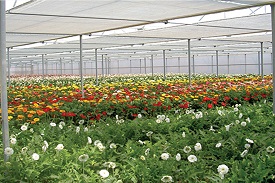 Harvest nets for agriculture and horticulture purposes
Harvest nets for agriculture and horticulture purposesIS 17357 : 2020 |
Specialized nets called harvest nets are used in horticulture and agriculture to make it easier to harvest fruits, vegetables, and other crops. These nets are made to help with the effective and sanitary harvesting of crops, shielding the produce from pests and damage while also helping to maintain the quality of the land and crops. |
|
| 527 |
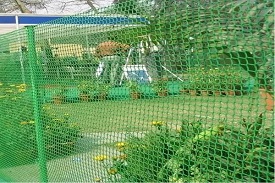 Fencing nets for agriculture and horticulture purposes – made from extruded polymer mesh
Fencing nets for agriculture and horticulture purposes – made from extruded polymer meshIS 17358 (Part 1) : 2020 |
Because of its composition and design, extruded polymer mesh fencing nets are one kind of fence material that has several benefits. To develop a strong and adaptable mesh structure, polymer materials like polyethylene or polypropylene are extruded throughout the manufacturing process to make these nets. They are made to be resilient, resistant to UV rays, and suitable for outdoor use. |
|
| 528 |
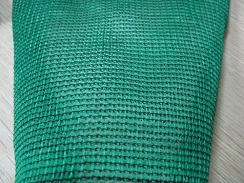 Fencing nets for agriculture and horticulture purposes -made from mono filament yarns and combination of tape and mono filament yarns
Fencing nets for agriculture and horticulture purposes -made from mono filament yarns and combination of tape and mono filament yarnsIS 17358 (Part 2) : 2020 |
In agriculture and horticulture, fencing nets composed of a blend of tape strips and monofilament yarns provide a comprehensive solution for a range of uses, enhancing crop protection, sustainability, and production. They are essential to contemporary farming methods because of their strength and flexibility. |
|
| 529 |
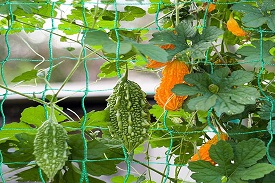 Plant Support Nets for Agriculture and Horticulture Purposes
Plant Support Nets for Agriculture and Horticulture PurposesIS 17513 : 2020 |
A kind of netting or trellis system called a plant support net is intended to sustain young plants throughout their early growth phases. It is made of UV-resistant HDPE material and is not impacted by the outside environment. |
|
| 530 |
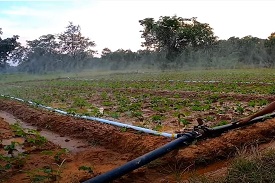 High Density Polyethylene (HDPE) Laminated Woven Lay Flat Tube and Fittings for use in Rain Irrigation System
High Density Polyethylene (HDPE) Laminated Woven Lay Flat Tube and Fittings for use in Rain Irrigation SystemIS 17728 : 2021 |
In order to efficiently distribute water to crops and plants, flexible, long-lasting tubes are combined with a variety of specialized components or fittings, such as HDPE laminated weave lay flat tubes and fittings. With the help of this technology, crops and plants are guaranteed to get the water they require for strong development and maximum harvests. |
|
| 531 |
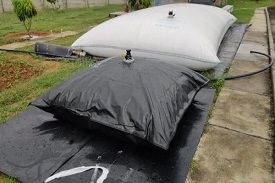 Flexible Water Storage Tank for Agriculture and Horticulture Purposes
Flexible Water Storage Tank for Agriculture and Horticulture PurposesIS 17729 : 2021 |
A lightweight, collapsible, and simple-to-install option for short-term or semi-permanent water storage is a flexible water storage tank. These tanks are adaptable and simple to move because they are composed of sturdy, flexible materials that can expand and contract in response to changes in water volume. |
|
| 532 |
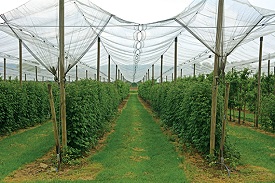 Hail Protection Nets for Agriculture and Horticulture Purposes- Warp Knitted Hail Protection Nets
Hail Protection Nets for Agriculture and Horticulture Purposes- Warp Knitted Hail Protection NetsIS 17730 (Part 1) : 2021 |
Specialized protective barriers called warp knitted hail protection nets are used in horticulture and agriculture to protect plants and crops against hailstorm damage. The warp knitting method used to create these nets produces a robust and long-lasting mesh structure that effectively blocks hail. Because of their adaptability and efficiency, they are a great advantage to farmers, protecting the health and yield of plants and crops in areas where hailstorms are common. |
|
| 533 |
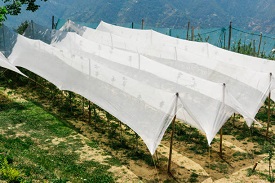 Hail Protection Nets for Agriculture and Horticulture Purposes – Woven Hail Protection Nets
Hail Protection Nets for Agriculture and Horticulture Purposes – Woven Hail Protection NetsIS 17730 (Part 2) : 2021 |
Essential equipment for horticulture and agriculture, woven hail protection nets safeguard plants and crops from the potentially destructive effects of hailstorms. These nets, which are made of strong, UV-stabilized materials, provide a number of advantages for growers in both industries. In areas where hailstorms are common, woven hail protection nets are essential for maintaining the health, quality, and economic viability of crops and plants. |
|
| 534 |
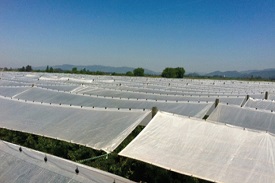 Laminated Woven Orchard Protection Covers
Laminated Woven Orchard Protection CoversIS 17731 : 2021 |
Specialized agricultural textiles called laminated woven orchard protection coverings are used to shield fruit trees and orchards from a variety of weather elements, including frost, wind, and pests. Fruit-bearing trees can benefit from these coverings, which are manufactured by laminating several materials to provide a strong and reliable barrier of protection. |
|
| Copper Products | |||
| 535 |
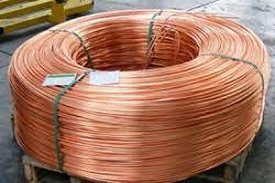 Copper Wire Rods for Electrical Applications
Copper Wire Rods for Electrical ApplicationsIS 12444:2020 |
Long, cylindrical lengths of copper metal with a circular cross-section are called copper wire rods. Usually, copper is continually rolled and cast into the appropriate rod shape during the manufacturing process. Copper's outstanding electrical and thermal conductivity, among other desired features, make copper wire rods an ideal raw material for a variety of applications. They come in a variety of sizes and grades to suit different requirements. |
|
| 536 |
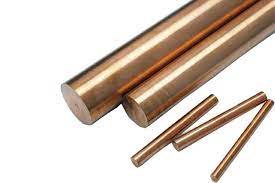 Copper Rods and Bars for Electrical Purposes
Copper Rods and Bars for Electrical PurposesIS 613:2000 |
Solid, elongated chunks of copper metal, known as rods and bars, are usually made by rolling, extrusion, or casting. The superior electrical, thermal, and corrosion resistance of these copper goods make them highly appreciated. |
|
| 537 |
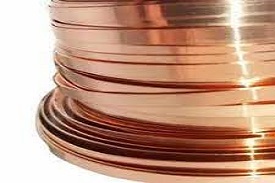 Copper strip for electrical purposes
Copper strip for electrical purposesIS 1897:2008 |
A flat, extended sheet of copper, usually rectangular in shape, is called a copper strip. To get the appropriate size, these strips are usually made by rolling or slitting copper sheets or coils. Their exceptional heat conductivity, corrosion resistance, electrical conductivity, and malleability make them highly desired. |
|
| 538 |
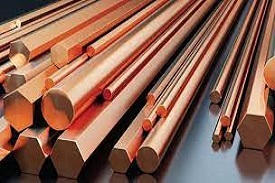 Copper rods and bars for general engineering purposes
Copper rods and bars for general engineering purposesIS 4171:1983 |
Copper is a very conductive and adaptable metal that is commonly used to create solid, elongated copper rods and bars. The outstanding thermal conductivity, corrosion resistance, and electrical conductivity of these rods and bars are well recognized. To accommodate a variety of uses, they are available in round, square, rectangular, and hexagonal forms. |
|
| 539 |
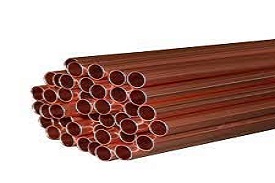 Solid drawn copper and copper alloy tubes for condensers and heat exchangers
Solid drawn copper and copper alloy tubes for condensers and heat exchangersIS 1545: 1994 |
Solid drawn copper and copper alloy tubes are cylindrical metal tubes that are created using the solid drawing manufacturing technique. The materials that make up these tubes can range from pure copper to different copper alloys. In order to generate seamless tubes, this manufacturing process includes pulling a billet of solid copper or copper alloy through a die. |
|
| 540 |
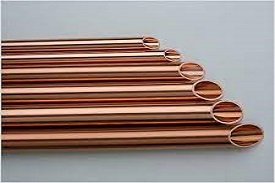 Solid drawn copper tubes for general engineering purposes
Solid drawn copper tubes for general engineering purposesIS 2501:1995 |
Specialized cylindrical metal tubes known as solid drawn copper tubes are created from pure copper and are usually produced via the use of the solid drawing method. Using a die, a copper billet or ingot is pulled through to produce seamless tubes with exact measurements and consistent wall thickness. |
|
| 541 |
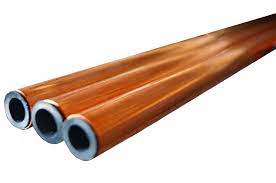 Copper Tubes for plumbing- Specification
Copper Tubes for plumbing- SpecificationIS 14810:2000 |
Copper tubes are metal tubes that are cylindrical in shape and composed of copper, a material that is widely used and adaptable due to its superior electrical and thermal conductivity, durability, and resistance to corrosion. It is incredibly durable and produces a biostatic environment that prevents germs from growing in it. |
|
| 542 |
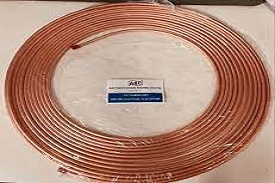 Wrought Copper Tubes for Refrigeration and Air- Conditioning Purpose
Wrought Copper Tubes for Refrigeration and Air- Conditioning PurposeIS 10773:1995 |
Copper tubes that have undergone mechanical shaping and formation are referred to as wrought copper tubes. The strong thermal and electrical conductivity, corrosion resistance, and malleability of copper make these tubes, which are usually composed of copper alloys, useful in a variety of applications. |
|
| 543 |
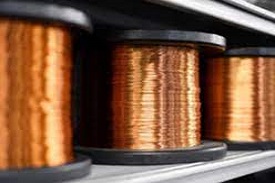 Copper wires for general engineering purposes
Copper wires for general engineering purposesIS 4412:1981 |
Electrical cables composed mainly of copper metal are called copper wires. They form the foundation of electrical systems and are essential for powering anything from tiny electronic devices to massive industrial machinery. |
|
| Drums and Tins | |||
| 544 |
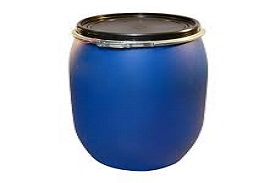 Drums, Large Open Top
Drums, Large Open TopIS 13997:2014 |
Large cylindrical jars or containers with an open top that are used for storing or moving a variety of commodities are commonly referred to as "drums with open tops." These drums are distinguished by their open design, which makes accessing the contents simple. Depending on the particular use, they are manufactured of different materials like steel, plastic, or fiberboard and available in a variety of sizes. |
|
| 545 |
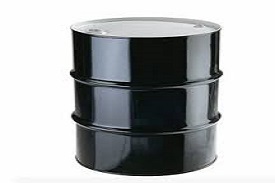 Drums Large, Fixed Ends – Grade A
Drums Large, Fixed Ends – Grade AIS 1783 (Part 1) :2014 |
Industrial steel containers with big, fixed ends are called steel drums, and they usually have closed or permanently sealed ends. In industrial settings, these barrels are frequently used for handling, storing, and transporting a variety of goods and commodities. They are a good fit for a variety of industrial operations because of their sturdy design and material compatibility. |
|
| 546 |
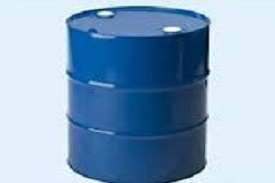 Drums, Large, Fixed Ends – Grade B
Drums, Large, Fixed Ends – Grade BIS 1783 (Part 2) :2014 |
big, fixed-end mild steel drums are a particular kind of industrial container or drum that is made of mild steel, has a fixed or permanently sealed end, and is big in size. These barrels are essential to many businesses because they offer safe options for material transportation and storage. The use of mild steel as the building material guarantees adaptability and longevity for a variety of uses. |
|
| 547 |
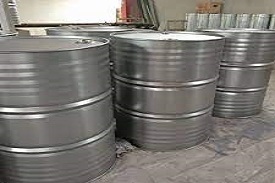 Steel Drums (Galvanized and Ungalvanized)
Steel Drums (Galvanized and Ungalvanized)IS 2552:1989 |
Steel drums, often referred to as steel barrels or steel containers, are industrial steel containers that are frequently used for processing, storing, and transporting a variety of goods. Because of their strength, endurance, and adaptability, these drums are frequently utilized in commercial and industrial environments. Their capacity to recycle and repurpose materials contributes to sustainability initiatives, making them a sustainable option for enterprises. |
|
| 548 |
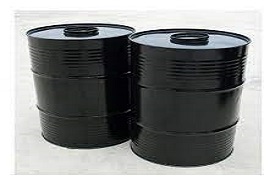 Bitumen Drums
Bitumen DrumsIS 3575:1993 |
Bitumen is a thick, very viscous petroleum substance that is transported and stored in specialized containers called bitumen drums. These drums are frequently utilized in a range of infrastructure and construction projects, such as industrial applications, road paving, roofing, and waterproofing. They are made to make sure that bitumen is handled safely and effectively, especially when controlling elements like viscosity and high temperatures are involved. |
|
| 549 |
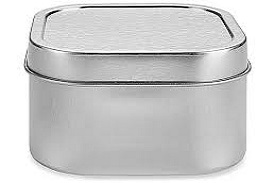 Square Tins for Solid Products
Square Tins for Solid ProductsIS 916:2000 |
Square Tins for Solid Products has been included in the mandatory ISI Certification Scheme under IS 916:2000. This standard prescribes the requirements of square tins of18-litre nominal capacity used for packing of solid products. |
|
| 550 |
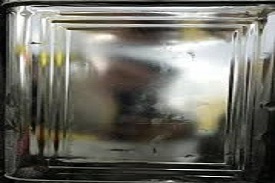 Square Tins – 15 Kilograms or litre for Ghee, Vanaspati, Edible Oils and Bakery
Square Tins – 15 Kilograms or litre for Ghee, Vanaspati, Edible Oils and BakeryIS 10325:2000 |
Square tins are square-shaped boxes or containers that are used for presenting, packing, and storing different kinds of goods. They are usually constructed of plastic, metal, or another material. They provide a distinctive and contemporary substitute for conventional round or cylindrical containers. Square tins are adaptable for a multitude of uses since they are available in a variety of sizes and styles. |
|
| Door Fittings | |||
| 551 |
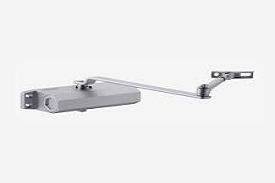 Door closers (pneumatically regulated) for light doors weighing up to 40 kg
Door closers (pneumatically regulated) for light doors weighing up to 40 kgIS 6343:1982 |
Mechanical devices known as door closers perform the crucial job of automatically shutting a door once it has been opened. A particular kind of door closer that uses compressed air to manage a door's closing and latching is called a pneumatically controlled door closer. Adjustable, secure, accessible, energy-efficient, and noise-reducing, these door closers are essential for security and fire safety. |
|
| 552 |
 Door closers, concealed type (hydraulically regulated)
Door closers, concealed type (hydraulically regulated)IS 14912:2001 |
Mechanical devices called door closers are mounted on doors to cause them to automatically shut and latch after being opened. Hydraulic-regulated concealed door closers are a particular kind of door closer that is intended to be hidden inside the door or door frame and uses hydraulics to control the pace at which the door closes and latches. |
|
| 553 |
 Hydraulically Regulated Door Closers
Hydraulically Regulated Door ClosersIS 3564:1995 |
One kind of door closer system intended to regulate a door's closing and latching in a controlled and effective way is the hydraulically regulated door closer. These closers make sure a door closes smoothly and securely by controlling the force and speed of the closure using hydraulic technology. Surface-mounted, hidden, and overhead closers are among the varieties available to meet diverse architectural and functional needs. |
|
| 554 |
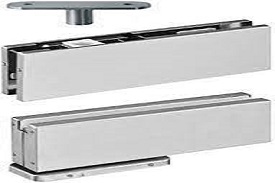 Floor springs (hydraulically regulated) for heavy doors
Floor springs (hydraulically regulated) for heavy doorsIS 6315:1992 |
A particular kind of door closer device called hydraulically controlled floor springs is usually mounted inside the floor and employs hydraulic technology to control the opening and shutting of doors. These floor springs are an essential part of many applications since they are particularly designed to handle the weight and size of large doors. |
|
| 555 |
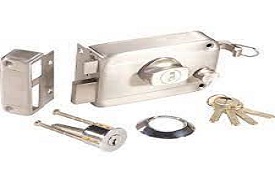 Rim Latches
Rim LatchesIS 1019:1974 |
Mechanical door latches that are affixed to a door's surface as opposed to being mortised or recessed into the door frame are called rim latches, often referred to as rim locks or surface-mounted latches. Usually, it's used to inside doors instead than external ones. They are a crucial part of door hardware because of its practicality, adaptability, security features, simplicity of installation, and visual appeal. |
|
| 556 |
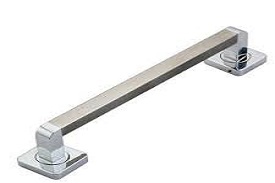 Door Handles
Door HandlesIS 208:2020 |
Door handles, often referred to as door knobs or door levers, are an integral part of doors and are vital to the safe opening and closing of doors. These door knobs are an essential component of daily living, adding to the safety, security, and beauty of residences and structures. To meet both practical and esthetic purposes, they are available in a variety of forms, materials, and patterns. |
|
| 557 |
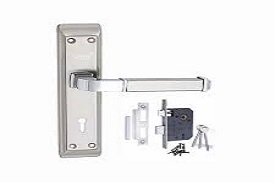 Door handles for mortice lock (vertical type)
Door handles for mortice lock (vertical type)IS 4992:1975 |
Common door fittings, door handles provide the vital job of allowing people to open and close doors. They may be found in a variety of sizes, forms, materials, and patterns to suit the unique requirements of different doors and blend in with the outside or interior decor. |
|
| Bottled Water Dispenser | |||
| 558 |
 Bottled water dispensers
Bottled water dispensersIS 17681:2022 |
A practical approach to deliver clean, filtered drinking water from bottled water containers is through the use of bottled water dispensers, which are machines or gadgets. These water dispensers, which provide an immediately available source of fresh drinking water, are frequently seen in homes, workplaces, schools, and public areas. |
|
| Helmet for Police Force, Civil Defence and Personal Protection | |||
| 559 |
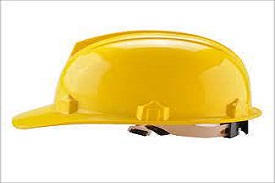 Non-metal helmet for firemen and civil defence personnel
Non-metal helmet for firemen and civil defence personnelIS 2745:1983 |
Non-metal helmet for firemen and civil defense personnel has been included in the mandatory ISI Certification Scheme under IS 2745:1983. This product cannot be exported/imported or sold in the Indian consumer market without ISI Mark imprinted. |
|
| 560 |
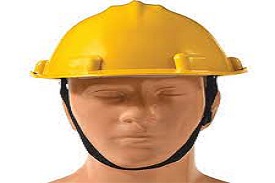 Industrial safety helmets
Industrial safety helmetsIS 2925:1984 |
In industries where there is a chance of head injuries, industrial safety helmets are essential for ensuring worker safety. Usually, strong, durable materials like polycarbonate or high-density polyethylene (HDPE) are used to make these helmets. |
|
| 561 |
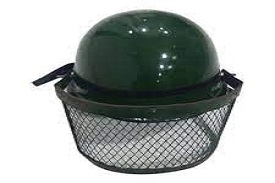 Non- metal helmet for Police Force
Non- metal helmet for Police ForceIS 9562:1980 |
Non-metal helmet for the Police Force has been included in the mandatory ISI Certification Scheme under IS 9562:1980. This product cannot be exported/imported or sold in the Indian consumer market without ISI Mark imprinted. This standard lays down the requirements regarding materials, construction, workmanship and finish, weight, and performance requirements of helmets for the police force. |
|
| Steel Wires or Strands, Nylon or Wire Ropes and Wire mesh | |||
| 562 |
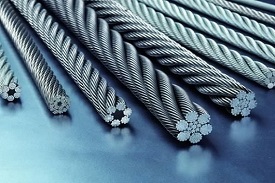 Steel Wire Ropes for General Engineering Purposes
Steel Wire Ropes for General Engineering PurposesIS 2266 : 2019 |
Steel wire ropes are strong, flexible, and long-lasting constructions made of many steel wire strands that have been braided or twisted together to create a tough cable. The layers of steel wire strands organized in a helical manner around a center composed of either natural or synthetic materials in these ropes. |
|
| 563 |
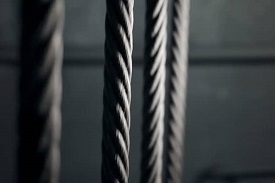 Steel Wire Suspension Ropes for Lifts, Elevators and Hoists
Steel Wire Suspension Ropes for Lifts, Elevators and HoistsIS 2365 : 2018 |
Steel Wire Suspension Ropes for Lifts, Elevators and Hoists has been included in the mandatory ISI Certification Scheme under IS 2365 : 2018. This product cannot be exported/imported or sold in Indian consumer market without ISI Mark imprinted. |
|
| 564 |
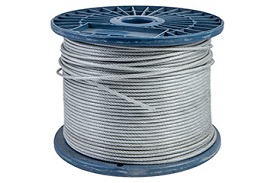 Stranded steel wire ropes for winding and man-riding haulages in mines
Stranded steel wire ropes for winding and man-riding haulages in minesIS 1855:2022 |
Strong and pliable cables made by entwining many steel wire strands are known as stranded steel wire ropes. These threads are wound around a core in a helical manner to create a strong, robust rope. Because of their enhanced strength, flexibility, and load-bearing ability, stranded steel wire ropes are essential parts of many different industries' applications. |
|
| 565 |
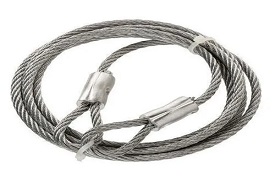 Steel Wire Rope for haulage
Steel Wire Rope for haulageIS 1856:2005 |
Made of individual steel wires that are twisted or braided together to form strands, which are then connected to make a larger rope structure, steel wire rope is a strong and adaptable material. It is extensively employed in many different sectors for purposes including lifting, hoisting, towing, and suspension. |
|
| 566 |
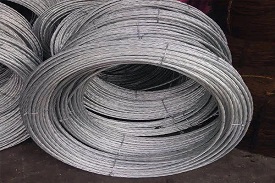 Hot Dip Galvanized Stay Strand
Hot Dip Galvanized Stay StrandIS 2141:2000 |
Hot Dip Galvanized Stay Strand has been included in the mandatory ISI Certification Scheme under IS 2141:2000. This product cannot be exported/imported or sold in Indian consumer market without ISI Mark imprinted. |
|
| 567 |
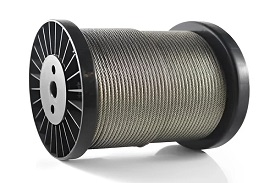 Wire Ropes Used in Oil Wells and Oil Well Drilling
Wire Ropes Used in Oil Wells and Oil Well DrillingIS 4521:2001 |
Wire Ropes Used in Oil Wells and Oil Well Drilling has been included in the mandatory ISI Certification Scheme under IS 4521:2001. This product cannot be exported/imported or sold in Indian consumer market without ISI Mark imprinted. |
|
| 568 |
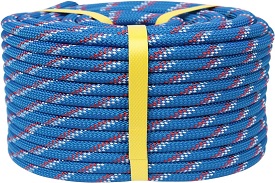 Braided Nylon Ropes for Mountaineering Purposes
Braided Nylon Ropes for Mountaineering PurposesIS 6590:1972 |
Braided Nylon Ropes for Mountaineering Purposes has been included in the mandatory ISI Certification Scheme under IS 6590:1972. This product cannot be exported/imported or sold in Indian consumer market without ISI Mark imprinted. |
|
| 569 |
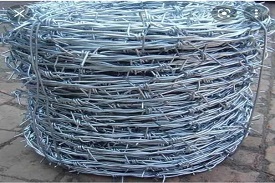 Galvanized Steel Barbed Wire for Fencing
Galvanized Steel Barbed Wire for FencingIS 278:2009 |
Strong fence made of twisted steel wires, galvanized steel barbed wire has sharp barbs placed at random intervals throughout its length. This wire is coated with zinc during the galvanization process, which increases its resistance to rust, corrosion, and environmental deterioration. For fence, galvanized steel barbed wire makes an effective security barrier that discourages unwanted entrance. |
|
| 570 |
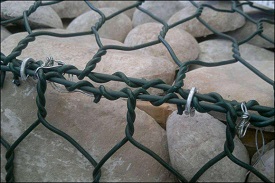 Galvanized Steel Wire or Galvanized Steel Wire with polymer coating
Galvanized Steel Wire or Galvanized Steel Wire with polymer coatingIS 16014:2018 |
In civil engineering applications, mechanically woven, double-twisted, hexagonal wire mesh gabions, revet beds, rock fall netting, and related goods play crucial roles. These products are typically made of galvanized steel wire coated with a polymer. Galvanization prolongs the life of these goods by providing protection against rust, corrosion, and weathering particularly in hostile outdoor environments. |
|
| Material Measure of length | |||
| 571 |
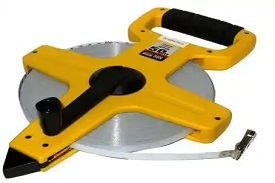 Legal Metrology – Material Measure of length – Woven metallic and glass fibre tape measures
Legal Metrology – Material Measure of length – Woven metallic and glass fibre tape measuresIS 1269(Part 1) : 1997 |
Specialized measuring instruments called woven metallic and glass fiber tape measures are made by weaving metallic and glass fibers together to form a structure resembling tape. By combining the benefits of both materials, these tapes may provide increased durability from the metallic fibers and certain qualities like heat resistance or insulation from the glass fibers. |
|
| 572 |
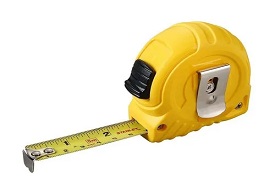 Legal Metrology-Material Measure of length-Steel tape measures
Legal Metrology-Material Measure of length-Steel tape measuresIS 1269(Part 2) : 1997 |
Legal Metrology – Material Measure of length – Steel tape measures has been included in the mandatory ISI Certification Scheme underIS 1269(Part 2) : 1997. This product cannot be exported/imported or sold in Indian consumer market without ISI Mark imprinted. |
|
| Polyethylene Woven Sacks | |||
| 573 |
 Polypropylene (PP) Woven Sacks for Packaging Fertilizers.jpg) Textile-High Density Polyethylene (HDPE) /Polypropylene (PP) Woven Sacks for Packaging Fertilizers
Textile-High Density Polyethylene (HDPE) /Polypropylene (PP) Woven Sacks for Packaging FertilizersIS 9755 : 2021 |
Strong, long-lasting packing materials, HDPE and PP woven sacks are made from high-density polyethylene or polypropylene tapes. Fertilisers are best protected during storage and transportation by HDPE bags because of their exceptional strength, resilience to moisture, and abrasion resistance. |
|
| 574 |
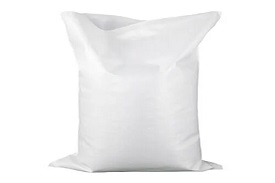 Textile-High Density Polyethylene (HDPE)/ Polypropylene (PP) Woven Sacks for Packaging of 50 kg Cement
Textile-High Density Polyethylene (HDPE)/ Polypropylene (PP) Woven Sacks for Packaging of 50 kg CementIS 11652 : 2017 |
IS 11652: 2017 standard prescribes the requirements of high density polyethylene (HDPE)/ polypropylene (PP) woven sacks suitable for packaging of 50 kg cement for domestic market. |
|
| 575 |
 Woven, Laminated, Block Bottom Valve Sacks for Packaging of 50 kg Cement.jpg) Textiles-Polypropylene (PP) Woven, Laminated, Block Bottom Valve Sacks for Packaging of 50 kg Cement
Textiles-Polypropylene (PP) Woven, Laminated, Block Bottom Valve Sacks for Packaging of 50 kg CementIS 16709: 2017 |
Block bottom valve bags with a polypropylene (PP) weave and lamination are cutting-edge packaging options created for maximum dependability and performance. These specialty sacks are made of PP woven fabric, which guarantees strength and durability. Lamination improves the sacks' resistance to moisture and adds extra protection. |
|
| 576 |
 Polypropylene (PP) Woven Sacks for Packaging of 25 kg Polymer Materials.jpg) Textiles-High Density Polyethylene (HDPE)/ Polypropylene (PP) Woven Sacks for Packaging of 25 kg Polymer Materials
Textiles-High Density Polyethylene (HDPE)/ Polypropylene (PP) Woven Sacks for Packaging of 25 kg Polymer MaterialsIS 16703: 2017 |
woven sacks made of high density polyethylene (HDPE) and polypropylene (PP) are robust and adaptable packaging materials used in a variety of industries. These sacks are made by weaving PP or HDPE tapes together, which gives them durability, strength, and chemical and moisture resistance. They are frequently used to carry and store commodities including cement, fertilizer, wheat, and more. |
|
| 577 |
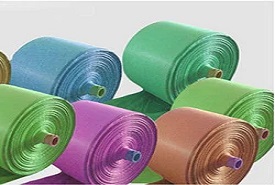 Textiles-Polypropylene (PP)/ High Density Polyethylene (HDPE) Laminated Woven Sacks for Mail Sorting, Storage, Transport and Distribution
Textiles-Polypropylene (PP)/ High Density Polyethylene (HDPE) Laminated Woven Sacks for Mail Sorting, Storage, Transport and DistributionIS 17399: 2020 |
Laminated woven sacks made of polypropylene (PP) and high density polyethylene (HDPE) are specialized materials used in packing that are made by covering woven fabric made of PP or HDPE with another layer of laminate. Strength, durability, and moisture resistance are all improved by the protective layer that is added during the lamination process. |
|
| Safes, Safe Deposit Locker Cabinets and key locks | |||
| 578 |
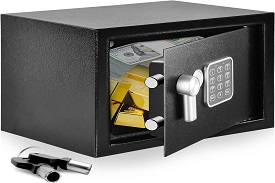 Safes
SafesIS 550 (Part 1): 2014 |
Safes are safes that are used as secure storage places to keep valuables like cash, papers, jewelry, and other priceless goods safe from thieves, fires, and other possible threats. These storage containers are available in a range of shapes and sizes, including gun safes, fireproof safes, business safes, and residential safes, each designed to meet a particular purpose. |
|
| 579 |
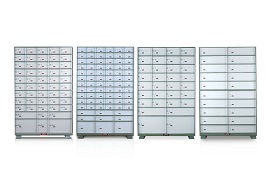 Safe deposit locker cabinets
Safe deposit locker cabinetsIS 5244 : 2020 |
Safe deposit locker cabinets, which are secure storage units commonly found in banks, financial organizations, or security facilities, are sometimes referred to as safe deposit boxes or safes. These cabinets are made up of separate, locked sections housed inside a bigger, fortified vault. Consumers or clients can rent these sections to safely keep papers, valuables, or other belongings. |
|
| 580 |
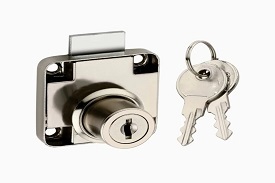 Key locks for security equipment
Key locks for security equipmentIS 17566: 2021 |
A classic type of security system that is activated by physical keys is the key lock. For many applications where manual locking and unlocking is desirable, they offer controlled access and security, and their simplicity, cost, and familiarity make them highly regarded. |
|
| Hinges | |||
| 581 |
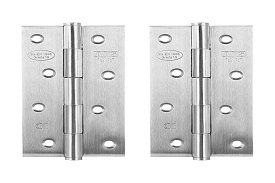 Stainless steel butt hinges
Stainless steel butt hingesIS 12817: 2020 |
Butt hinges made of stainless steel, an alloy renowned for its durability and resistance to corrosion, can be produced totally or mostly. These hinges, which are intended to be mounted on the edges of doors, cabinets, and other structures, are made up of two rectangular metal plates joined by a pin. These hinges' remarkable resistance to rust, tarnishing, and corrosion is a result of their stainless steel construction, which makes them ideal for a variety of uses in both indoor and outdoor settings. |
|
| 582 |
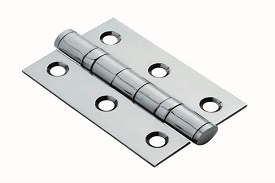 Steel Butt Hinges
Steel Butt HingesIS 1341:2018 |
A particular kind of butt hinge that is made of steel and offers strength and longevity is called a steel butt hinge. Because steel makes up all or most of these hinges, they are sturdy and resistant to rust, wear, and environmental factors. hefty-duty settings like commercial or industrial ones, hefty doors, gates, cabinets, or other constructions needing sturdy and long-lasting hinge mechanisms frequently utilize steel butt hinges because of their durability and dependability. |
|
| 583 |
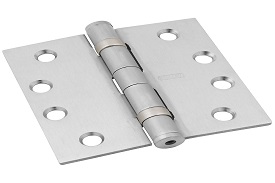 Non-ferrous metal butt hinges
Non-ferrous metal butt hingesIS 205:1992 |
Butt hinges made of non-ferrous metal are made of alloys of metallic materials like copper, brass, bronze, or aluminum that don't include a lot of iron. Because these hinges are made of non-iron, they have several benefits, chief among them being resistance to corrosion, which makes them perfect for outdoor or maritime applications where moisture exposure is frequent. |
|
| 584 |
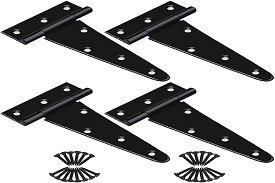 Tee and strap hinges
Tee and strap hingesIS 206:2010 |
Both tee hinges and strap hinges are hinge types that are used in a variety of applications, frequently in metalworking, carpentry, and woodworking. They differ in usage and design, yet they fulfill comparable purposes. Tee hinges, so called because of its T-shaped appearance, are made up of two pieces. The door or gate is fastened to one side, while the frame or support is attached to the other. |
|
| 585 |
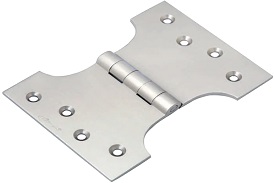 Parliament hinges
Parliament hingesIS 362:1991 |
Parliament hinges are a particular kind of hinge that is frequently employed in scenarios where doors must swing clear of an opposing wall, such as in huge openings or rooms with limited space. They are also referred to as projection hinges or broad throw hinges. When the door is fully opened, it may swing open to 180 degrees or more, thanks to the extended knuckle or unique design of these hinges, which also allow the door to sit flat against the wall. |
|
| 586 |
 hinges by brand liaison.jpg) Continuous (Piano) hinges
Continuous (Piano) hingesIS 3818:1992 |
Continuous hinges are hardware pieces that extend the whole length of a door, panel, or lid. They are sometimes called piano hinges because of how closely they resemble the long, thin design of piano lid hinges. These hinges are distinguished by their smooth, continuous construction and interlocking knuckles or leaves all the way down their length. |
|
| 587 |
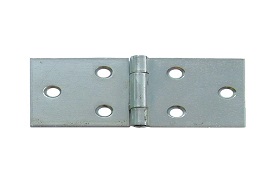 Steel back flap hinges
Steel back flap hingesIS 3843: 1995 |
Steel back flap hinges are a particular kind of hinge used on lids or flaps. They are composed of steel, as are the mounting plates (also known as leaves) that fasten to the flap and the supporting surface (such as a cabinet or furniture frame). These hinges incorporate the strength and resilience of steel with the utility needed to move a flap or lid. |
|
| 588 |
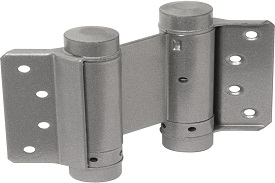 Double-acting spring hinges
Double-acting spring hingesIS 453:1993 |
Double-acting spring hinges are specialized hinges with a spring mechanism that regulates the movement of the door and allows it to swing open in both directions. By using the tension in the springs, these hinges are designed to automatically restore the door to its closed position after it has been pushed open from either direction. |
|
| 589 |
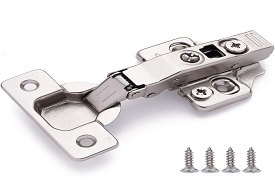 Cabinet hinges
Cabinet hingesIS 18297:2023 |
Specialized hardware parts called cabinet hinges are used to attach cabinet doors to the cabinet frame so that the doors may swing open and closed. Depending on the style of door and cabinet design, these hinges can be overlay, inset, or concealed. Each type of hinge has a distinct function. They are essential to the operation of cabinets because they give the doors stability, support, and smooth movement while making sure the doors line up correctly with the cabinet frame. |
|
| Cycle and Rickshaw Tyres and Tubes | |||
| 590 |
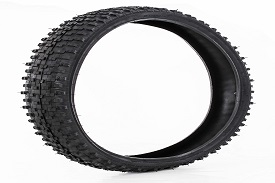 Cycle and Rickshaw Pneumatic Tyres
Cycle and Rickshaw Pneumatic TyresIS 2414:2005 |
Although air-filled chambers are used by both rickshaw pneumatic tires and cycle pneumatic tires to provide cushioning, shock absorption, and flexibility during rides, there are several important differences between the two types of tires. Cycle tires come in a variety of sizes, tread patterns, and widths to meet different riding demands. They are made for bicycles used on a variety of surfaces and riding styles. |
|
| 591 |
 by brand liaison.jpg) Cycle-Rubber Tubes (Moulded or Jointed)
Cycle-Rubber Tubes (Moulded or Jointed)IS 2415 :2015 |
Whether they are joined or molded, rubber tubes are essential parts of bicycle tires that greatly enhance their operation and performance. Rubber material that is liquid or semi-liquid is injected or poured into a mold during a precision molding procedure to make molded rubber tubes, which are seamless and lack seams or connections. |
|
| Rubber Gaskets for Pressure Cookers | |||
| 592 |
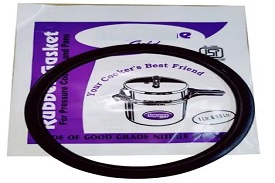 Rubber Gaskets for Pressure Cookers
Rubber Gaskets for Pressure CookersIS 7466 :2023 |
Rubber gaskets are elastomeric or rubber-based sealing elements used to provide a tight seal between two mating surfaces. They are utilized for sealing purposes in a variety of industries and available in a variety of shapes and sizes, including O-rings, flat washers, and custom-shaped gaskets. Because of these gaskets' adaptability, durability, and resistance to a range of chemicals, pressures, and temperatures, they are preferred. |
|
| Laboratory Glassware | |||
| 593 |
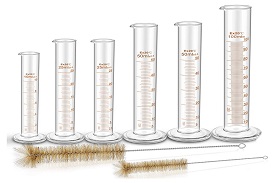 Graduated measuring cylinders
Graduated measuring cylindersIS 878 :2008 |
Graduated measuring cylinders are essential components of laboratory glassware designed for accurate volume measurements in scientific experiments and analyses. Comprising a cylindrical shape with a vertical graduated scale marked in millilitres, these glass cylinders enable precise determination of liquid volumes by observing the height of the liquid against the calibrated scale. |
|
| 594 |
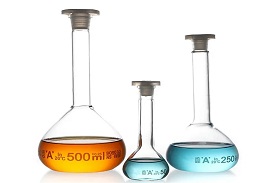 One Mark volumetric flasks
One Mark volumetric flasksIS 915:2012 |
One-Mark volumetric flasks are a specific type of laboratory glassware designed for precise volume measurements. Characterized by a single graduation mark, these flasks indicate the calibrated volume at a specific temperature, typically 20 degrees Celsius. Renowned for their high precision and accuracy, One-Mark volumetric flasks are crucial in analytical chemistry, pharmaceutical laboratories and scientific disciplines requiring exact concentrations of solutions. |
|
| 595 |
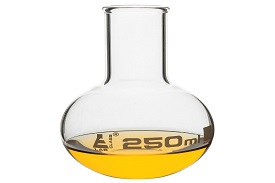 Narrow-necked boiling flasks
Narrow-necked boiling flasksIS 1381 (Part 1):2003 |
Narrow-necked boiling flasks are a specialized type of laboratory glassware designed for heating and boiling liquids in a controlled manner. These flasks have a distinctive shape characterized by a long, slender neck and a rounded or bulbous base. The narrow neck allows for precise control over the release of vapours and minimizes the risk of splashing during boiling or reactions. |
|
| 596 |
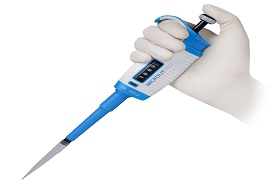 Single volume pipettes
Single volume pipettesIS 1117:2018 |
Single volume pipettes are specialized laboratory instruments designed to accurately dispense a predetermined, fixed volume of liquid in a single operation. Examples of such pipettes include volumetric pipettes, serological pipettes and Pasteur pipettes, each serving specific purposes in laboratory applications. |
|
| 597 |
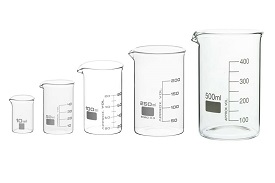 Glass beakers
Glass beakersIS 2619:2018 |
Glass beakers are cylindrical containers with a flat bottom, typically made of glass, designed for holding, measuring and mixing liquids in laboratory settings. They have a simple yet effective design, featuring a lip or spout for easy pouring and a scale or graduations along the side for approximate volume measurements. |
|
| Electrical Accessories | |||
| 598 |
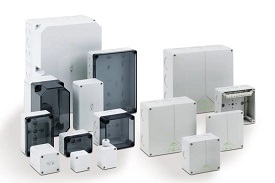 Boxes and Enclosures for Electrical Accessories for Household and Similar Fixed Electrical Installations
Boxes and Enclosures for Electrical Accessories for Household and Similar Fixed Electrical InstallationsIS 14772: 2020 |
Boxes and enclosures for electrical accessories refer to specialized structures designed to contain and protect electrical components used in residential settings. These boxes and enclosures play a crucial role in organizing and securing electrical wiring, switches, outlets and other accessories within a household's electrical infrastructure. Whether made of plastic, metal or other materials, these structures ensure safety, compliance with regulations and facilitate the proper functioning of electrical systems in homes. |
|
| 599 |
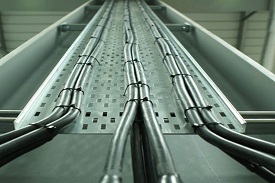 Cable Trunking and Ducting Systems for Electrical Installations – Cable Trunking and Ducting Systems Intended for Mounting on Walls or Ceiling
Cable Trunking and Ducting Systems for Electrical Installations – Cable Trunking and Ducting Systems Intended for Mounting on Walls or CeilingIS 14927 (Part 2): 2001 |
Cable trunking and ducting systems are essential components in electrical installations, providing organized and protected pathways for the management of electrical cables and components. Cable trunking utilizes enclosed channels, often made of materials like PVC or metal, to safeguard and conceal electrical cables, preventing damage and minimizing the risk of electrical hazards. |
|
| 600 |
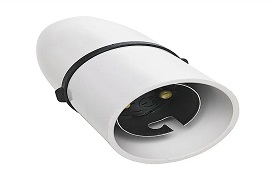 Bayonet Lamp Holders
Bayonet Lamp HoldersIS 1258: 2005 |
Bayonet lamp holders are fixtures or devices specifically designed to secure and support lamps or light bulbs that use a bayonet fitting mechanism. In this system, the lamp is inserted into the holder and a twisting motion secures it in place. Bayonet lamp holders are crucial components in lighting fixtures, providing a stable and reliable connection between the lamp and the electrical supply. |
|
| 601 |
 by brand liaison.jpeg) Switch-socket-outlets (non-interlock type)
Switch-socket-outlets (non-interlock type)IS 15787: 2008 |
Switch-socket-outlets (non-interlock type) are electrical devices that combine a switch and a socket-outlet into a single unit without an interlocking mechanism. The switch component allows users to control the flow of electrical current, turning devices on or off. The socket provides a receptacle for plugs, enabling the connection of electrical devices. Additionally, the outlet component refers to the point where electrical devices can draw power. |
|
| 602 |
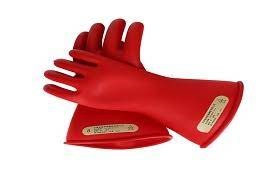 Live Working Gloves of Insulating Material
Live Working Gloves of Insulating MaterialIS 13774:2021 |
Live working gloves refer to protective gloves designed for use in situations involving live electrical work. These gloves are made from insulating materials that provide a barrier against the flow of electric current, thereby protecting the hands of individuals working with live electrical equipment. The insulating materials used in these gloves are typically high-dielectric-strength materials, such as rubber or other elastomers. |
|
| 603 |
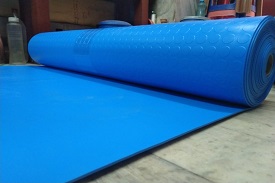 Insulating Mats for Electrical Purposes
Insulating Mats for Electrical PurposesIS 15652:2006 |
Insulating mats are specialized mats designed to provide electrical insulation and safety in environments where individuals may be exposed to the risk of electric shock. These mats are typically made from insulating materials, such as rubber or synthetic polymers, that have high dielectric strength. |
|
| 604 |
 Specification for Pressure sensitive adhesive insulating tapes for electrical purposes
Specification for Pressure sensitive adhesive insulating tapes for electrical purposesIS 7809 (Part3/ Sec1): 1986 |
Pressure sensitive adhesive insulating tapes made from plasticized polyvinyl chloride (PVC) are commonly used in electrical applications for their flexibility and conformability. The plasticized PVC backing material provides good dielectric strength for effective electrical insulation, while the pressure sensitive adhesive ensures easy application and bonding to various surfaces. |
|
| 605 |
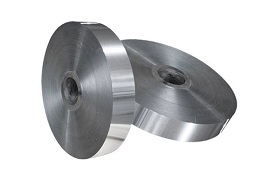 Poly-Laminated aluminium cable wrap
Poly-Laminated aluminium cable wrapIS 16012: 2012 |
Poly-laminated aluminium cable wrap is a cable insulation or shielding material that combines layers of polymeric materials with aluminium through a lamination process. This design aims to offer a balanced set of properties to the cable. The polymeric layers contribute to electrical insulation, preventing conductors from contacting each other, while the aluminium layer provides a moisture-resistant barrier. |
|
| 606 |
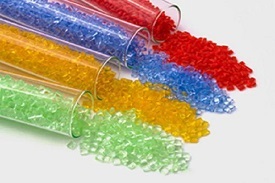 Poly Vinyl Chloride (PVC) Homopolymers
Poly Vinyl Chloride (PVC) HomopolymersIS 17658:2021 |
Polyvinyl chloride (PVC) homopolymers are a type of thermoplastic polymer consisting solely of vinyl chloride monomer units polymerized together through a chemical process. PVC homopolymers are known for their versatility, durability, and cost-effectiveness, making them one of the most widely used plastics globally. |
|
| 607 |
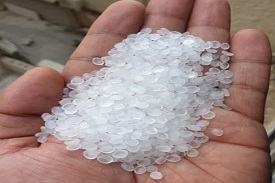 Polypropylene (PP) Materials for Moulding and Extrusion
Polypropylene (PP) Materials for Moulding and ExtrusionIS 10951:2020 |
Polypropylene (PP) materials are thermoplastic polymers renowned for their versatility, durability, and cost-effectiveness, making them widely used in molding and extrusion applications across various industries. PP materials exhibit excellent chemical resistance, mechanical properties, and thermal stability, making them suitable for a wide range of temperatures and environmental conditions. |
|
| 608 |
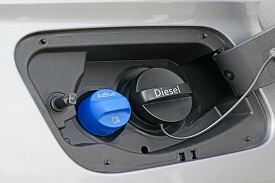 Diesel Engines – NOx Reduction Agent AUS 32
Diesel Engines – NOx Reduction Agent AUS 32IS 17042 (Part-1):2018 |
Diesel engines utilize a variety of emissions control technologies to comply with stringent environmental regulations, particularly concerning the reduction of nitrogen oxides (NOx), which are harmful pollutants contributing to air pollution and smog formation. AUS 32, also known as AdBlue or diesel exhaust fluid (DEF), is a clear, non-toxic solution consisting of approximately 32.5% high-purity urea and 67.5% deionized water. |
|
| 609 |
.jpg) Evaporative Air Coolers (Desert Coolers)
Evaporative Air Coolers (Desert Coolers)IS 3315:2019 |
Evaporative air coolers, commonly known as desert coolers, are efficient and cost-effective cooling systems that utilize the natural process of evaporation to lower the temperature of indoor or outdoor spaces. These coolers consist of a water reservoir, a pump, and a fan, with cooling pads or media located in front of the fan. |
|
| 610 |
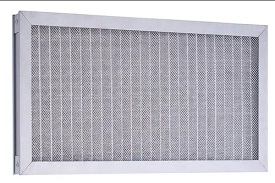 Air Filters for general ventilation
Air Filters for general ventilationIS 17570 (Part 1):2021 ISO 16890-2:2016 |
Air filters for general ventilation play a crucial role in maintaining indoor air quality by capturing airborne particles and contaminants, thereby enhancing the health and comfort of occupants. Technical specifications for air filters are determined based on their efficiency in removing particulate matter from the air, measured using the ePM (efficiency Particulate Matter) classification system. |
|
| 611 |
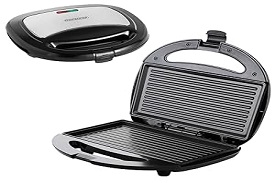 Safety of household and similar electrical appliances – particular requirements – toasters, grills, roasters and similar appliances
Safety of household and similar electrical appliances – particular requirements – toasters, grills, roasters and similar appliancesIS 302 (Part 2/Sec 9): 2009 |
Toasters, grills, roasters, and similar appliances are essential tools in modern kitchens, offering versatility and convenience for preparing a wide range of foods. Toasters are designed to evenly brown slices of bread or bagels, providing quick and effortless breakfast solutions. Grills, whether electric or stovetop, allow for the healthy cooking of meats, vegetables, and sandwiches, with ridged surfaces creating appetizing grill marks and draining excess fats. |
|
| 612 |
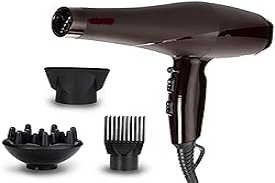 Safety of household and similar electrical appliances – particular requirements – appliances for skin or hair care
Safety of household and similar electrical appliances – particular requirements – appliances for skin or hair careIS 302 (Part 2/Sec 23):2009 |
Appliances for skin or hair care include a diverse range of devices designed to enhance personal grooming routines and promote overall well-being. These appliances include hair dryers, straighteners, curling irons, facial steamers, facial cleansing brushes, and more, each tailored to address specific grooming needs. |
|
| 613 |
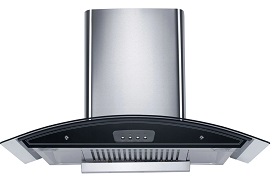 Safety of household and similar electrical appliances – particular requirements – range hoods
Safety of household and similar electrical appliances – particular requirements – range hoodsIS 302 (Part 2/Sec 31):2009 |
Range hoods are essential kitchen appliances designed to remove smoke, grease, odours, and airborne contaminants generated during cooking. Installed above cooktops or stoves, these hoods feature powerful fans that draw in the cooking fumes and direct them outside through ductwork or filter them through a filtration system before recirculating the air back into the kitchen. |
|
| 614 |
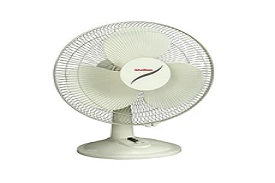 Household and similar electrical appliances – Safety – particular requirements for fans
Household and similar electrical appliances – Safety – particular requirements for fansIS 302 (Part 2/Sec 80):2017 |
Electrical fans are important appliances used for cooling, air circulation, and ventilation in various environments, ranging from homes and offices to industrial settings. These devices come in various types, including ceiling fans, floor fans, desk fans, tower fans, and exhaust fans, each designed to suit specific needs and preferences. |
|
| 615 |
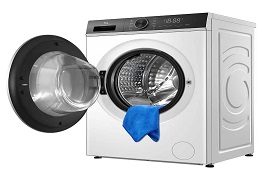 Safety of household and similar electrical appliances – particular requirements – domestic electric clothes washing machines
Safety of household and similar electrical appliances – particular requirements – domestic electric clothes washing machinesIS 302 (Part 2/Sec 7):2010 |
Domestic electric clothes washing machines are indispensable appliances designed to streamline the laundry process and provide convenient solutions for households. These machines feature a variety of wash cycles, water temperature settings, and load capacities to accommodate different fabrics, soil levels, and laundry loads. |
|
| 616 |
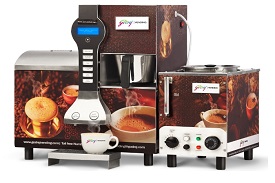 Safety of Household and Similar Electrical Appliances – Particular Requirements – Commercial Dispensing Appliances and Vending Machines
Safety of Household and Similar Electrical Appliances – Particular Requirements – Commercial Dispensing Appliances and Vending MachinesIS 302 (Part 2/Sec 75):2018 |
Commercial dispensing appliances and vending machines are sophisticated devices designed to automate the sale and dispensing of various products and services in public spaces. These machines come in various types and configurations, catering to diverse consumer needs and preferences. |
|
| 617 |
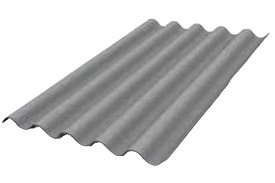 Corrugated and Semi – Corrugated Asbestos Cement Sheets
Corrugated and Semi – Corrugated Asbestos Cement SheetsIS 459:1992 |
Corrugated and semi-corrugated asbestos cement sheets are construction materials composed of a mixture of asbestos fibres and cement, formed into a corrugated or semi-corrugated pattern. These sheets are renowned for their durability, strength, and fire-resistant properties, making them popular choices for roofing and cladding in various industrial, agricultural, and residential applications. |
|
| 618 |
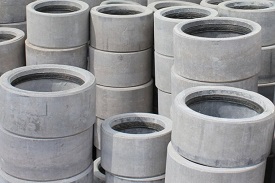 Asbestos Cement Pressure Pipes and Joints
Asbestos Cement Pressure Pipes and JointsIS 1592:2003 |
Asbestos cement pressure pipes and joints are durable and cost-effective piping systems widely used in water supply and distribution networks for their excellent strength, corrosion resistance, and longevity. Composed of a mixture of asbestos fibres and cement, these pipes exhibit superior mechanical properties, including high tensile strength and resistance to internal and external pressures, making them suitable for conveying potable water, sewage, and industrial fluids under high-pressure conditions. |
|
| 619 |
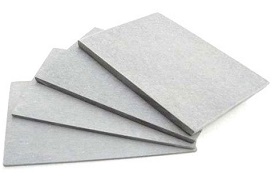 Asbestos Cement Flat Sheets
Asbestos Cement Flat SheetsIS 2096:1992 |
Asbestos cement flat sheets are construction materials composed of a mixture of asbestos fibers and cement, pressed into flat panels or sheets. These sheets are renowned for their durability, fire resistance, and insulating properties, making them widely used in roofing, cladding, and siding applications in residential, commercial, and industrial buildings. |
|
| 620 |
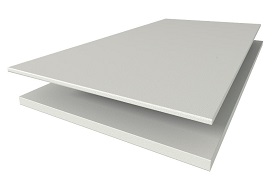 Asbestos Cement Building Boards
Asbestos Cement Building BoardsIS 2098:1997 |
Asbestos cement building boards are construction materials composed of a mixture of asbestos fibers and cement, pressed into flat panels or boards. These boards are renowned for their durability, fire resistance, and insulating properties, making them widely used in various building applications. Asbestos cement building boards are commonly used as wall cladding, ceiling panels, partitions, and underlayment for flooring, providing structural stability, acoustic insulation, and thermal resistance. |
|
| 621 |
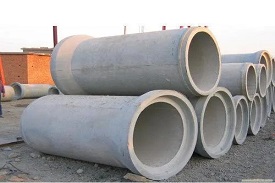 Asbestos–Cement Pipes and Fittings for Sewerage and Drainage
Asbestos–Cement Pipes and Fittings for Sewerage and DrainageIS 6908:1991 |
Asbestos-cement pipes and fittings for sewerage and drainage systems are widely used in civil engineering projects due to their durability, corrosion resistance, and affordability. Composed of a mixture of asbestos fibers and cement, these pipes offer excellent strength and resistance to chemical degradation, making them suitable for conveying sewage, stormwater, and industrial effluents. Asbestos-cement pipes are lightweight, easy to install, and have a smooth interior surface that minimizes friction and allows for efficient flow of liquids. |
|
| 622 |
 Silica-Asbestos-Cement Flat Sheets
Silica-Asbestos-Cement Flat SheetsIS 13000:1990 |
Silica-asbestos-cement flat sheets are construction materials composed of a mixture of silica, asbestos fibers, and cement, pressed into flat panels or sheets. These sheets are valued for their durability, fire resistance, and insulating properties, making them widely used in roofing, cladding, and siding applications in residential, commercial, and industrial buildings. |
|
| 623 |
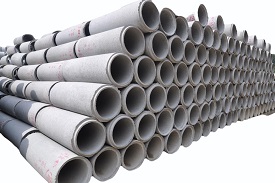 Asbestos Cement Cable Conduits and Troughs
Asbestos Cement Cable Conduits and TroughsIS 8870:1978 |
Asbestos cement cable conduits and troughs are robust and durable materials used in electrical installations to protect and route cables in various applications. Composed of a mixture of asbestos fibers and cement, these conduits and troughs offer excellent mechanical strength, fire resistance, and insulation properties, making them suitable for both indoor and outdoor use. |
|
| 624 |
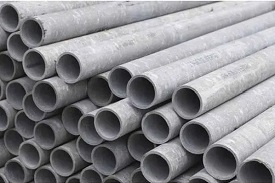 Asbestos Cement Pressure Pipes (Light Duty)
Asbestos Cement Pressure Pipes (Light Duty)IS 9627:1980 |
Asbestos cement pressure pipes, specifically designed for light-duty applications, are durable and cost-effective piping systems used primarily for water supply and distribution networks in residential and small-scale industrial settings. Composed of a mixture of asbestos fibres and cement, these pipes offer sufficient strength and corrosion resistance to withstand moderate internal pressures and external loads. |
|
| 625 |
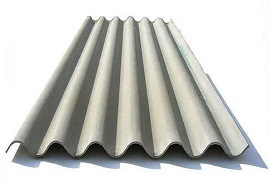 Shallow Corrugated Asbestos Cement Sheets
Shallow Corrugated Asbestos Cement SheetsIS 13008:1990 |
||
| 626 |
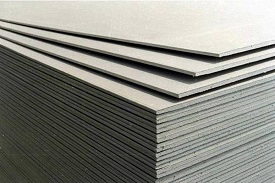 Fibre Cement Flat Sheets
Fibre Cement Flat SheetsIS 14862:2000 |
Fibre cement flat sheets are versatile construction materials composed of a mixture of cement, cellulose fibres, sand, and other additives. These sheets are renowned for their durability, strength, and resistance to weather, fire, and pests, making them widely used in various building applications. |
|
| 627 |
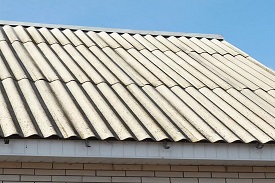 Fibre Reinforced Cement Products – Long Corrugated or Asymmetrical Section Sheets and Fittings for Roofing and Cladding
Fibre Reinforced Cement Products – Long Corrugated or Asymmetrical Section Sheets and Fittings for Roofing and CladdingIS 14871:2000 |
Fibre reinforced cement products, such as long corrugated or asymmetrical section sheets and fittings, are innovative building materials engineered for roofing and cladding applications. These products combine the strength and durability of cement with the reinforcing properties of fibres, generally cellulose or glass, to create robust and versatile construction components. |
|
| 628 |
.jpg) Water meters (bulk type)
Water meters (bulk type)IS 2373:1981 |
Fibre reinforced cement products, such as long corrugated or asymmetrical section sheets and fittings, are innovative building materials engineered for roofing and cladding applications. These products combine the strength and durability of cement with the reinforcing properties of fibres, generally cellulose or glass, to create robust and versatile construction components. |
|
| 629 |
.jpg) Water meters (domestic type)
Water meters (domestic type)IS 779: 1994 |
Domestic water meters are essential devices installed in residential properties to measure and monitor the volume of water consumed by households. These meters are typically installed at the point where the main water supply enters the property and are crucial for accurately billing residents based on their water usage. |
|
| 630 |
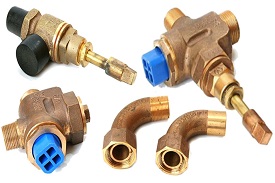 Ferrules for water services
Ferrules for water servicesIS 2692:1989 |
Ferrules for water services are essential components used in plumbing and water distribution systems to create secure connections between pipes and fittings. These ferrules are typically made of durable materials such as brass, stainless steel, or copper and are designed to provide a tight seal and prevent leaks at connection points. |
|
| 631 |
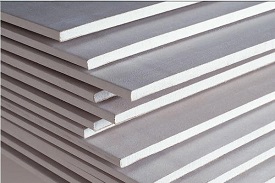 Gypsum plaster boards – Specification: Part 1 plain gypsum plaster boards
Gypsum plaster boards – Specification: Part 1 plain gypsum plaster boardsIS 2095 (Part 1):2011 |
Plain gypsum plaster boards, also known as gypsum wallboards or drywall, are versatile construction materials widely used in interior wall and ceiling applications. These boards consist of a gypsum core sandwiched between two layers of paper or fiberglass, providing strength, rigidity, and fire resistance. Plain gypsum plaster boards are lightweight and easy to install, making them popular choices for both residential and commercial construction projects. |
|
| 632 |
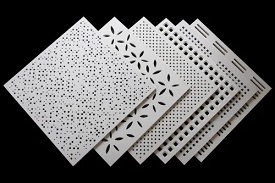 Glass Fibre Reinforced Gypsum Panels
Glass Fibre Reinforced Gypsum PanelsIS 17400:2021 |
Glass fibre reinforced gypsum (GFRG) panels are innovative construction materials made by embedding glass fibre reinforcement within a gypsum matrix. These panels combine the strength and durability of glass fibres with the versatility and workability of gypsum, resulting in lightweight yet robust building components. GFRG panels are manufactured through a process where a mixture of gypsum plaster and glass fibres is poured into molds and allowed to cure. |
|
| 633 |
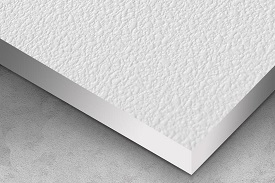 Gypsum Plaster Boards – Coated/ Laminated Gypsum Plaster Boards
Gypsum Plaster Boards – Coated/ Laminated Gypsum Plaster BoardsIS 2095 (Part 2): 2022 |
Coated or laminated gypsum plaster boards are advanced construction materials designed to enhance the performance and aesthetics of standard gypsum plaster boards. These boards feature additional layers of coatings or laminates applied to the surface, providing improved durability, moisture resistance, and aesthetic appeal. |
|
| 634 |
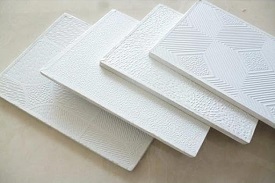 Gypsum Plaster Boards – Reinforced Gypsum Plaster Boards and Ceiling Tiles
Gypsum Plaster Boards – Reinforced Gypsum Plaster Boards and Ceiling TilesIS 2095 (Part 3):2022 |
Reinforced gypsum plaster boards and ceiling tiles are specialized construction materials designed to provide enhanced strength, durability, and performance compared to standard gypsum products. These boards and tiles feature embedded reinforcement materials such as fibreglass, cellulose fibres, or metal mesh, which significantly increase their structural integrity and resistance to impact, bending, and moisture. Reinforced gypsum plaster boards and ceiling tiles are commonly used in areas where additional strength and durability are required, such as high-traffic commercial spaces, industrial facilities, and seismic-prone regions. |
|
| Electrical Appliances for domestic water heating | |||
| 635 |
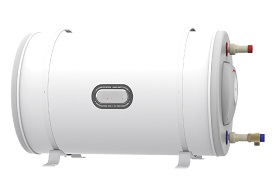 Appliances for stationary storage type electric water heaters
Appliances for stationary storage type electric water heatersIS 302 (Part 2/Sec 21): 2018 |
Appliances for stationary storage type electric water heaters encompass a variety of components and features essential for efficient and reliable hot water production and storage in residential and commercial settings. These appliances typically include a tank, heating element, thermostat, insulation, and safety features. |
|
| 636 |
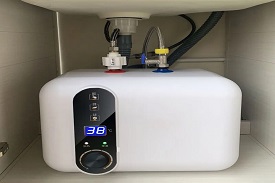 Appliances for electric instantaneous water heaters
Appliances for electric instantaneous water heatersIS 302 (Part 2/Sec 35): 2017 |
Appliances for electric instantaneous water heaters consist of compact units designed to deliver hot water on demand without the need for a storage tank. These appliances typically include a heating element, flow sensor, temperature sensor, control panel, and safety features. |
|
| 637 |
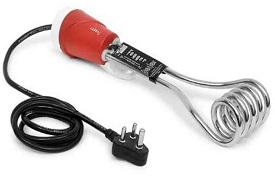 Electric Immersion Water Heaters
Electric Immersion Water HeatersIS 368: 2014 |
Electric immersion water heaters are compact and versatile appliances designed to heat water directly within a container or vessel. Consisting of a heating element encased in a protective sheath, these heaters are immersed directly into the water, where they generate heat through electrical resistance when connected to a power source. |
|
| 638 |
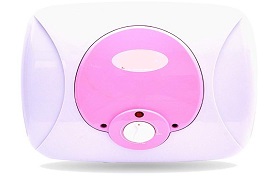 Stationary storage type electric water heaters
Stationary storage type electric water heatersIS 2082: 2018 |
Stationary storage type electric water heaters are essential appliances for providing hot water in residential and commercial settings. These heaters consist of an insulated tank, typically made of steel or glass-lined steel, which stores and heats water to a desired temperature for later use. |
|
| 639 |
s.jpg) Mini domestic water heater for use with piped natural gas (PNG)s
Mini domestic water heater for use with piped natural gas (PNG)sIS 17150: 2019 |
A mini domestic water heater designed for use with piped natural gas (PNG) is a compact and efficient appliance that provides hot water for residential use. These heaters typically feature a small storage tank or tankless design, allowing for quick heating of water directly from the gas supply. |
|
| V-Belt | |||
| 640 |
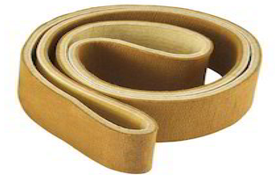 Endless V-Belts for Industrial Purposes-General Purpose
Endless V-Belts for Industrial Purposes-General PurposeIS 2494 (Part 1): 1994 |
Endless V-belts for industrial purposes, classified as general-purpose, are critical components used in various machinery and equipment for power transmission applications. These V-belts are constructed from durable materials such as rubber, polyester, or fabric-reinforced elastomers, designed to withstand high levels of tension, friction, and wear. |
|
| 641 |
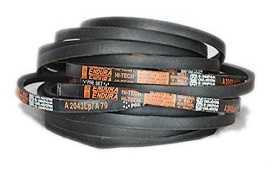 Endless V-Belts for Industrial Purposes–fire resistant and antistatic V-Belts
Endless V-Belts for Industrial Purposes–fire resistant and antistatic V-BeltsIS 2494 (Part 2): 1993 |
Endless V-belts tailored for industrial purposes, specifically designed to be fire-resistant and antistatic, play a crucial role in ensuring safety and reliability in environments where fire hazards and static electricity buildup are significant concerns. These V-belts are engineered using specialized materials and manufacturing processes to withstand high temperatures and resist ignition in the presence of flames or sparks.
|
|
| 642 |
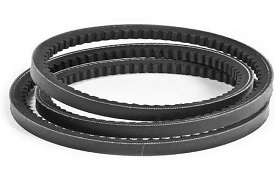 Transmission Devices –V–Belts endless narrow V-Belts for industrial use
Transmission Devices –V–Belts endless narrow V-Belts for industrial useIS 14261: 1995 |
Transmission devices, specifically endless narrow V-belts designed for industrial use, are integral components in power transmission systems across various sectors. These V-belts, characterized by their narrow profile and endless construction, are crafted from durable materials such as rubber or synthetic compounds to withstand high levels of tension, abrasion, and wear. |
|